Luxury Marble and Onyx Tile Solutions: The Ultimate Guide for Homeowners and Interior Designers
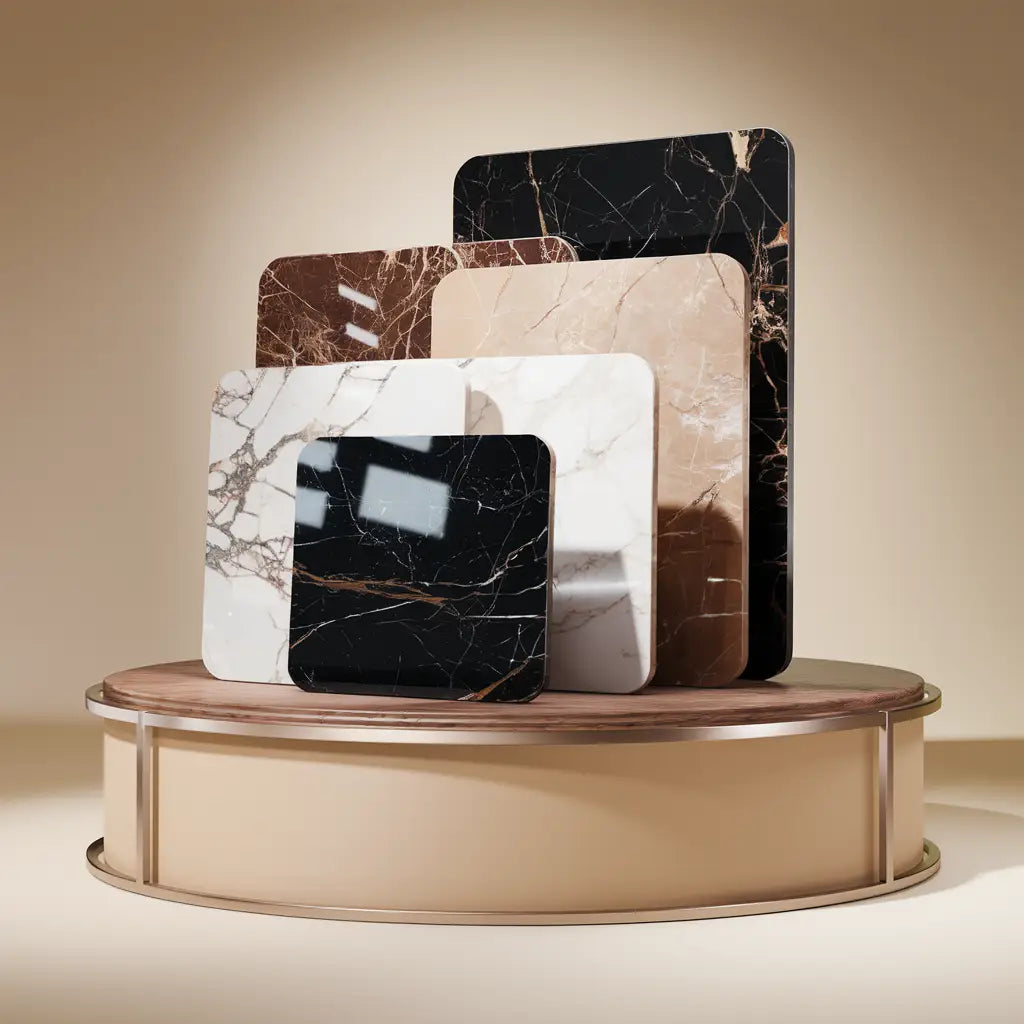
Introduction
Luxury interior design often starts from the ground up – quite literally. Few materials evoke elegance and opulence as effortlessly as marble and onyx tiles. From the timeless white marbles that built ancient palaces to the translucent onyx that glows with backlighting, these natural stones have a unique way of transforming ordinary spaces into works of art. Homeowners dreaming of a high-end bathroom or designers planning a show-stopping foyer will find that marble and onyx tiles offer an unparalleled blend of beauty, durability, and character. Each tile is a one-of-a-kind creation of nature, with rich colors and dramatic veins that can become the focal point of any room.
In this comprehensive guide, we delve into what makes marble and onyx tiles so desirable, explore various types and collections (from the classic Italian Carrara White to exotic Green Onyx and Rosso Levanto), and provide practical tips on design, installation, and maintenance. You’ll also find snippet-ready highlights and an FAQ section addressing common questions and concerns for buyers. Whether you're an interior designer seeking the perfect statement tile or a homeowner investing in your dream space, this report will equip you with expert insights on choosing and working with luxury marble and onyx tiles.
Let’s journey through the world of these exquisite stones and discover how Surfaces Galore’s curated collections can elevate your interiors to new heights of sophistication. From understanding the translucent allure of onyx
to appreciating the timeless appeal of marble used since antiquity
, by the end of this guide you’ll see why marble and onyx tiles are far more than mere building materials – they are statements of luxury and style.
Why Choose Marble and Onyx Tiles?
Marble and onyx have been synonymous with luxury for centuries. Marble is celebrated for its classic beauty and association with grand architecture – think of the gleaming white marble of the Taj Mahal or the black-and-white marble courtyards of Versailles
. Onyx, on the other hand, offers a more exotic appeal with its vivid colors and glowing translucency. When used as tiles in modern interiors, both materials instantly convey a sense of elegance and high-end design. Here are some compelling reasons to consider marble and onyx tiles for your project:
-
Unique Natural Beauty: Every marble or onyx tile is a natural artwork. Marble typically features graceful veining formed over eons, while onyx displays swirling patterns and bands of color. No two tiles are identical, ensuring your space has a unique character that synthetic materials can’t replicate.
-
Luxurious Aesthetic: Both stones have a luxe look that can elevate any setting. Marble’s polished shine and onyx’s jewel-like coloration are Instagram-worthy and often used in designer showpieces. In fact, designers today are embracing a wider palette of marble colors – from rosy reds to deep greens – moving beyond the standard whites
. -
Timeless Appeal: Styles come and go, but marble and onyx endure. Marble has been used in fine homes and monuments for millennia, yet it remains on-trend in contemporary design
. Onyx’s popularity has surged in recent years for those seeking something distinctive, but it too has a timeless quality when used thoughtfully. -
Adds Property Value: High-quality stone finishes are seen as upgrades in real estate. A bathroom clad in Italian marble or an entryway with onyx inlays can make a strong impression on buyers and potentially increase your home's resale value by signaling luxury.
-
Versatility in Design: Despite their high-end status, marble and onyx tiles work with many décor styles. Marble’s neutral tones can complement classic, modern, or rustic designs, while onyx’s vibrant colors create stunning accents in otherwise subdued palettes.
Snippet Highlights – Key Benefits of Marble & Onyx Tiles:
-
Natural, one-of-a-kind patterns and colors in each tile
-
Long history of use in luxury architecture (e.g. palaces, temples)
-
Translucent onyx can be backlit for dramatic lighting effects
-
Marble’s timeless elegance fits both traditional and contemporary styles
-
Premium finish that can boost interior design appeal and home value
Now, let's explore the characteristics of marble and onyx in more detail, and review the most popular types of each that are available through Surfaces Galore's collections.
Understanding Marble vs. Onyx Tiles
Before diving into individual stone types, it’s helpful to understand what sets marble and onyx apart as materials:
Marble is a metamorphic rock formed from limestone. It is composed mostly of calcite and is known for its relatively uniform hardness (typically Mohs 3-5 on the mineral hardness scale) and its trademark veining
. Marble is dense and durable enough for flooring and wall cladding, but it is also porous, meaning it can absorb moisture and is susceptible to staining or etching from acids. Marble comes in a wide range of colors – from pure whites and blacks to pinks, greens, and reds – depending on the minerals present during its formation. This stone has a polished elegance that has made it a classic choice for floors, bathrooms, foyers, and decorative accents.
Onyx (in interior design context) is a form of banded calcite or alabaster, sometimes called “onyx marble.” It is a semiprecious stone prized for its translucency and vibrant coloration
. Onyx forms in limestone caves and is typically softer than most marbles (around Mohs 3 in hardness)
. Because of this, onyx tiles are generally used in lower-traffic or vertical applications. What onyx lacks in hardness, it makes up for in visual impact: when sliced into tiles, it reveals dramatic bands of color (green, honey, white, pink, etc.) and it can be backlit to create a stunning glow. Onyx is often used for feature walls, fireplace surrounds, or powder room vanities where it serves as a natural piece of art.
In summary, marble tiles tend to be more suitable for high-use surfaces (floors, large wall areas) and offer a timeless, elegant look, while onyx tiles are chosen for accent and decor features where their translucence and rich colors can be showcased. Many designers will even pair them together – for instance, a marble floor with an onyx mosaic inset – to get the best of both worlds.
Quick Compare – Marble vs. Onyx Tiles:
-
Hardness: Marble is hard enough for floors; onyx is softer and best for low-wear areas
. -
Appearance: Marble usually has subtle to bold veins on a solid background; onyx has striking bands and can be translucent.
-
Colors: Marble ranges from white, black, gray to colored varieties (green, red); Onyx often comes in rich tones like green, amber, white, pink.
-
Light Transmission: Onyx can be illuminated from behind due to translucency, creating an ethereal glow
; marble is generally opaque. -
Usage: Marble for floors, walls, bathrooms, mosaics. Onyx for feature walls, backlit panels, decorative inserts, and niches (and occasionally flooring in low-traffic settings with proper support).
-
Care: Both need sealing and gentle cleaning; onyx being more delicate might require a bit more TLC (tender loving care) in use and maintenance.
With this understanding, let’s look at the standout stone types and collections that Surfaces Galore offers in the realm of luxury marble and onyx tiles. We will cover each stone’s visual characteristics, best uses, and why it might be the perfect choice for your design.
Exquisite Onyx Tile Varieties for Luxurious Interiors
Onyx tiles are all about making a statement. At Surfaces Galore, our onyx collections showcase the most sought-after varieties: Green Onyx, White Onyx (in both cross-cut and vein-cut), and Honey Onyx. Each type of onyx has its own charm and ideal applications. Below, we describe each onyx variety in detail and how it can be used to elevate interior designs.
Green Onyx – A Striking Choice for Luxurious Spaces
Green Onyx is a breathtaking stone known for its translucent quality and vibrant green hues
. This onyx features a base color ranging from soft pear green to deeper emerald tones, accented by dramatic white and gold veining. The richness of Green Onyx makes it impossible to ignore – it’s often chosen as a showpiece tile in upscale projects. Imagine a backlit Green Onyx wall in a modern hotel lobby or a spa-like bathroom alcove; the stone’s natural glow and color can transform the ambiance with a jewel-like radiance.
-
Key Features: Vivid green color with bold, contrasting veins; semi-translucent (can be backlit for stunning effect); each tile has a unique pattern that adds exotic flair.
-
Best Uses: Statement walls in living rooms or entryways, shower wall panels, decorative mosaic borders, and backlit features (like illuminated bar fronts or niches)
. Green Onyx tiles instantly draw attention, so they’re perfect wherever you want a “wow factor.” -
Why Choose Green Onyx? If you desire a tile that doubles as art, Green Onyx delivers. It adds a bold, exotic touch to interiors with its lush color, and when lit from behind, it creates an atmosphere that feels luxurious and otherworldly
. Our Green Onyx Marble collection at Surfaces Galore offers various tile sizes and mosaics to help you create that high-end, custom look.
White Onyx – A Classic Touch of Elegance
White Onyx is prized for its pure, creamy background accented by delicate veins in hues of gray, beige, or even pale gold
. It exudes a serene, ethereal beauty that fits perfectly in elegant, light-filled spaces. White Onyx brings the translucency of onyx without strong colors, making it a versatile choice that can complement many color schemes. This stone actually comes in two distinct cuts, which dramatically change its appearance (we’ll cover the special vein-cut next). In its standard cross-cut form, White Onyx displays soft, cloud-like patterns that lend a dreamy quality to the design
.
-
Key Features: Translucent milky-white base; subtle, cloud-like veining; when polished, it has a lustrous glow. Allows light to pass through in thin slices, giving opportunities for creative lighting.
-
Best Uses: White Onyx tiles are fantastic for adding a luxurious spa vibe to bathrooms – think shower wall inserts or feature panels that diffuse light. They are also used for stylish accent walls, fireplace surrounds, or even furniture inlays. Because of its light color, White Onyx can make smaller rooms (like powder rooms) feel brighter and more spacious.
-
Why Choose White Onyx? If you love the idea of onyx but prefer a subtle look, White Onyx provides that luminous, elegant atmosphere without a loud color statement
. It’s often used to create a calming, upscale mood – for instance, as a backlit wall in a master bathroom to mimic the effect of soft glowing alabaster. Surfaces Galore’s White Onyx collection includes both cross-cut and vein-cut selections, so you can pick the style that best suits your vision .
White Onyx (Vein-Cut) – Subtle and Modern Linear Beauty
Vein-cut White Onyx is the linear cousin of standard White Onyx. Instead of the cloudy patterns of a cross-cut, vein-cut onyx slices through the stone’s layers, highlighting long, flowing bands of veining
. The result is a striking striped or wavy pattern running across the tile. This cut gives White Onyx a more contemporary and structured look, often with parallel lines of gray or beige coursing through the creamy white background. It’s a popular choice for those who want a unique twist on white stone – maintaining elegance but with added visual interest.
-
Key Features: Linear veining pattern created by the vein-cut slicing; the bands can create a continuous flow when tiles are aligned, great for book-matched or continuous vein installations. Still translucent and backlight-friendly like other onyx.
-
Best Uses: Large format wall installations where you can really appreciate the continuous veins – e.g., a big shower wall or a feature partition. Vein-cut White Onyx is also used in modern settings; designers love it for contemporary feature walls or art panels, as it provides a natural pattern that almost looks man-made (in a good way). Also suitable for decorative trims or stripes in a wall design, to introduce a linear accent
. -
Why Choose White Onyx (Vein-Cut)? Choose this if you desire a sleek, modern aesthetic from a natural stone. The elegant stripes of vein-cut onyx can give a room a sense of continuity and flow. It’s subtle yet sophisticated – for example, a vein-cut onyx backsplash in a contemporary kitchen can echo the linear grain of modern cabinetry. It provides a sophisticated, seamless look that design-conscious homeowners and architects appreciate
. Surfaces Galore offers vein-cut options within our White Onyx collection, allowing you to create that continuous veined look in your installation.
Honey Onyx – Warmth and Luxury Combined
Honey Onyx features warm golden tones that immediately create a cozy and inviting ambiance
. True to its name, this stone ranges from honey-gold to amber, often swirled with white and hints of brown in its veining. Honey Onyx almost looks like captured sunlight; when light passes through it, the stone seems to glow with a golden radiance. This makes it a favorite for designers looking to add warmth and richness to a space without using dark colors. Honey Onyx tiles introduce a sense of comfort while still being unabashedly luxurious.
-
Key Features: Rich golden-yellow coloration with translucent depth; swirling patterns of white and amber that create visual texture. When polished, it has a glossy shine that enhances its amber glow; when backlit, it emits a soft golden light that can make a space feel intimate and upscale.
-
Best Uses: Honey Onyx is stunning as a feature wall tile, especially with backlighting – for instance, as the wall behind a freestanding bathtub or as the backdrop in a home bar area. Smaller applications like vanity backsplashes, niche insets, or tabletop inserts are also popular, where the stone can be illuminated to act as a functional art piece
. Additionally, honey onyx mosaics can be used as decorative strips or accents in floors or walls to add a touch of warmth. -
Why Choose Honey Onyx? If your design needs a touch of warmth and you want something more distinctive than beige marble, Honey Onyx is an ideal choice. It radiates warmth and luxury, making people feel welcomed yet impressed
. For example, a foyer with a honey onyx wall panel can cast a golden glow in the evenings when lit, creating an inviting entrance. Surfaces Galore’s Honey Onyx collection provides tiles and coordinated mosaics that let you infuse this amber elegance into various parts of your design.
(Surfaces Galore is proud to offer dedicated onyx collections – explore our Green Onyx, White Onyx, and Honey Onyx collections to find the perfect tiles and mosaics that suit your style, whether you aim for a bold focal point or a subtle touch of translucence. Each onyx tile is carefully curated for quality and beauty.)
Timeless Marble Tile Selections for Elegant Designs
Marble tiles are a cornerstone of luxury interior design. Surfaces Galore sources premium marbles from around the world, including classic Italian varieties and exotic colored marbles, each available in an array of tile sizes and patterns. Below we detail some of the most popular marble types you can consider: Italian Carrara White, Calacatta Gold, Thassos White, White Dolomite, Ming Green, Rojo Alicante, Nero Marquina, Rosso Levanto, and Empress Green. From pure white to deep black to vibrant green and red, these marbles span a spectrum of colors, allowing endless creativity in design. We’ll discuss what makes each unique and how to use them beautifully in your space.
Italian Carrara White Marble – The Timeless Classic
No marble list is complete without Italian Carrara White – perhaps the most recognized marble in the world
. Quarried from the Carrara region in Tuscany, Italy, Carrara marble has been used since ancient Rome for sculptures and architecture, and it remains a staple of luxury design today
. Carrara White Marble is characterized by a pristine white to light gray background with soft, feathery gray veining. It’s more subtle in its markings than some other marbles, which makes it incredibly versatile. This marble brings a sense of brightness and classic elegance to any space.
-
Key Features: Cool white base with delicate gray veining; generally uniform, gentle patterns (less dramatic than Calacatta). It often has a honed or polished finish that accentuates its smooth texture. Because of its historic prestige and consistent appearance, Carrara reads as refined and upscale without being overly bold.
-
Best Uses: Carrara White is truly multipurpose – it can be used on floors, walls, and countertops (tiles, not slabs) in bathrooms, kitchens, hallways, you name it. In tile form, popular uses include bathroom floor tiles, shower walls, wainscoting panels, and marble mosaics (like the ever-popular Carrara hexagon or basketweave mosaics). It’s an excellent choice for large areas, as its subtle veining won’t overwhelm the design
. For example, Carrara marble 12x12 or 18x18 tiles can cover a big bathroom floor and create an elegant, spa-like canvas. It’s equally at home in a modern setting or a classic one. -
Why Choose Carrara White? Carrara offers that high-end Italian marble look at a relatively accessible cost compared to rarer marbles. It complements both traditional and modern interiors effortlessly
– pair it with white fixtures and chrome in a contemporary bath, or with dark wood cabinetry in a traditional kitchen for a striking contrast. Its timeless reputation means it won’t go out of style; a Carrara marble tile installation will look just as elegant decades from now. Surfaces Galore’s Carrara White Marble collection includes not only tiles in various sizes (from 3x6 subway up to large format) but also coordinated pieces like baseboards and even switch plate covers, so you can achieve a seamless, luxury finish throughout your space.
Calacatta Gold Marble – The Epitome of Luxury
If Carrara is the subtle classic, Calacatta Gold is the showstopper. Hailing also from Italy (often the Apuan Mountains near Carrara), Calacatta Gold Marble is revered for its brilliant white background and bold, striking veins of gray and gold. This stone immediately reads as luxurious and is frequently seen in high-end design magazines and luxury hotel interiors. The gold undertones in its veining give Calacatta an especially rich and warm detail that sets it apart from other white marbles. It is rarer and generally more expensive than Carrara, but the visual payoff is significant – it truly is the epitome of marble luxury
.
-
Key Features: Bright white field with dramatic veining that can range from gray to beige-gold. The veins are typically thicker and more pronounced than those in Carrara
. Calacatta also often has larger, more open areas of white, which creates a striking contrast with the bold veins. When polished, the stone’s contrast and colors become even more dramatic. -
Best Uses: Because of its bold pattern, Calacatta Gold is often used in feature applications – such as a feature wall in a lobby, a book-matched wall panel in a master bathroom, or a fireplace surround that you want to draw attention. In residential design, Calacatta Gold tiles make stunning bathroom floors and shower walls for those looking to create a “five-star hotel” vibe at home. It’s also popular as a backsplash tile in luxury kitchens (imagine a full-height Calacatta backsplash adding drama to a white kitchen). Even smaller accents, like a Calacatta mosaic behind a stove or as a border inlay in a floor, can infuse a space with high-end flair.
-
Why Choose Calacatta Gold? If you desire a statement piece marble that telegraphs luxury and exclusivity, Calacatta is your marble. It has an unmistakable high-end look – in fact, designers often use it to instantly elevate a design from nice to breathtaking. The rich golden veining provides warmth that complements fixtures in brass or gold tones beautifully. Despite being a classic marble, Calacatta is actually a current trendsetter; it’s frequently highlighted in design publications as a go-to for opulent interiors
. Keep in mind it pairs best with simpler surrounding materials so it can shine. Surfaces Galore’s Calacatta Gold Marble collection offers tiles and coordinated mosaics that allow you to incorporate this luxury material, whether you choose to do a whole floor or just a decorative accent.
Thassos Marble – Pure White Perfection
Thassos Marble, quarried from the island of Thassos in Greece, is famed for being one of the purest white marbles available in the world
. It is a brilliant, bright white with very minimal to no visible veining. This makes it incredibly desirable for ultra-clean, modern designs or any space where pure white is the goal. Thassos can almost look like engineered stone because of its uniformity, but it’s 100% natural. Its crystalline structure gives it a beautiful sparkle under light. For those looking for a neutral yet ultra-luxe tile, Thassos is a top contender.
-
Key Features: Dazzling white color; generally no large veins, though you might see tiny sugar-like crystals or an occasional light gray hint. It has a high reflective quality – a polished Thassos tile can almost glisten. Because it’s so white, it bounces light around a room, often making spaces feel brighter and more open.
-
Best Uses: Thassos marble tiles are popular for sleek contemporary bathrooms, often used floor-to-ceiling for a monochromatic, spa-like effect. They are also used in combination with other marbles as a contrast – for example, pairing Thassos with a black marble (like Nero Marquina) in a checkerboard or stripe pattern for a classic black-and-white motif. Thassos mosaics (like penny rounds or hexagons) make gorgeous shower floors or backsplash details if you want texture without color. Also, because of its purity, Thassos is a frequent choice for waterjet cut patterns combined with other colored stones (its neutrality allows other patterns to pop while it provides a crisp outline or background).
-
Why Choose Thassos? Thassos offers a level of brightness and purity that few other stones can match
. Use it when you want an absolutely clean canvas or a very modern, gallery-like space. It’s perfect for minimalistic designs that emphasize form and light. Additionally, if you're aiming for that Mediterranean luxury look (all white everything, sun-drenched interiors), Thassos marble brings Greek island sunshine vibes in tile form. At Surfaces Galore, our Thassos White Marble collection includes polished tiles, mosaics, and even specialty pieces, so you can carry this pure white look across floors, walls, and detailed trim work with ease.
White Dolomite Marble – A Durable White Stone
White Dolomite, sometimes known as Bianco Dolomite, is a high-quality white marble (technically a dolomitic marble) that is prized for both its aesthetic and its durability
. It typically has a milky white background with subtle gray veining, similar in appearance to Carrara but often slightly warmer or more uniform. Dolomite marble contains a bit more magnesium, which can make it slightly harder and less prone to etching than typical calcite marbles. This means White Dolomite can be a smart choice for areas where you want a white marble look but with a tad more resilience.
-
Key Features: Soft white to ivory background; light gray veins that are usually fine and wispy. The pattern is often gentle and consistent, giving an overall calm and clean appearance. It is available in honed or polished finishes, each of which takes well due to the stone’s density.
-
Best Uses: White Dolomite marble tiles are excellent for flooring in high-traffic areas where a classic white marble is desired but durability is a concern. For instance, it’s a popular option for hotel lobbies or retail spaces looking for a marble floor that can handle foot traffic. In homes, it’s great for entryway floors, kitchen floors, and bathroom floors
. Additionally, it makes beautiful wall tiles and backsplashes, and its subtle pattern means you can use it in large expanses without it looking “busy.” It pairs nicely with other materials, too – designers often use Dolomite marble as a field tile with accent tiles of more colorful stones. -
Why Choose White Dolomite? Choose it when you want the classic beauty of a white marble with a bit more peace of mind in terms of wear. White Dolomite is often noted as being more durable than Carrara
, so it’s kind of the best of both worlds. It offers a similar look – elegant and soothing – and can withstand the rigors of daily use a bit better, which is especially beneficial for families or in kitchens. Surfaces Galore’s Bianco Dolomite Marble collection (also referred to as White Dolomite) provides a range of tile formats and even mosaics/borders, enabling you to design a space that is as practical as it is beautiful.
Ming Green Marble – A Refreshing, Natural Hue
Ming Green Marble introduces a splash of gentle color into the marble palette with its soft green tones
. This marble, often quarried in China (hence the name referencing the Ming dynasty), has a distinctive minty-green to pastel green base with white veining and occasional dark green accents. Ming Green brings a sense of tranquility and freshness reminiscent of nature – think of a cool jade or the color of sea glass. It’s an excellent way to step beyond the usual whites and grays while still maintaining the elegance of marble.
-
Key Features: Pale green background that can vary from light mint to a slightly more saturated green, interwoven with irregular white veins and patches. Some slabs or tiles may have hints of yellowish or darker green flecks, but overall Ming Green has a fairly uniform soft green appearance. It’s usually available in polished or honed finish; polishing tends to bring out a gentle sheen that highlights the green color.
-
Best Uses: Ming Green marble tiles are popular in bathrooms and spas for their calming color. They make beautiful bathroom floors or shower wall tiles, often used in combination with white marble accents (for example, a Ming Green shower with a band of Thassos white mosaic, or a ming green floor with white baseboards). It’s also used in pool bath areas or sunrooms to create a resort-like, natural ambiance. As a mosaic, Ming Green can be cut into arabesque or hexagon shapes and mixed with white marble to create delightful patterns for backsplashes or feature walls. Even a small backsplash of Ming Green behind a vanity can add that refreshing touch of color that sets the design apart.
-
Why Choose Ming Green? If you love green or want a gentle color accent that still feels classic, Ming Green is a perfect choice. It offers a unique, refreshing touch that stands out against neutral decor
. Many designers incorporate Ming Green in spaces meant for relaxation – its color is associated with tranquility and renewal. It also pairs beautifully with natural wood tones and plants, so it’s ideal if you’re aiming for a biophilic or nature-inspired design theme. Surfaces Galore’s Ming Green Marble collection ensures you have access to high-quality selections of this stone, including large tiles for sweeping green expanses or mosaics for intricate designs.
Rojo Alicante Marble – Rosy Red Elegance
Rojo Alicante is a stunning red marble from Spain, recognizable by its warm terracotta red base and striking white veins. In Spanish, “Rojo Alicante” literally means “Red from Alicante,” referring to the region it’s quarried. This marble’s deep rosy color instantly creates a feeling of warmth and luxury. It’s a bold choice compared to neutral stones, but used thoughtfully, it can lend a rich, classic atmosphere to interiors (it has been used in European villas and estates for centuries). Designers and homeowners are “rediscovering” Rojo Alicante as a way to introduce color in elegant ways
– it’s even considered a trendy choice for those seeking a statement marble beyond the usual whites.
-
Key Features: A warm red to reddish-orange background often described as terra cotta or coral red, with prominent white and light gray veining running through it
. The veining can be bold and web-like, creating a beautiful contrast against the rich background. Occasionally you might see small fossil marks or lighter patches, adding to its natural character. Polished Rojo Alicante has a high shine that makes the reds appear even deeper. -
Best Uses: Rojo Alicante is often used as an accent marble – for instance, as a feature floor inlay (a medallion or border) in an entry hall, or as the lower half of a classic bathroom wall (wainscoting) with white marble above. It also can be the star of a powder room: picture a powder bathroom with Rojo Alicante marble floor tiles or a feature wall, paired with brass fixtures – it radiates an Old-World luxury vibe. In contemporary designs, some daring designers use Rojo Alicante tiles for entire bathrooms or dining room floors to create a warm, enveloping space; balancing it with neutral furnishings and walls can make it very chic. Due to its strong color, a little can go a long way – even a fireplace surround or a countertop made of Rojo Alicante tile can become a focal point.
-
Why Choose Rojo Alicante? If you want to make a luxurious statement with color, Rojo Alicante delivers a look that few others will have. Its rosy-red hue and bold veins have been described as having a renaissance – designers are again embracing richly colored marbles like this to create personalized, memorable interiors
. It brings warmth that marble like Carrara cannot, and it pairs excellently with earth tones and gold accents. Surfaces Galore’s collection of Rojo Alicante Marble provides access to this Spanish treasure in tile formats, allowing you to introduce its charm to floors, walls, or any surface that could use a touch of red elegance.
Nero Marquina Marble – Dramatic Black and White Contrast
Nero Marquina, sometimes called Negro Marquina, is a legendary black marble from Spain known for its rich black color and striking white veining. If you think marble is only white or light, this stone will change your mind. Nero Marquina offers the classic beauty of marble in a high-contrast package: a deep, jet-black backdrop with thunderbolt streaks of white. It has been a favorite for sophisticated, dramatic designs, often used in checkerboard floors or as a contrast with white marble. In the current design landscape, black and white marble combinations are seeing renewed appreciation as a timeless yet bold look
.
-
Key Features: A deep black base (often very uniform and dark) with sharp white veins that crisscross the stone
. The veins can be thin and spiderweb-like or thicker, but they are typically high contrast. The black color of Nero Marquina is one of the purest blacks found in natural stone, which is why it’s so prized. When polished, it achieves a mirror-like surface that reflects light, giving it a sense of depth and luxury. -
Best Uses: Nero Marquina is commonly used in floor patterns – for example, paired with a pure white marble (like Thassos or Carrara) to create classic checkerboard floors, cabochon patterns, or borders. A black-and-white marble foyer in Nero Marquina and Thassos screams Parisian elegance and has truly timeless appeal
. It’s also used by itself for dramatic effect: a bathroom with Nero Marquina floor-to-ceiling is moody and sumptuous (though one might break it up with chrome fixtures or light-colored vanity to balance). Nero Marquina tiles make stunning fireplace surrounds, feature walls, or even tabletops. In modern designs, you might see a striped effect using black and white marble tiles alternating, creating a bold geometric statement that actually harkens back to ancient Greek and Roman uses of black and white stone . -
Why Choose Nero Marquina? For those unafraid to go dark, Nero Marquina offers dramatic elegance. It creates the ultimate contrast and can be both classic and modern depending on how you use it. Black marble instantly adds a sense of opulence and formality to a space. Additionally, black can anchor a design – using Nero Marquina on a floor with lighter walls can ground the room and highlight the architecture or furniture. According to design experts, black-and-white marble patterns are “endlessly captivating” and have enduring appeal because even ancient designers used them to great effect
. Surfaces Galore’s Nero Marquina Marble collection includes polished and honed options, allowing you to either maximize the dramatic shine or opt for a softer matte black elegance as desired.
Rosso Levanto Marble – Rich Burgundy Luxury
Rosso Levanto is a deep burgundy-red marble, historically quarried in Italy (Liguria) and also in Turkey, known for its intense wine-red color with white veining. This marble’s name, “Levanto,” comes from an Italian locale, and it has been used in classic European interiors for ages. Rosso Levanto has a majestic quality – the combination of its dark red hue and bright white veins gives a very regal impression, almost like looking at a slab of red wine with lightning streaks. It’s a fantastic choice for adding color in a way that still feels anchored and richly sophisticated.
-
Key Features: Deep red to reddish-purple background (often described as burgundy or even chocolatey red) with sharp white veins and sometimes light gray areas
. Some pieces of Rosso Levanto are brecciated (meaning they show fragments of different colors cemented together, which can give a dramatic, puzzle-like pattern), but generally in tile form, you’ll see the dominant red with crisscrossing white lines. The polished finish is most common and it gives a gorgeous gloss that enhances the depth of the red. -
Best Uses: Rosso Levanto is often utilized similarly to Rojo Alicante as an accent or feature marble. It works beautifully for tabletops, fireplace surrounds, or powder room floors, where you want an unexpected pop of rich color. It can create a very cozy yet luxurious atmosphere – for example, a library or study with Rosso Levanto floor tiles or a fireplace can feel like a refined old-world club. It also pairs nicely with green marbles (like Empress Green or even Ming Green) for a high-contrast color scheme – think classic motifs or inlays that combine red and green stone for dramatic effect. For a bold design, some might do a bathroom with Rosso Levanto wainscoting and white marble above, giving a lush two-tone wall. This marble is also used in mosaic form for decorative borders, adding a “stripe of wine red” to a neutral floor or wall.
-
Why Choose Rosso Levanto? Rosso Levanto is ideal if you want a luxury material that stands apart due to its color. It provides that touch of royal allure with its deep burgundy shade and striking veins
. People often fall in love with this stone because it’s reminiscent of fine wine or a winter sunset – it has warmth and depth. In design trends, colored marbles like Rosso Levanto are being highlighted as ways to create truly unique personal spaces . Also, because it’s darker, it can be more forgiving of slight stains or wear, making it practical for areas like floors or vanity tops (still, it’s marble, so care is needed). Surfaces Galore’s Rosso Levanto Marble collection brings you this breathtaking stone in tile formats, enabling you to craft features that will undoubtedly become conversation pieces in your home.
Empress Green Marble – Emerald-Hued Sophistication
Empress Green (also known as China Green or Oriental Green in some markets) is a luxuriant dark green marble with lighter veining, quarried in China and other parts of Asia
. As the name suggests, it has an imperial quality – the color is rich like an emerald or deep forest, and it’s accented by veins and clouds of lighter green and white. Empress Green Marble infuses interiors with a connection to nature’s lush hues while still delivering the polish and elegance of marble. Lately, designers have been embracing green stones like this for their biophilic design appeal – bringing the calming and invigorating effects of green into indoor spaces in a high-end way
.
-
Key Features: Deep hunter or forest green background with variegated lighter green and cream-white veins throughout
. The patterns can be broad and sweeping or fine; often you’ll see large areas of dark green with wispy lighter streaks, and occasional white vein clusters. The overall look is reminiscent of a verdant forest canopy seen from above. Polishing brings out a beautiful luster in the dark green, while a honed finish will give it a softer, matte olive appearance. -
Best Uses: Empress Green Marble tiles are wonderful for creating statement walls or floors that bring drama and color. A popular application is a feature wall in a lobby or living space – for example, a floor-to-ceiling fireplace wall clad in Empress Green can be absolutely stunning, especially paired with gold or brass hardware (green and gold is a classic luxury combo). In bathrooms, Empress Green can be used for shower walls or floor accents to create a spa that feels close to nature. It’s also frequently used in entryways – imagine stepping into a foyer with Empress Green marble flooring or an inlaid medallion; it sets a tone of richness right at the threshold. This marble can also be cut into geometric mosaics (squares, hexagons) and used as a backsplash or an accent stripe, adding a jewel-tone band to a neutral field.
-
Why Choose Empress Green? Empress Green is all about bold sophistication. Its emerald hue has been highlighted by designers as a rediscovered favorite for adding drama
. Green is associated with prosperity and tranquility, and using a rich green marble merges those psychological benefits with high-end design. If you have a space with good light, the dark green will contrast beautifully and not feel too heavy – for instance, in a white bathroom, an Empress Green shower niche or accent wall can be the element that takes it from ordinary to extraordinary. Surfaces Galore’s Empress Green Marble collection provides high-quality tiles of this marble, vetted for consistent color and pattern, so you can be confident in using it for impactful designs. As always, we recommend getting enough material in one lot for color consistency, as natural variation is a part of its beauty.
(By showcasing marbles ranging from bright white to black, and from green to red, Surfaces Galore offers a rainbow of luxury stone options. Whether you stick to one favorite or combine a few, these marble collections allow you to create designs that are truly your own. Many of our clients mix and match – for instance, a checkerboard floor with Thassos White and Nero Marquina, or a waterjet mosaic blending Carrara, Calacatta, and Empress Green for a floral pattern. The possibilities are endless, and each stone’s story and character will shine in your project.)
Design Inspiration and Applications
Now that we’ve covered the individual stone types, let’s talk about how to incorporate marble and onyx tiles into your interior design effectively. Luxury materials like these offer immense design potential. You can use them singularly for a bold monochromatic statement or combine them for artistic patterns and contrasts. Below are some design ideas, trends, and tips to spark your creativity, complete with snippet-ready highlights for quick takeaways.
Creating Timeless Patterns and Combinations
One classic approach to using marble is to employ timeless patterns that have been loved for generations. For example, a black-and-white checkerboard floor using Nero Marquina (black) and Thassos or Carrara (white) marble is a design dating back to ancient Greece and Rome, yet it still captivates today
. Such a floor in a foyer or kitchen instantly exudes elegance and a sense of history. Likewise, a striped floor or wall alternating two marble colors (like black and white, or green and white) can create a bold geometric feature that anchors a room. Interior designers note that these high-contrast stone patterns are enduring in appeal, managing to be both classic and strikingly modern at the same time
.
-
Timeless Marble Patterns:
-
Classic black-and-white checkerboard floors (e.g., Nero Marquina + Thassos) for entryways and bathrooms
. -
Bold stripe or chevron patterns using contrasting marble colors for contemporary flair.
-
Intricate mosaic rugs mixing multiple marbles (e.g., Carrara, Rosso Levanto, Empress Green) for a custom touch.
-
Beyond black and white, consider combining neutral marbles with colored ones for tasteful accents. For instance, a border of Rojo Alicante or Rosso Levanto marble around a field of creamy White Dolomite on a floor can introduce warmth and frame the space. Similarly, inserting a Green Onyx mosaic band within a Carrara marble shower wall can draw the eye and create a focal point niche – the translucence of the onyx will stand out against the opaque marble.
Another creative combo is using onyx and marble together in patterned mosaics. Surfaces Galore offers unique designs such as the Bari Set, which combines Green Onyx and Carrara White tiles in a polished checkerboard pattern to stunning effect
. This kind of set shows how contrasting stones can be artfully paired: the vibrant green onyx squares pop next to the elegant white marble rectangles, achieving a balance of color and classic design. Incorporating pre-designed mosaic sets or waterjet patterns that include both marble and onyx is an excellent way to get a luxurious, custom look without needing to design it from scratch.
Feature Walls and Backlighting Magic
If you really want to create a wow moment, use onyx tiles for a feature wall with backlighting. As discussed, onyx is translucent and can be lit from behind to emphasize its patterns
. A backlit Honey Onyx wall in a dimly lit room, for example, emits a warm glow reminiscent of a sunset – perfect for an intimate lounge or a home theater bar backdrop. Green Onyx, when backlit, can create a dramatic emerald illumination. White Onyx backlit panels in a bathroom can serve as both light source and art, perhaps behind a tub or vanity mirror.
For backlighting, LED panels or strips are installed behind the onyx (usually the onyx is mounted on a glass or acrylic backing for support). The effect can be mesmerizing and is a hallmark of ultra-luxury interiors. Think of high-end hotel lobby bars or spa walls – often you’re looking at backlit onyx. Even in residential projects, a small backlit onyx backsplash or niche can elevate the whole space. For instance, an onyx tile backsplash behind a liquor display in a home bar, illuminated softly, turns the bottles into glowing jewels. Surfaces like Honey Onyx and White Onyx are favorites for these applications because of their lighter colors and warm tones that diffuse light beautifully
.
-
Onyx Feature Wall Tips:
-
Use backlighting behind onyx tiles to create an ethereal illuminated wall
. -
Popular locations: bar backsplashes, fireplace surrounds, shower walls, and entry niches.
-
Ensure even lighting (LED panels) and consult an electrician for dimmable options to adjust the mood.
-
When using onyx or even strongly patterned marble on a feature wall, let that wall be the star and keep other walls more subdued. This contrast will ensure the feature doesn’t get visually “lost.” For example, if you install an Empress Green marble fireplace wall, you might paint adjacent walls a complementary soft neutral or leave them in a simple texture, so all attention falls on the marble’s color and veining. Lighting is also key: highlight feature walls with angled spotlights (in addition to backlighting for onyx) to bring out the texture and drama at night.
Bathrooms and Spas – A Showcase for Stone
Bathrooms are one of the most popular areas for marble and onyx tiles, and for good reason. Natural stone instantly upgrades a bathroom to a spa-like retreat. Here are some ideas to use these materials in bathrooms:
-
All-Marble Luxury Bathroom: Use one marble (or a harmonious mix) on every surface. For example, an all-Carrara bathroom: 12x12 Carrara tiles on the floor, 3x6 Carrara subway tiles on the walls, Carrara mosaics on the shower floor. Add a few accents of Calacatta Gold in a mosaic stripe or niche to highlight areas. The result is a cohesive, bright, and elegant space that feels like a high-end hotel bath. White marbles like Carrara, Calacatta, or Thassos are perfect for this approach, creating a clean canvas you can accessorize with almost any metal finish or color of towels.
-
Feature Shower Wall: Choose one wall of your shower (usually the one opposite the glass entry or with the fixtures) to adorn with a dramatic stone. You might do the entire wall in a vein-cut White Onyx, so the shower becomes a visual centerpiece with its linear flowing design – especially gorgeous in a glass shower where it’s fully visible. Or, use a slab-look arrangement of Calacatta Gold tiles (book-matching the veins if possible) on that wall for a vein-capped vista. The other walls can be simpler (like plain large-format tiles or glass) to let the feature shine. A Honey Onyx or Green Onyx feature shower wall with backlighting can turn shower time into a transcendent experience, bathing the user in a gentle glow.
-
Mosaic Accents and Floors: Natural stone mosaics on shower floors not only provide slip resistance due to the grout lines, but also allow creative patterns. You could use a Ming Green penny round mosaic on the shower floor for a pop of color underfoot, coordinating with Ming Green chair-rail trim along the walls. Or use a marble mosaic with mixed materials (e.g., a waterjet mosaic that includes Thassos, Carrara, and maybe a touch of onyx) as a backsplash behind the sink or in the wall niches. This adds detail and craftsmanship that is very luxurious. Surfaces Galore often highlights projects where small mosaics of Thassos and Nero Marquina create a captivating floor that echoes classical designs yet feels fresh.
-
Vanity Tops and Trim: While our focus is tiles (not slabs or countertops per the scope), you can still use tiles to create a vanity top or trim. For instance, large 12x24 marble tiles can be used to clad a built-in tub surround or the sides of a vanity. Pencil trims and baseboards in matching stone (many of our collections include these accessories) give a professional finished look. A baseboard of Nero Marquina in a white marble bathroom can elegantly frame the room, or vice versa – a Thassos baseboard in a colored marble room adds a crisp outline.
One thing to remember in bathrooms is to balance aesthetics with practicality: polished marble can be slippery when wet
, so for floors, consider a honed finish or use smaller format tiles/mosaics which increase the grout traction. Also be prepared to seal and maintain the stone (discussed in the maintenance section) to keep it looking pristine in wet conditions.
Living Areas and Backsplashes as Art Pieces
Marble and onyx tiles aren’t just for bathrooms and floors; they can be used as artful elements in living rooms, kitchens, and more:
-
Kitchen Backsplash: A full-height marble backsplash behind a range can be the showpiece of a kitchen. Calacatta Gold is a favorite for this application, making an otherwise utilitarian space feel like a gourmet showcase. Alternatively, using a mosaic of mixed marbles (like a chevron pattern of Carrara and Bardiglio, a gray marble) can add texture and interest. For the truly bold, an onyx backsplash with backlighting under the cabinets can act as both task lighting and visual allure – imagine a Honey Onyx backsplash softly glowing while you entertain guests in the kitchen; it’s a conversation starter for sure. (Just be mindful to seal well and possibly cover the onyx with a clear shield near the stove to protect from grease). Surfaces Galore is not responsible for any third-party lighting products you choose, but we can certainly supply the stone that pairs well with them.
-
Fireplace Surround: Tiling a fireplace surround (and even the hearth) with marble creates a focal point in living or family rooms. A traditional look might use black marble on the hearth and white around the fireplace opening. A modern twist could be cladding the entire wall above the fireplace to the ceiling in a single marble type for a monolithic, contemporary look. For example, book-matched Rosso Levanto tiles over a fireplace can turn it into a dramatic artwork. If the fireplace is not used (or is electric/LED), you could even use onyx on a fireplace wall and backlight it for a faux-fire glow year-round. Always check heat ratings for any adhesives or products used near working fireplaces (and again, note that Surfaces Galore supplies the stone but any special installation materials or techniques should follow manufacturer guidelines – we are not responsible for those third-party products or their performance).
-
Furniture and More: Think beyond floors and walls – marble tiles can be used to top furniture (like a coffee table or side table inlay), or as stair risers for a dramatic staircase. A trending design in luxe interiors is to have stone wainscoting in hallways – that is, the lower 3 or 4 feet of the wall tiled in stone, with wood or wallpaper above. Using something like Empress Green or Nero Marquina as wainscot in a corridor, capped with a nice chair-rail trim piece, can make even a transition space feel like part of the luxury design.
-
Real-Life Inspiration: Designers have done incredible things with these materials. For instance, at the 2021 Kips Bay Designer Show House in Dallas, one designer created an unforgettable wine cellar clad entirely in pink onyx, making it a glowing jewel-box of a room that people still talk about years later
. This goes to show that using onyx or colored marble in unexpected places (like a wine room or closet) can turn a functional space into a showcase. Another example from Architectural Digest: in a Los Angeles home, a designer installed an onyx sink in a powder room as a functional art piece, proving how a single element of onyx can elevate a whole room’s design . Take cues from such high-end projects – a little boldness with stone can yield stunning, magazine-worthy results.
Snippet Idea – Trending Uses:
-
Colorful marbles (e.g., rosy Rojo Alicante, emerald Empress Green) are making a comeback as bold accents
. Don’t shy away from using them in visible areas like entry floors or powder rooms. -
Onyx isn’t just for lighting – even unlit, a slab or tiled panel of onyx (green, honey, white) can serve as natural artwork due to its dramatic pattern. Frame a large piece on a wall for an artistic statement.
-
Mixing stone with metal inlays is another luxe trend – e.g., a marble floor with thin brass inlay lines for added glamour (this requires precision cutting and is a specialty installation).
Practical Design Tips
-
Plan Your Layout: Especially for stones with veins (like Calacatta, vein-cut onyx, etc.), lay out the tiles ahead of time to create a pleasing flow. You might want to align veins or create book-matched patterns by flipping tiles. Many of Surfaces Galore’s collections are calibrated so veining can be continuous if you plan it – for example, vein-cut White Onyx tiles can be lined up so the veins run through from one tile to the next, giving the illusion of one big slab
. -
Order Extra Material: Always get some extra tiles (typically 10-15%) for future repairs and to allow selection during installation. Natural variation means some tiles will have more or less veining or color – a good installer will mix tiles from different boxes and choose the best arrangement. Having extra lets you exclude any piece that might not fit the desired look.
-
Consider Finish: Polished stone is reflective and dramatic, but honed stone has a soft elegance and is more slip-resistant. In contemporary designs, honed or matte finishes on marble are popular for a less formal vibe. For instance, a honed Calacatta floor will still have gorgeous veins but a subtler sheen. In contrast, polished onyx really shows off its depth. You can even mix finishes – maybe a polished marble border with honed field tiles for subtle contrast.
-
Sealing and Grout Color: Use a high-quality penetrating sealer on marble and onyx after installation to protect against stains (more on maintenance later)
. Also, consider your grout color carefully: a matching grout (white for white marble, etc.) will make the installation look seamless, while a contrasting grout will highlight each tile. Often with marble, unsanded grout is recommended for narrow joints to avoid scratching the stone . For example, with Carrara mosaics that have 1/16" gaps, use a white or gray unsanded grout for a clean look and to protect the marble’s polish .
Designing with marble and onyx tiles is an exercise in blending creativity with respect for the material. Let the stone guide you – often the choice of stone itself inspires the direction of the design (a particularly beautiful batch of Calacatta might beg to be used expansively on a wall, while a vibrant Green Onyx might inspire a nature-themed spa design). With the ideas above, you can confidently experiment and design a space that not only looks luxurious, but truly reflects a personalized style.
Maintenance and Care for Marble and Onyx Tiles
Owning a marble or onyx tiled surface is like owning a luxury car – it’s stunning to behold, and with proper care, it will serve you well for a very long time. Marble and onyx are natural stones, which means they have some porosity and sensitivity to certain substances. But fear not: maintaining them is straightforward if you follow a few best practices. In this section, we’ll cover how to keep your stone tiles looking pristine, including cleaning routines, sealing, and protective measures. We’ll also reference some reputable products and guidelines (with external links) so you know where to find the right cleaners and sealers. (Please note: Surfaces Galore provides the highest quality stone, but we are not responsible for third-party maintenance products you may use. Always follow manufacturer instructions on those products.)
Sealing: The First and Ongoing Line of Defense
Why seal? Marble and onyx have microscopic pores. Liquids, especially if left to sit, can seep in and cause stains or etching (dull spots from chemical reactions). A penetrating sealer fills those pores with an invisible barrier that repels water and oils, giving you time to wipe spills before they penetrate
. Sealers don’t make the stone shiny (that’s done by polishing); instead, they maintain the stone’s natural look while adding protection.
When to seal: It’s best to seal your marble/onyx right after installation (once the grout is cured) and then reseal it periodically. Many experts suggest resealing every 6-12 months for marble in wet areas or floors, and perhaps every 1-2 years for wall tile or low-use surfaces. If water no longer beads up on the stone, that’s a sign it may be time to reseal.
Choosing a sealer: Look for a penetrating (impregnating) sealer that is made for natural stone, and ideally one that is invisible (does not change the color). Some top brands include Miracle Sealants and Aqua Mix, both well-known for professional-grade stone care. For example, Aqua Mix Sealer’s Choice Gold is a highly recommended penetrating sealer suitable for marble and other porous stones
. It provides a natural look finish and is rated for food areas as well (important if you have a marble tile countertop or tabletop). Miracle Sealants 511 Impregnator is another popular choice – a premium-quality sealer used by many pros, known for deep penetration and long-lasting protection
. These products create a barrier that resists water, oils, and stains while allowing the stone to breathe.
When sealing, ensure the tile is clean and dry. Apply the sealer evenly (usually with a clean cloth or applicator), let it penetrate for the recommended time, then wipe off any excess before it dries on the surface. Usually two coats are applied for porous stones like onyx or light marbles. Always ventilate the area, and wear gloves/eye protection as recommended.
-
Essential Sealing Tips:
-
Seal marble and onyx tiles upon installation and reapply periodically (every 6-12 months is common).
-
Use a penetrating stone sealer (natural finish) – e.g. Miracle Sealants or Aqua Mix brands
. -
Always wipe off excess sealer; the stone should look dry after application, not glossy (sealers work below the surface).
-
Test if it’s time to reseal by sprinkling water: if it soaks in and darkens the stone, reseal; if it beads up, your seal is intact.
-
Daily Cleaning: Do’s and Don’ts
For routine cleaning of your marble and onyx tile surfaces, the key is gentle pH-neutral cleaning. Avoid harsh or acidic cleaners at all costs – substances like vinegar, lemon juice, bleach, or acidic bathroom cleaners can etch the surface of marble (dulling it permanently) and even mar onyx which is similarly calcium-based
. Also avoid abrasive scrubbers or powders that can scratch.
Do:
-
Use a soft mop or cloth with warm water and a few drops of pH-neutral stone cleaner or a mild dish soap (diluted). There are specialized stone cleaners that are safe for marble/onyx; for example, products by StoneTech (LATICRETE’s care line) or Miracle Sealants Tile & Stone Cleaner are formulated to clean without harming the stone. Even a simple mix of water and a tiny bit of dish soap can do the trick for regular wipe-downs – just avoid any soap that lists citrus or acid.
-
Wipe up spills promptly. Common household liquids like coffee, wine, fruit juice, tomato sauce, cola, vinegar, or citrus can all stain or etch marble if left too long
. Blot spills with a soft cloth or paper towel – do not wipe vigorously, as rubbing can spread the liquid. Blotting lifts most of the substance, then you can clean the area with mild soap and water. -
For floors, vacuum or sweep frequently to remove grit and sand, which can cause scratches if dragged underfoot. Use a vacuum without a beater bar (or one designed for hard floors) to avoid scratching.
Don’t:
-
Don’t use generic bathroom cleaners, tub & tile cleaners, or vinegar. These are often acidic or contain chelating agents that will degrade the stone’s surface. Marble is composed of calcium carbonate, which reacts with acid – the reaction dissolves a tiny top layer of the stone, leaving a dull spot (etch) that even sealer can’t prevent. Once etched, the shine can only be restored by repolishing the stone. So it’s best to prevent etching in the first place by using the right cleaner.
-
Don’t use abrasive scrub pads or steel wool. For tough residues, use a plastic putty knife or a non-scratch white nylon scrub pad gently, with plenty of water or cleaner to lubricate.
-
Avoid colored cleaners or bleach on light stones – some can leave stains or cause discoloration. For example, using bleach on black marble can sometimes lighten it unevenly, and using a blue glass cleaner on white marble can deposit blue dyes. Stick to clear, neutral pH cleaners.
A good stone cleaner will often say “safe for natural marble” on it. One we can reference is Miracle Sealants Stone & Tile Cleaner or Lithofin Easy Care – these keep the stone looking good without stripping sealer or causing hazing. As a bonus, Miracle Sealants and similar brands also make stone polish products for counters, but those are not typically needed for tiles on a wall or floor (they’re more for vanity tops).
Additionally, for grout cleaning, avoid strong grout cleaners that have acid (many grout haze removers have sulfamic or phosphoric acid – not safe for marble!). Instead, stick to the above gentle routine regularly, which will keep grout from building up too much dirt. If grout does discolor, use a pH-neutral or a peroxide-based cleaner for light grout, testing a small area first.
Pro Tip: Marble and onyx can scratch, so place protective pads under metal furniture legs, avoid dragging heavy furniture across a marble floor, and consider using area rugs or runners in high-traffic zones. Tiny grit underfoot is abrasive like sandpaper – keeping floors dirt-free goes a long way to preserve polish.
Handling Stains and Etches
Despite best efforts, life happens. You might get a wine stain on your marble bar floor, or a few etch marks near the sink from a rogue lemon slice. Here’s how to deal with these issues:
-
Stains: Most stains on marble are organic (food, drink) or oil-based. A handy trick for stubborn stains is to use a poultice – basically a paste that draws the stain out of the stone. For example, for a wine or coffee stain, you can mix a poultice of baking soda and water (to peanut butter consistency), apply it over the stain, cover with plastic wrap (with a few pinholes), and let it sit 24-48 hours. The baking soda will absorb the liquid stain from the pores. After it dries, you remove it and clean the area. There are also commercial poultice powders available. Oil stains (like from a kitchen splatter) might need a poultice with a solvent like mineral spirits or acetone. Always test gently and check resources – some high-authority home improvement sources like Bob Vila have guides on stain removal from marble that can be useful
.It’s critical to identify the stain type. Rust stains (from metal on marble) are very tough – specialized rust remover for stone (non-acidic, like certain brand products) might help, but often rust is stubborn. Ink or dye stains might be removed with hydrogen peroxide (for light marble) or acetone (for dark marble). Always do a small test area and be patient.
-
Etch Marks: An etch mark isn’t a stain; it’s physical damage to the surface (an acid essentially dissolved some of the calcium). Etches appear as dull, matte spots, sometimes lighter in color. Minor etching can be buffed out with marble polishing powder (a fine abrasive and chemical mix) – for instance, products containing tin oxide or special marble polish compounds can be used by hand to restore some shine. This is a bit more advanced; it might be wise to call a professional stone refinisher if large areas are etched. For small spots, some homeowners have had success with etch remover kits (often a powder you sprinkle on the etched spot and rub with a soft cloth, it re-polishes the stone). Just ensure any product is intended for calcite-based stones. Onyx will react similarly to marble with acids, and polishing onyx may be trickier due to its translucency – professional help is recommended if you have deep etches on an onyx tile.
The best cure, of course, is prevention: blot up acidic spills immediately (wine, citrus, soda, vinegar). Keep toiletries like perfume, nail polish remover, aftershave, etc., off of marble counters or shelves – they can spill or leak and cause etching/stains. Use a decorative tray to corral those items and protect the stone. In kitchens with marble tile backsplashes, be cautious with acidic splashes (like vinegar-based sauces).
Protective Measures
Beyond sealing and careful cleaning, here are some additional protective measures:
-
Door Mats and Rugs: If you have marble tile in an entryway, place quality mats at the exterior and interior of the door. Grit from shoes is a major scratch culprit. Mats will catch a lot of it. In bathrooms, a bath mat will protect marble floors from soapy water around the tub (soap can leave a filmy buildup over time if not cleaned).
-
Use Cutting Boards and Coasters: If you have a marble tile countertop or tabletop, always use cutting boards (never cut directly on marble – aside from scratches, you’ll get knife marks and possibly metal streaks) and use coasters under drinks to prevent ring marks from acidic beverages.
-
Furniture Pads: Under chairs, tables, or anything that sits on a marble floor, use felt pads or soft glides. This prevents scratching when furniture is moved. High heels can also scratch or even chip marble tiles – encourage a no-shoe or soft-sole policy in delicate areas.
-
Shower Maintenance: In showers with marble or onyx, squeegee water off the tiles after each use to minimize mineral deposits and soap scum. Marble is sensitive to hard water – over time, hard water can leave slight discoloration. By drying the tiles, you keep them pristine longer. Also, use mild, pH-neutral shampoo/soap if possible – some soaps can be alkaline and dull the stone. If you see any mildew, use a stone-safe mold cleaner (some mold cleaners are bleach-based which could etch colored stones; look for ones recommended for natural stone, or use a diluted peroxide solution carefully).
Recommended Products and Resources
To maintain a marble or onyx installation properly, it’s good to have a few specific products on hand:
-
Stone Cleaner: A daily cleaner like Aqua Mix AquaKleen or Miracle Sealants Tile & Stone Cleaner or even a homemade solution of a drop of Dawn in water. Use with a soft microfiber cloth.
-
Stone Sealer: As mentioned, Aqua Mix Sealer’s Choice Gold
or Miracle 511 Impregnator . These are usually applied yearly. -
Stone Polish (for counters): If you have marble countertops or a vanity, something like Granite Gold Polish or LATICRETE StoneTech Polish can enhance shine, but note this is different from repairing etches (it’s more of a cosmetic shine, not a sealer or restorer).
-
Poultice Powder: In case of stains, having a product like Miracle Sealants Poultice Plus or a generic poultice powder can be a lifesaver. But you can also use household baking soda for many stains as described.
-
Soft Tools: Soft white cloths, a suction cup squeegee for showers, a non-abrasive sponge, and a neutral pH soap.
High-authority references for marble care include the Marble Institute of America (now the Natural Stone Institute), which provides downloadable guides, and home improvement experts like Bob Vila. For instance, Bob Vila’s guide on marble flooring emphasizes promptly blotting spills and using good sealant as keys to keeping marble looking fabulous
.
Remember, the goal of maintenance is to preserve the stone’s natural beauty for the long term. With a bit of routine care, your marble and onyx surfaces will continue to wow guests and provide you with a sense of luxury every day. These stones can literally last a lifetime and beyond – just look at centuries-old marble floors in historic buildings that still shine. By following the guidelines above, you ensure that your investment in luxury tile continues to pay dividends in beauty and enjoyment.
Conclusion: The Enduring Value of Marble and Onyx Tiles in Design
In the world of interior design, materials come and go, but marble and onyx have proven to be timeless. From ancient palaces to modern penthouses, these stones have an unparalleled ability to imbue spaces with elegance, character, and luxury. By exploring their usage in various forms – whether it’s the classic appeal of Italian Carrara marble, the bold statement of Calacatta Gold, the pure brilliance of Thassos, or the magical translucence of Green Onyx – we see that there is a marble or onyx tile suited for every aesthetic and mood.
What truly sets marble and onyx tiles apart is their versatility and uniqueness. A polished marble floor can create a grand, reflective expanse that makes a room feel more expansive and important. A textured or honed marble feature can add subtle sophistication in a contemporary setting. Onyx tiles, used sparingly, can turn ordinary light into a mesmerizing display, offering that “wow” factor that guests will talk about. These materials aren’t just surface finishes; they become central elements of the design narrative of a space, often inspiring entire color schemes and decor choices around them.
We’ve discussed many practical aspects – from the importance of sealing to using coasters – but at the end of the day, the value of marble and onyx tiles goes beyond the technical. It’s in the experience they create. Walking into a bathroom clad in floor-to-ceiling marble gives one the feel of a private spa. Sipping a drink in a lounge with a honey onyx backlit bar feels like being bathed in golden light. These tiles can elevate daily life, making even routine moments feel just a bit more glamorous.
For homeowners, investing in marble or onyx tile is investing in a material that can increase the appeal and value of your home. Quality stonework is often a highlight in real estate listings, as buyers recognize and covet the luxury and durability it suggests. For interior designers, working with these materials allows the creation of high-impact spaces that photograph beautifully and age gracefully (often becoming more charming with time and patina).
Importantly, as with any valuable asset, choosing a trusted source for your marble and onyx is key. Surfaces Galore is committed to providing not only a wide selection of these premium marble and onyx collections but also the expertise to help you make the right choice for your project. We pride ourselves on quality and curation – every tile we offer is selected to meet high standards so that the outcome of your project is nothing short of breathtaking
. We also aim to inspire; we love seeing our customers combine stones like Green Onyx, Honey Onyx, Ming Green, Rojo Alicante, Nero Marquina, Rosso Levanto, and Empress Green in creative ways, adding depth and personality to their designs
.
As you plan your renovation or design, remember that marble and onyx tiles are materials that invite you to dream a little. They ask, “what if this room wasn’t just functional, but also extraordinary?” In answering that, you may find yourself creating spaces that not only look amazing in magazines or Instagram, but also make you happy every time you step into them.
In summary, marble and onyx tiles deliver enduring value through their beauty, their historical prestige, their ability to transform light and space, and their contribution to property value and enjoyment. They are a testament to nature’s artistry and when used thoughtfully, they become an integral part of your own story in your home or project. We hope this guide has equipped you with the knowledge and inspiration to use these materials with confidence and creativity.
Thank you for joining us on this exploration of luxury marble and onyx tile solutions. Whether you lean towards the classic whites of Carrara and Thassos or the vibrant colors of onyx and red marble, embracing these stones is sure to elevate your design to new heights of luxury and refinement. Surfaces Galore is here to support that journey – from selection to maintenance advice – ensuring your experience with marble and onyx is as smooth as the polished tiles themselves.
Frequently Asked Questions (FAQ)
To wrap up, here is a comprehensive FAQ section addressing common questions and concerns that homeowners and buyers often have about marble and onyx tiles. These snippet-ready Q&As provide quick insights and can help in decision-making and troubleshooting.
1. What is the difference between marble and onyx tiles?
Marble and onyx are both natural stones but differ in composition and appearance. Marble is a metamorphic rock (recrystallized limestone) known for its hardness (Mohs 3-5) and classic veining patterns. Onyx (for interiors) is a form of banded calcite, softer (around Mohs 3) and translucent with vivid banded colors
. Marble is generally opaque and used for floors and walls due to its durability, while onyx is prized for its translucency and dramatic hues, often used as backlit panels or decorative accents. Essentially, use marble for sturdy elegance and onyx for glowing visual impact.
2. What is the difference between Carrara and Calacatta marble?
Carrara and Calacatta are both Italian white marbles but have distinct looks. Carrara marble tends to be a soft grayish white with many fine, feathery gray veins. Calacatta marble is a brighter, clearer white with bolder, more dramatic veining that can be gray or gold
. Calacatta’s veins are thicker and more irregular, giving it a more luxurious, high-contrast appearance, often with hints of gold (hence “Calacatta Gold”). Carrara’s beauty is subtler, with a more uniform tone and less pronounced veins
.
3. Are marble tiles slippery when wet?
Polished marble tiles can indeed be slippery when wet
, similar to any polished stone or glazed tile. This is a concern especially in bathrooms or entryways. To mitigate this, you can use a honed (matte) finish marble, which is less slick, or choose smaller tiles or mosaics on floors (more grout lines provide traction). Additionally, using bath mats or runners in wet areas and promptly wiping up water helps. There are also anti-slip treatments that can be applied to stone, though they may slightly alter the sheen. For areas like shower floors, it’s recommended to use marble mosaics (e.g., 2” hexagon) so that the grout network provides grip and reduces slip risk.
4. Can marble and onyx tiles be used in bathrooms and showers?
Absolutely – both marble and onyx are commonly used in bathrooms, showers, and even steam showers, but they require proper installation and maintenance. Marble has been a go-to for luxurious bathrooms for ages (think marble showers, floors, even tub surrounds). Onyx can be used in showers as wall tiles or accents (it must be well-supported due to being softer). The key is to seal the stone thoroughly and ensure the installer uses proper backing and waterproofing (like cement board and a waterproof membrane) since stone is porous. Also use appropriate thinset (usually white mortar for light stones, see Q14) and grout. In showers, regular upkeep (squeegeeing water, gentle cleaners) is important to prevent soap scum or hard water stains. With these precautions, marble and onyx can create stunning spa-like showers – many high-end resorts feature them. Always note: onyx in a shower will show its translucency when water hits it (it can temporarily darken when wet, then dry out), which is normal.
5. Do marble and onyx tiles need to be sealed and how often?
Yes, sealing is highly recommended for both marble and onyx. A penetrating sealer fills the microscopic pores in the stone to help prevent stains
. You should seal after installation (before or right after grouting, per product instructions) and reapply sealer periodically. In a high-use or wet area, reseal every 6-12 months. In a dry area, every 1-2 years might suffice. You can test if the stone needs resealing by sprinkling a few drops of water – if the water beads on the surface, the seal is good; if it soaks in and darkens the stone, time to reseal. Always use a sealer specifically formulated for natural stone (e.g., an impregnating sealer from Miracle Sealants or Aqua Mix)
. This maintenance step will keep your marble/onyx much more resistant to stains and easier to clean.
6. How do I clean and maintain marble or onyx tile surfaces?
For day-to-day cleaning, use a pH-neutral cleaner or just warm water and a mild dish soap (diluted). Wipe with a soft cloth or mop. Avoid any acidic or abrasive cleaners – no vinegar, bleach, ammonia, or citrus cleaners, as these can etch marble/onyx
. Routinely sweep or dust floors to remove grit. In bathrooms, squeegee shower walls to reduce water spots. For tougher stains, use a poultice or a stone-safe cleaner. Also, ensure any cleaner you use is labeled safe for natural marble/stone. Products from reputable stone care brands (like StoneTech, Granite Gold, Miracle Sealants) are good bets. With gentle cleaning and periodic sealing, your stone will stay shiny and beautiful. (See the Maintenance section above for more detailed tips.)
7. Will marble or onyx tiles stain or etch (dull) easily from spills?
They can if unsealed or if spills are left too long. Staining: Marble and onyx are porous to some degree, so substances like red wine, coffee, tea, oil, etc., can seep in and leave a stain. Etching: Because they are calcium carbonate-based, acidic substances (lemon juice, vinegar, cola, ketchup, etc.) will chemically react and etch the surface – this looks like a dull or light spot, not a colored stain. Etches aren’t a “stain” you can wipe; it’s a minor surface damage that might need repolishing. The good news: sealing significantly helps slow down absorption of liquids, giving you time to clean up
. In practice, if you promptly blot spills, you often avoid most stains. Darker marbles or busy patterns also hide minor etches or stains better than plain ones. But for example, a polished white Carrara floor could get dulled spots from acidic spills if not careful. Use coasters under glasses on a marble bar or counter, and wipe any drips quickly. If etching does occur, a marble polishing powder or professional refinisher can often restore the shine. Summarily: they’re not impervious, but with care (seal, immediate cleaning), stains and etches can be minimized.
8. Are marble tiles durable enough for high-traffic flooring areas?
High-quality marble tiles properly installed are quite durable and have been used in high-traffic buildings (museums, hotels, etc.) for centuries. That said, marble is softer than granite or porcelain, so it can wear or scratch in heavy traffic over many years, developing a patina. Light colored marbles might show dirt or wear paths. For a busy household entry or a kitchen with heavy use, expect to see some dulling or tiny scratches over time, which can be re-polished if needed. Using rugs or runners in high-traffic spots is a good idea. Also, honed finishes won’t show wear as much as polished since they’re already matte. If durability is a top concern but you still want marble, consider a harder marble (some marbles are geologically denser) or a dolomitic marble like White Dolomite which is a bit more wear-resistant
. In summary, marble can handle high traffic but will require maintenance (occasional polishing, diligent cleaning) to keep it looking pristine. Many people actually appreciate the patina as it ages – think of old European marble floors that have a story in their wear. If you expect a perfect glossy floor forever in a busy hallway, that may be unrealistic; but marble can definitely last and remain beautiful in high-traffic areas with proper care.
9. Should I use onyx tiles on floors?
Onyx tiles can be used on floors, but with caution. Onyx is softer and more brittle than most marbles, so it’s generally recommended for low-traffic or decorative floor areas. Small onyx mosaic accents in a floor are fine, but large polished onyx tiles in a heavy traffic hallway might scratch or crack more easily. Onyx is best suited for floors that won’t see a lot of hard use – for example, a master bathroom floor (where you’re usually barefoot or in slippers) could be a candidate for Honey Onyx or White Onyx tiles to create a luxurious effect. But an entryway where people might drag dirt or grit – onyx might suffer. If you do use onyx on a floor, ensure the subfloor is very level and solid (onyx tiles are often thinner and need full support). Also opt for a honed finish if possible, as it will show scratches less. Many designers reserve onyx for walls and countertops, and use sturdier stone or porcelain for floors. In summary: yes, you can, but best in low-traffic or showcase areas and expect to pamper that floor (no shoes, regular cleaning, etc.). An alternative approach: use onyx in a floor medallion or “rug” inlay bordered by harder stone – it creates drama but the border protects it from direct traffic.
10. Can I use marble or onyx tiles for a kitchen backsplash?
Definitely. Marble backsplashes in kitchens are extremely popular (think white marble subway tiles behind stoves – classic!). Onyx backsplashes are less common but can be gorgeous, especially backlit under cabinets for a wow factor. For marble backsplashes, be aware of potential etching or staining from food: e.g., if you love to cook with turmeric or curry, a light marble could get a yellow stain if it splatters. Tomato sauce or vinegar-based sauces can etch if not wiped soon. Many people still choose marble for backsplashes and just are careful about wiping spills. Using a glossy sealant or having a bit of distance (like a high backsplash that’s not directly behind a stovetop) can help. Onyx backsplash: treat similarly – seal it, and be mindful of heat. Actually, an important note: onyx (and marble) tiles behind a stove should be fine with normal use, but they are not as heat-proof as ceramic tile. A sudden extreme heat or flame contact could thermally shock the stone or discolor it. Always use a backsplash panel when frying or heavy cooking (this is standard practice anyway). Also, grease can dull natural stone, so a mild degreaser that’s stone-safe is needed. Many clients choose marble or onyx for areas of the backsplash away from direct cooking mess, and perhaps use a stainless or glass behind the cooktop for heavy-duty protection. But overall, yes – a properly sealed marble or onyx backsplash is a stunning choice and with normal care (wiping splashes promptly, using gentle cleaners) it should remain a highlight of your kitchen.
11. What finishes are available for marble/onyx tiles and which should I choose?
Common finishes for marble and onyx tiles include polished, honed, and sometimes tumbled or brushed. Polished is shiny and reflective, bringing out the full color and veining of the stone; it’s great for walls or areas where you want a glamorous, formal look. Honed is satiny and matte, with little to no shine; it has a softer, contemporary feel and is more forgiving with slips and etches (etching on honed marble is less noticeable since it’s already matte). Tumbled finish is usually on smaller tiles or mosaics, giving a rustic, textured look with chipped edges (often seen in travertine or in mosaic blends). Brushed or antiqued finishes have a subtle texture, somewhere between honed and tumbled, adding character. For onyx, polished is most common to showcase translucency, though honed onyx exists for a diffused look. When choosing: use polished for vertical surfaces or low-traffic floors where you want maximum visual impact and don’t mind occasional re-polishing. Use honed for floors or countertops where slip resistance or a more casual look is desired. For example, a honed Carrara floor paired with polished Carrara wall tiles can look wonderful – the wall shines, the floor is safe. Tumbled or textured finishes suit more rustic or old-world designs (e.g., tumbled travertine mosaic floor in a shower). Keep in mind polished surfaces show scratches more, honed can show fingerprints or oils a bit (on a honed dark stone you might see a grease spot more until it’s cleaned). Many people love honed marble in kitchens because it “patinas” gracefully. So it really comes down to style and practical use: shiny = formal & bright; matte = modern & subdued; textured = rustic & slip-resistant.
12. Can I install marble or onyx tiles myself (DIY) or do I need a professional?
It depends on your skill level and the scope of the project. Marble and onyx tiles, especially larger formats or expensive materials, are less forgiving than ceramic. Challenges: They can be heavy, require very even substrate (especially large thin tiles like onyx which can crack if the floor isn’t level), and cutting them requires a good wet saw with a diamond blade for stone. Onyx in particular is brittle – cutting it can be tricky. Also, the aesthetic aspect: aligning veining, mixing tiles from different boxes for a uniform look, etc., takes an artistic eye. If you have tiling experience (have done ceramic/porcelain), you can DIY marble tile, but invest in the right tools and plan carefully. Use a white thinset mortar (to avoid staining from dark mortars) and possibly a medium-bed mortar for larger heavy tiles. You’ll also want to seal the tiles after install, which is straightforward. For onyx, consider hiring a pro because any mistakes (cracked tile, lippage where edges don’t line up flush, poor back-buttering leading to visible adhesive through a translucent tile) will be noticeable. Also, stone tile cutting produces dust and requires water – have a good safe workspace. Many DIYers successfully do marble bathroom floors or backsplashes. However, if your project involves complex patterns, expensive material where mistakes are costly, or critical areas like showers (where waterproofing is crucial), a professional tile installer with stone experience is recommended. They’ll also know how to handle tricky bits like not using metal tools that could scratch, etc. In summary: a handy DIYer can tackle a straightforward marble tile floor or simple backsplash; but for large areas, intricate designs, or onyx installations, professional installation ensures the best result.
13. What kind of grout should I use with marble/onyx tiles?
For marble and onyx, especially if polished, it’s generally best to use unsanded grout for joints 1/8” or smaller
. Unsanded grout is a smooth mixture without gritty sand, so it won’t scratch the surface of polished stone during application. Many stone tiles are set with 1/16” to 1/8” grout lines, which calls for unsanded anyway. If you have wider joints (like 1/4”), you’d traditionally use sanded grout, but avoid sanded on polished marble as the sand can scratch. In those cases, either keep joints small or use an epoxy or specialty grout. Epoxy grout (like LATICRETE Spectralock) can be used with marble – it’s stain-resistant and doesn’t need sealing – but be cautious: epoxy can potentially stain porous stone during installation (resins soaking in). If used, you might pre-seal the marble before grouting and do a test. Many installers stick with cementitious unsanded grout for marble to be safe. Color-wise, white or light gray is commonly used for white stones; color-matching the grout to the marble makes seams less visible. For dark marbles, a matching gray or black unsanded grout works – e.g., Laticrete 1600 “Marble Beige” unsanded grout is designed for polished marble, offering a non-abrasive, color-consistent result
. Also, after installation, seal the grout along with the tile (some grouts come pre-sealed or claim stain-proof, but a little extra sealing never hurts with natural stone). One tip: when grouting polished marble, grout can leave a haze – buff it off promptly with a soft cloth (don’t use acidic cleaners to remove haze!). In summary: unsanded grout, small joints, and color matched to stone is a safe bet for marble and onyx.
14. Do I need a special adhesive or thinset for installing marble or onyx tiles?
Yes, you should use a premium thinset mortar suitable for natural stone, and in particular it should be white for light-colored stones. Dark gray thinset can bleed through or shadow into translucent stones (like onyx or Thassos) – it’s a common mistake that can ruin the look. A white modified thinset (fortified with polymers for strength) is generally recommended. For larger heavy tiles (bigger than 12”), a “medium bed” or “large format tile” mortar is used to support the weight without sagging. Manufacturers like Mapei, LATICRETE, and Custom Building Products make mortars labeled for marble & stone. For example, LATICRETE 220 Marble & Granite Mortar is specifically formulated for one-step installation of large marble and stone tiles
. It helps support the tile and allows a thicker application to level out natural stone variations. If installing on a wall, sometimes a non-sag marble adhesive (like LATICRETE 4-XLT or Mapei Ultralite) is used to keep tiles from slipping down before curing. In addition, back-buttering each stone tile (applying mortar on the back of the tile as well as on the substrate) is standard for stone to ensure full coverage – this prevents voids behind tiles which can show as dark spots on translucent onyx and also gives the tile full support to avoid cracking. Summing up: use a high-quality white thinset, appropriate for the size of tile, and back-butter for full coverage
. Avoid mastic (pre-mixed adhesive) – those are not suitable for stone or moist areas. Always follow tile manufacturer recommendations; if in doubt, a mortar that explicitly says for “marble, granite, natural stone” is a good choice.
15. Will marble and onyx tiles increase my home's value?
In many cases, yes, high-end finishes like natural marble and onyx can increase a home’s appeal and potentially its market value. Buyers often perceive marble floors, marble bathrooms, or a marble foyer as luxury upgrades. A home with a master bathroom adorned in Carrara marble or a kitchen with marble tile backsplash may stand out in listings and attract higher offers compared to homes with standard ceramic tiles. That said, it’s also about taste – the increase in value is more likely if the marble or onyx installation is neutral, timeless, and well-maintained. Extremely personalized choices (like a bright pink onyx everywhere) might not have broad appeal. But generally, real estate agents will mention “marble bathroom” or “natural stone flooring” as a selling point. Also, marble and onyx, being natural and prestigious materials, lend a sense of “quality” to the home’s construction. It’s part of why you see them in luxury real estate descriptions. While we can’t put an exact dollar figure on it (as market conditions vary), these materials can certainly elevate the perceived luxury level of a property. As long as you care for them (buyers might be wary if they see etch marks or damage), they should remain an asset. So if you’re considering ROI, classic choices like Carrara, Calacatta, or neutral palettes used in key areas (kitchen, baths, entry) are a safer bet. And beyond monetary value, there’s the enjoyment value – living in a space that feels upscale can be worth it for many homeowners regardless of eventual sale.
16. Are marble and onyx tiles a timeless design choice or just a trend?
Marble in particular is timeless – it has been used for centuries and continues to be in style. Classic marbles (white with gray veins, black and white combos, etc.) are considered never to go out of fashion
. That’s why you’ll see Carrara or Calacatta in both traditional estates and modern penthouses. Onyx, with its bold look, has had ebbs and flows in popularity, but it’s often used in statement pieces that transcend trend because of its natural beauty. Currently, there’s a trend embracing more colorful marbles (greens, reds, etc.) in high-end design
, but even those have historical precedent. Rosso Levanto and Empress Green were used in Art Deco and classical designs, for example, and are resurging. So while certain applications might be “trendy” (like the recent wave of book-matched feature walls or floor-to-ceiling marble bathrooms in boutique hotels), the materials themselves are classic. Compare that to something like a specific tile pattern or color that might scream a certain decade – marble usually avoids that because of its natural variegation and neutral base. Using a well-regarded stone in a thoughtful way usually yields a design that ages gracefully. Therefore, investing in marble and onyx is generally safe for longevity of style. Even if design magazines shift preferences (say from all-white marble kitchens to mixes of stone), your quality marble installation will likely be seen as elegant for a long time. The key is selecting stones and patterns that complement your overall design; classic layouts (subway tile, large format grid, herringbone with marble) are timeless, whereas an overly elaborate pattern might date itself. But bottom line: natural marble and onyx have a certain eternal quality and will continue to be associated with luxury and taste in the future as they have in the past.
17. Will the marble or onyx tiles I receive look exactly like the showroom sample?
Each piece of natural stone is unique, so there will be variation in color and veining from sample to actual tiles. Showroom samples or photos give an overall idea, but expect some tiles to be lighter, darker, or have different vein patterns – that’s part of natural stone’s charm. For example, a Carrara sample might show moderate veining, but your batch could include some tiles with heavy veins and some almost pure white. Reputable suppliers like Surfaces Galore typically ensure the variation is within a acceptable range for that stone type (we often sort and grade stones). It’s wise to order a bit extra and do a dry layout before installation to arrange the tiles in a pleasing way, blending any extremes. With onyx, you might see differences in intensity of color banding from piece to piece. If consistency is critical for you, discuss with the supplier – sometimes you can request a certain lot or range. But generally, embrace the variation: it’s what makes the installation lively and not look like a printed copy. When your marble tiles are installed, the mixture of pieces creates a beautiful tapestry; no one piece will dominate. One tip: ask to see multiple samples or photos of the current lot in stock. At Surfaces Galore, we strive to accurately represent our stone collections – for instance, our Thassos marble collection is very consistent (pure white) because that stone has little variation, whereas something like Calacatta will have lots of natural variance in vein pattern. Rest assured, any natural irregularities or beauty marks are part of what makes your installation uniquely yours. Summary: Expect some variation (veins, shade) – it’s normal and desirable. If you prefer zero variation, a man-made lookalike might suit better, but most clients choosing real marble/onyx appreciate that each tile is one-of-a-kind.
18. How do marble and onyx tiles compare to porcelain or ceramic tiles (imitation marble)?
Porcelain and ceramic tiles can be printed or manufactured to imitate marble patterns (and even onyx patterns), often at lower cost and with easier maintenance. However, there are trade-offs:
-
Appearance: High-quality porcelain imitations have improved, but natural marble/onyx has depth and authentic veining that is hard to perfectly replicate. Onyx’s translucency, for example, is unmatched by any porcelain. Marble’s pattern is through the entire stone, whereas porcelain’s pattern is only on the surface glaze (unless it’s a through-body porcelain with pattern, which is rare for marble looks). In certain light and upon close inspection, real stone has a richness and slight imperfections that give it character. Porcelain is more uniform.
-
Durability & Maintenance: Porcelain tiles are non-porous, very hard, and resistant to staining and etching. They don’t need sealing and are easier to clean with any household cleaner. Marble/onyx needs sealing, gentle cleaners, and can chip a bit easier if something heavy drops on it (though chips in stone can sometimes be repaired; chips in glazed porcelain show the body color underneath). If low maintenance is a top priority, porcelain wins here.
-
Value & Perception: Real marble and onyx are luxury materials and are often valued as such. Porcelain is viewed as a practical alternative. If resale or prestige is a factor, real stone often carries more weight (“real marble bathroom” vs “porcelain tile bathroom” – the former sounds more upscale).
-
Cost: Porcelain tile is usually cheaper per square foot and cheaper to install (since it’s easier to cut and doesn’t require sealing). However, there are very high-end Italian porcelains that can cost as much as some marbles. If budget is tight and you want the look of Calacatta, a porcelain may achieve the look for less. But for many, the authenticity of natural stone justifies the cost.
-
Environmental factors: Marble and onyx are natural and each piece is quarry-cut. Porcelain is manufactured (using clays and printing processes). Both have environmental considerations, but stone is literally taken from the earth and can be recycled or repurposed in crushed form. Porcelain manufacturing has its own footprint. This might not weigh heavily for a small project, but it’s a note.
In summary, porcelain is a low-maintenance, often cheaper mimic of marble that can be a smart choice in high-traffic or commercial settings requiring toughness. However, if you want the real deal in terms of luxury feel and uniqueness, natural marble or onyx tile is the way to go. Many homeowners choose a combo: maybe porcelain marble-look on the floor for durability and real marble mosaics as accents for authenticity. It doesn’t have to be either/or. But if you ask any stone enthusiast – nothing fully compares to the real thing for that organic beauty and connection to nature.
19. Are marble and onyx tiles expensive?
Marble and onyx come in a range of prices depending on rarity and quality. Basic marbles like standard Carrara or some domestic stones can be quite affordable per square foot (sometimes comparable to high-end ceramics). However, premium marbles like Calacatta Gold, Statuario, or rare colored marbles (and onyx) can be pricey due to limited quarry availability and demand. Onyx is generally on the higher end because it’s less abundant and often cut thinner with backing, etc. In addition to material cost, installation costs for natural stone are higher than for basic tile because it requires skilled labor and more time (cutting, sealing, etc.). So yes, overall a marble or onyx tile project will cost more than, say, a basic ceramic tile project of the same size. But it’s an investment in luxury and quality. At Surfaces Galore, we strive to offer competitive pricing and we even have price-match guarantees – so if you find a better price on the same product, we’ll beat it. We also help customers maximize their budget, for example by mixing more affordable field tiles with a smaller amount of accent from a more expensive onyx or exotic marble. Keep in mind that the long-term value (durability, home value boost) can offset the upfront cost. In summary: they are on the expensive side compared to average tiles, but there are options within various budgets, and the final effect often justifies the cost for those seeking a luxury outcome.
20. Can marble and onyx tile be used with radiant floor heating (underfloor heating)?
Yes, marble (and stone in general) is actually one of the best floor materials for radiant heat. Stone conducts heat effectively and retains warmth, distributing it evenly across the surface
. Marble floors with radiant heating become wonderfully warm and take the chill off the stone. Onyx, being a form of calcite similar to marble, also can be used with heated floors. A few considerations: the heating system should be properly installed to ensure even heat distribution (hot spots could potentially stress the stone, but that’s rare with modern systems). Also, the stone should be well adhered (which it should be anyway) to avoid air gaps where heat could build. The thermal expansion of marble is minimal and within what the thinset can handle, so no worries there as long as normal perimeter expansion gaps are observed in installation. Many bathrooms and living areas feature marble tile with radiant heat successfully – it’s actually a match made in heaven for cold climates (luxury and comfort combined). In fact, as one manufacturer (Warmup) notes, “marble floors are the most energy-efficient and useful flooring to utilize with underfloor heating” due to high thermal conductivity
. So go ahead and pair them. Just inform your installer – they may use a crack isolation membrane as an extra precaution (thermal cycling could very slightly shift things). And ensure the heating system’s thermostat is working so it doesn’t overheat beyond standard limits (typically floor sensors keep it in a safe range). But rest assured, stone tiles + radiant heat = cozy luxury, and it’s a common and recommended combination.
Sources:
-
Elle Decor – “Vivid, Colorful Marble Is Everywhere Right Now”, on the trend of embracing colored marbles and examples of historic and modern marble use
. -
Elle Decor – “Amid an Avalanche of Hyper-Colorful Stone, Are We Ready to Go Back to the Basics?”, noting designers have rediscovered Rojo Alicante and Empress Green marbles and the enduring appeal of black-and-white stone patterns
. -
Surfaces Galore – “The Ultimate Guide to Choosing the Perfect Marble and Onyx for Your Space”, which provides key features and uses of various stones (Green Onyx, White Onyx, etc.)
and emphasizes the diverse collections available . -
Surfaces Galore – “The Elegance of Onyx: A Guide to White Onyx, Honey Onyx, and Green Onyx”, describing onyx’s translucent beauty and differences between cross-cut and vein-cut White Onyx
. -
Bob Vila – “Marble Flooring: What to Know…”, explaining marble’s susceptibility to acids and importance of sealing and blotting spills
. -
TopBestStone Knowledge Base – noting that onyx is softer than marble (around Mohs 3 vs marble 3-5)
. -
MSI Surfaces – “Carrara vs. Calacatta: Key Differences”, summarizing that Carrara has softer gray veins while Calacatta is whiter with bolder veins
. -
Rubi Tools Blog – “Sanded vs. Unsanded Grout”, recommending unsanded grout for polished marble to avoid scratches
. -
GardenWeb Forums – user advice: must use white thinset for onyx because of its translucency
. -
Warmup (Radiant Heat manufacturer) – stating marble floors are excellent for underfloor heating due to high thermal conductivity
.

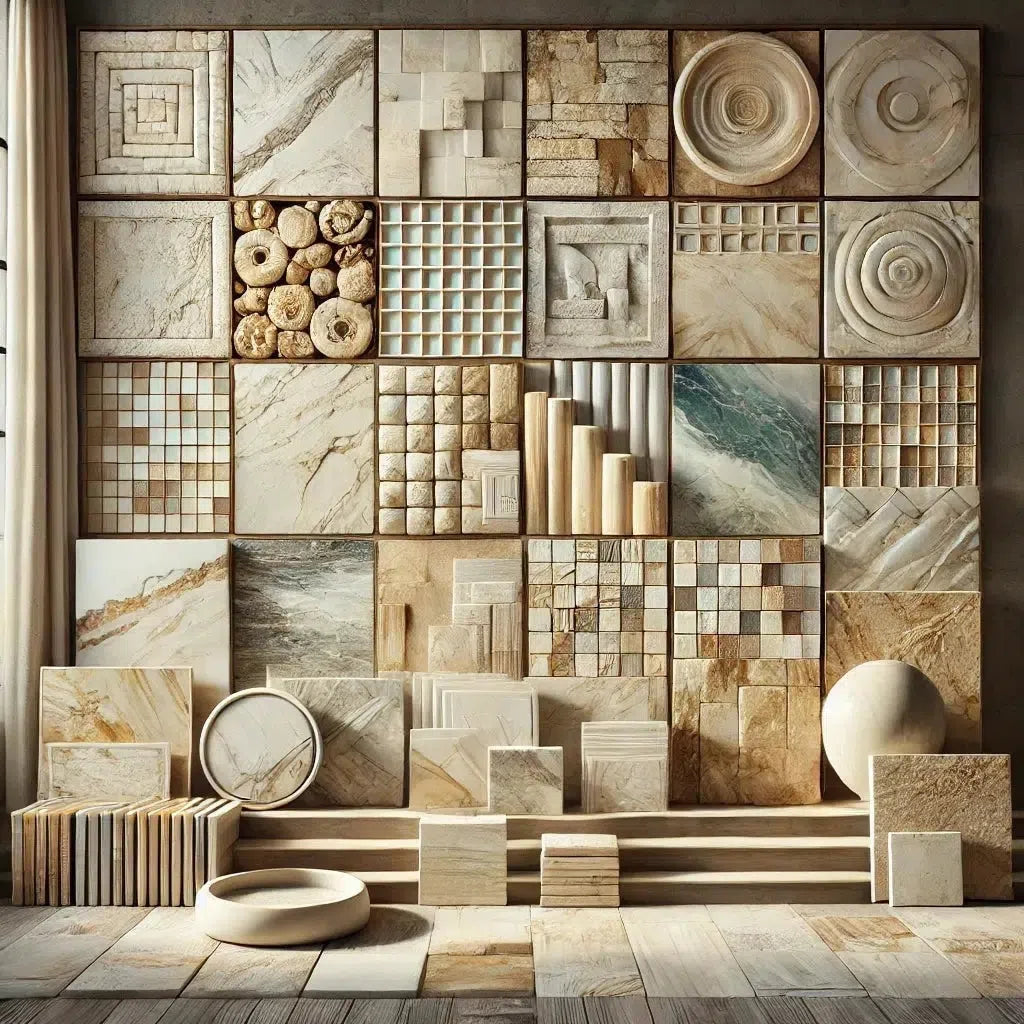 Best Selling Marble Collections
Best Selling Marble Collections
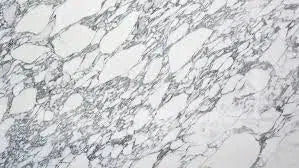 Arabescato Corchia
Arabescato Corchia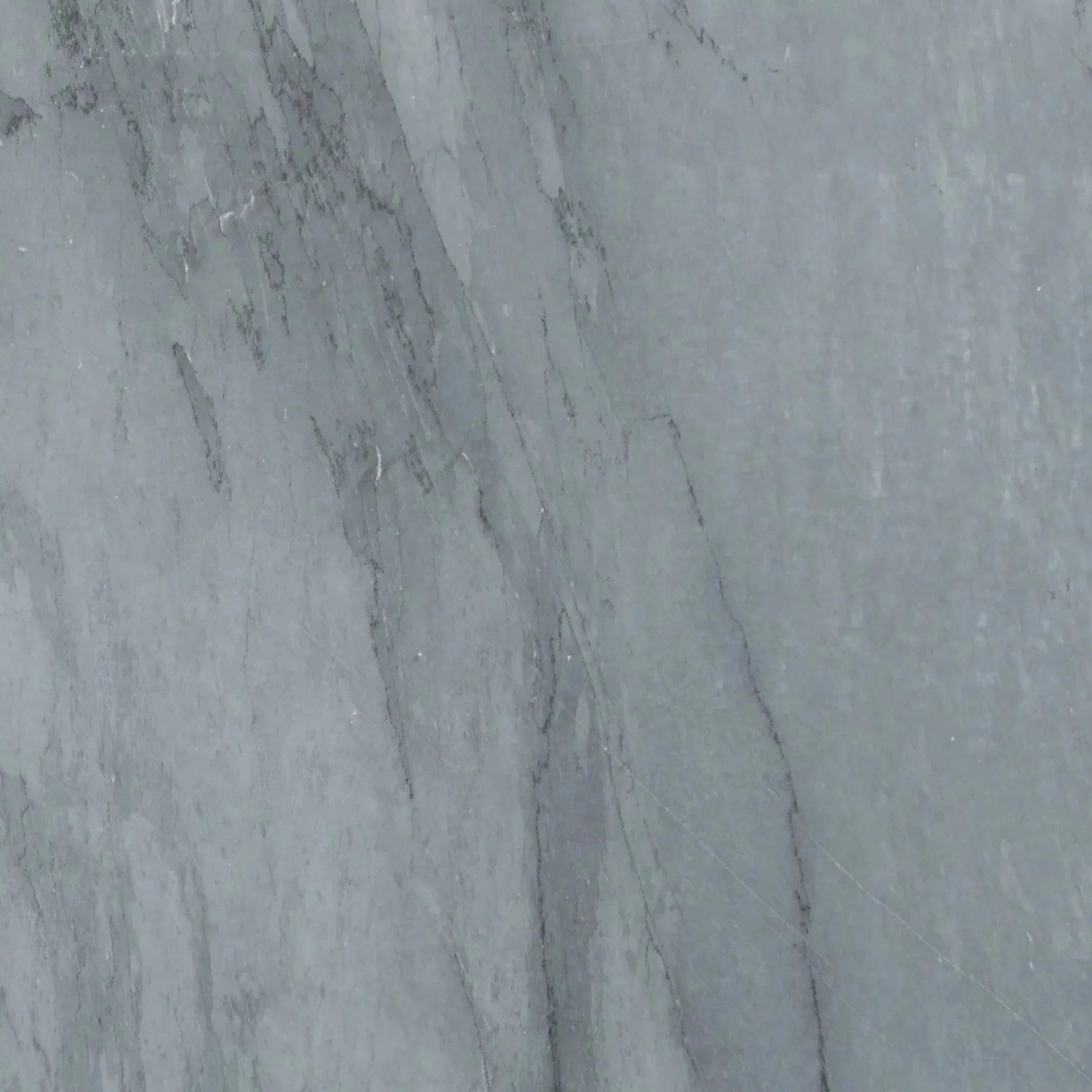 Bardiglio
Bardiglio Bianco Dolomite
Bianco Dolomite 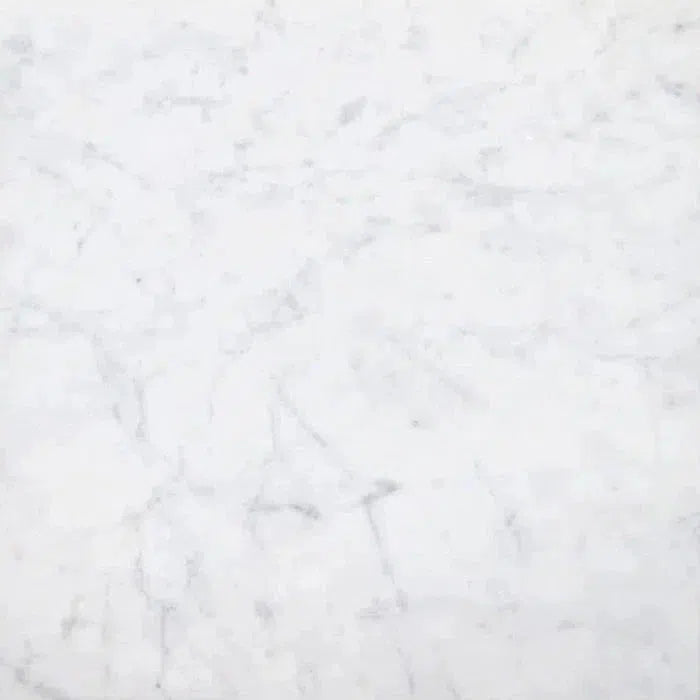 Carrara White
Carrara White 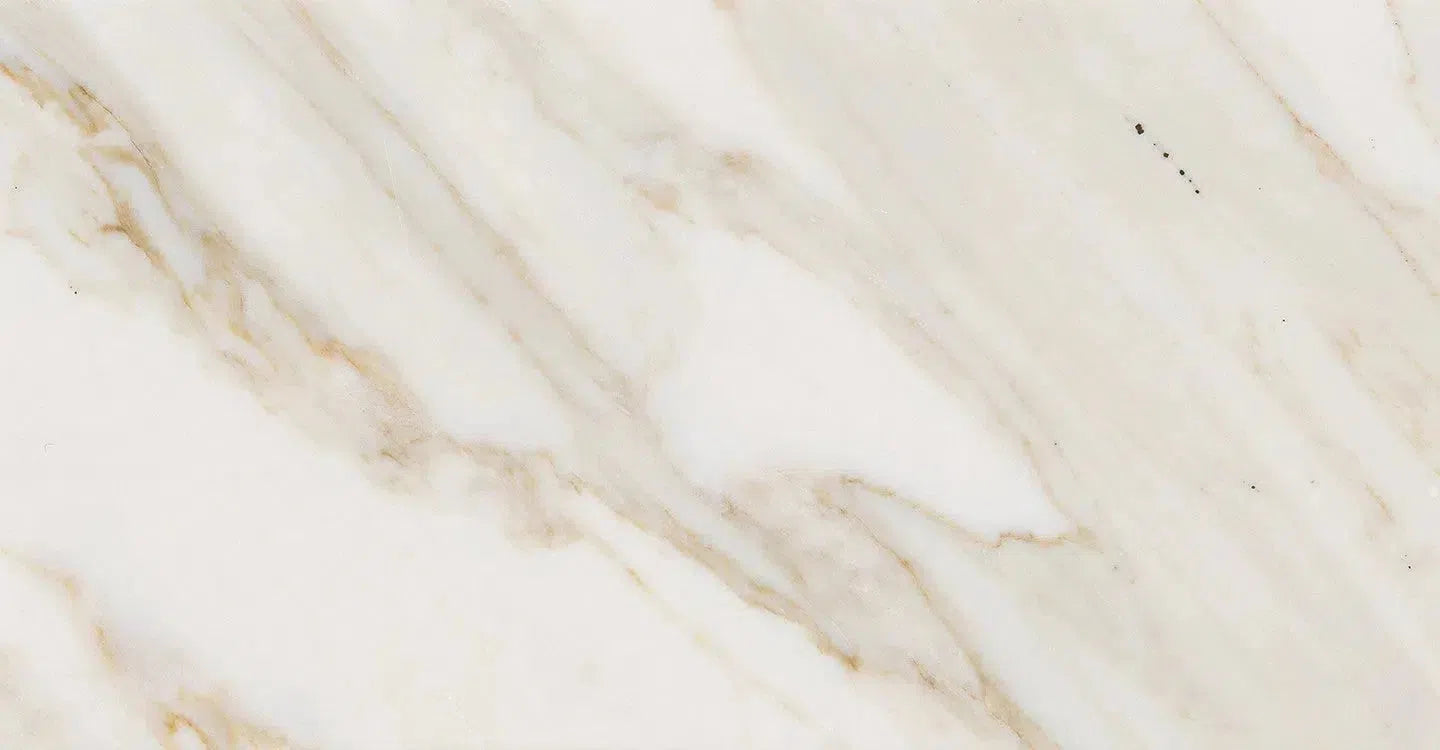 Calacatta Gold
Calacatta Gold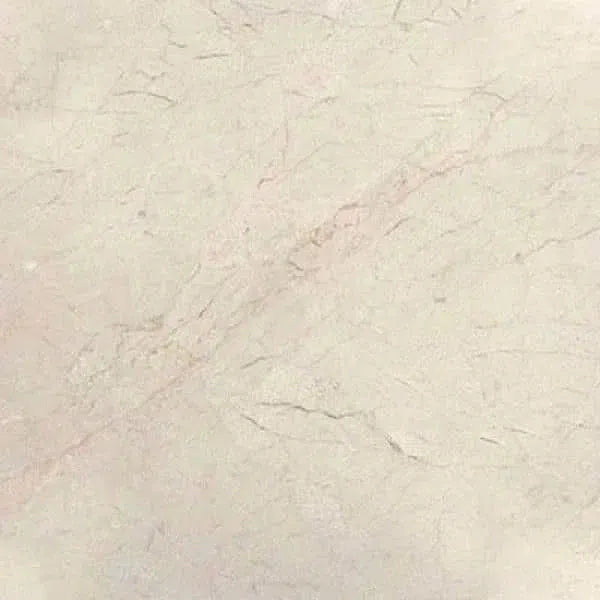 Crema Marfil
Crema Marfil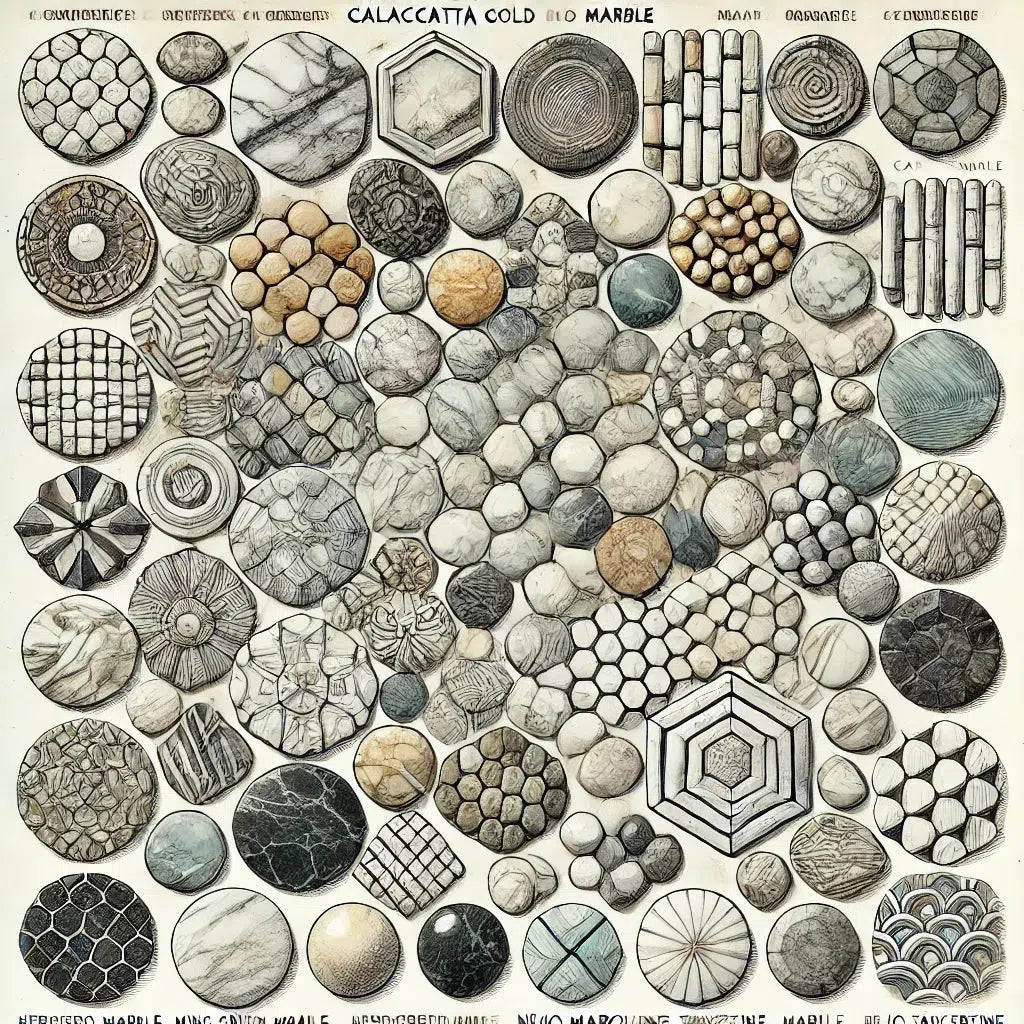 Custom Made Mosaic
Custom Made Mosaic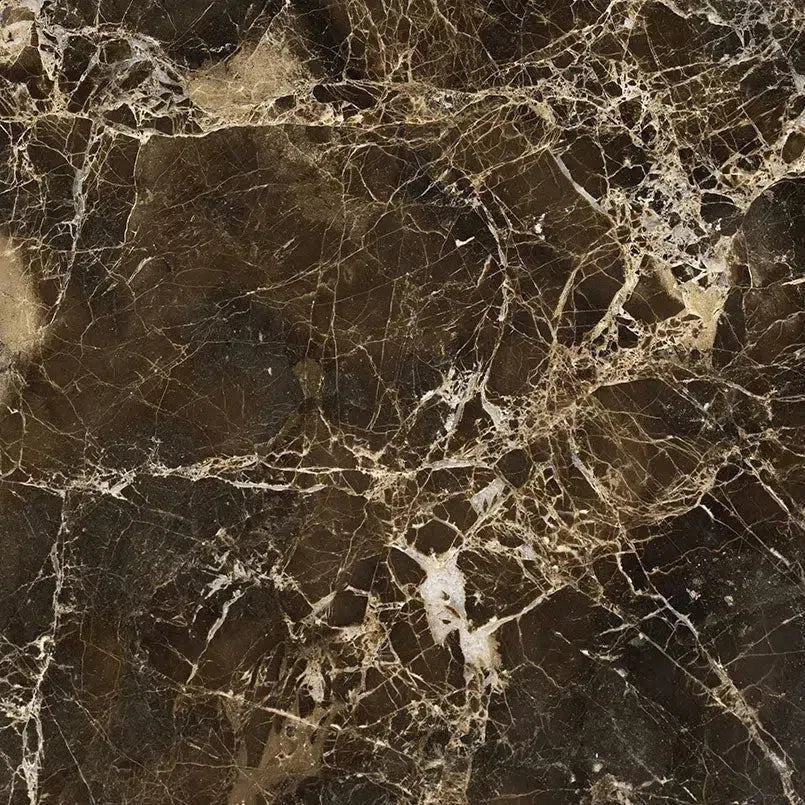 Emperador Dark
Emperador Dark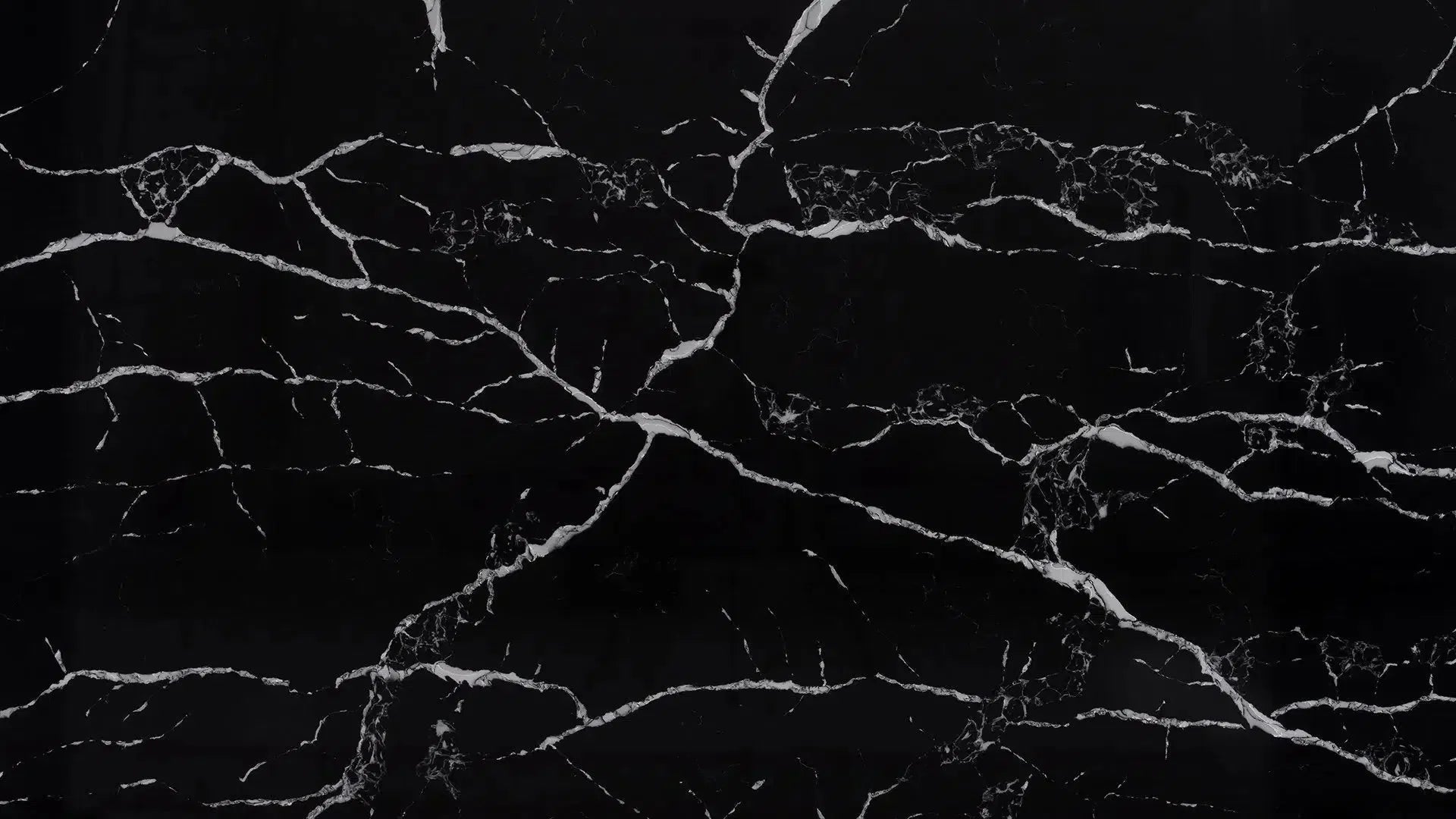 Nero Marquina
Nero Marquina Ming Green Marble
Ming Green Marble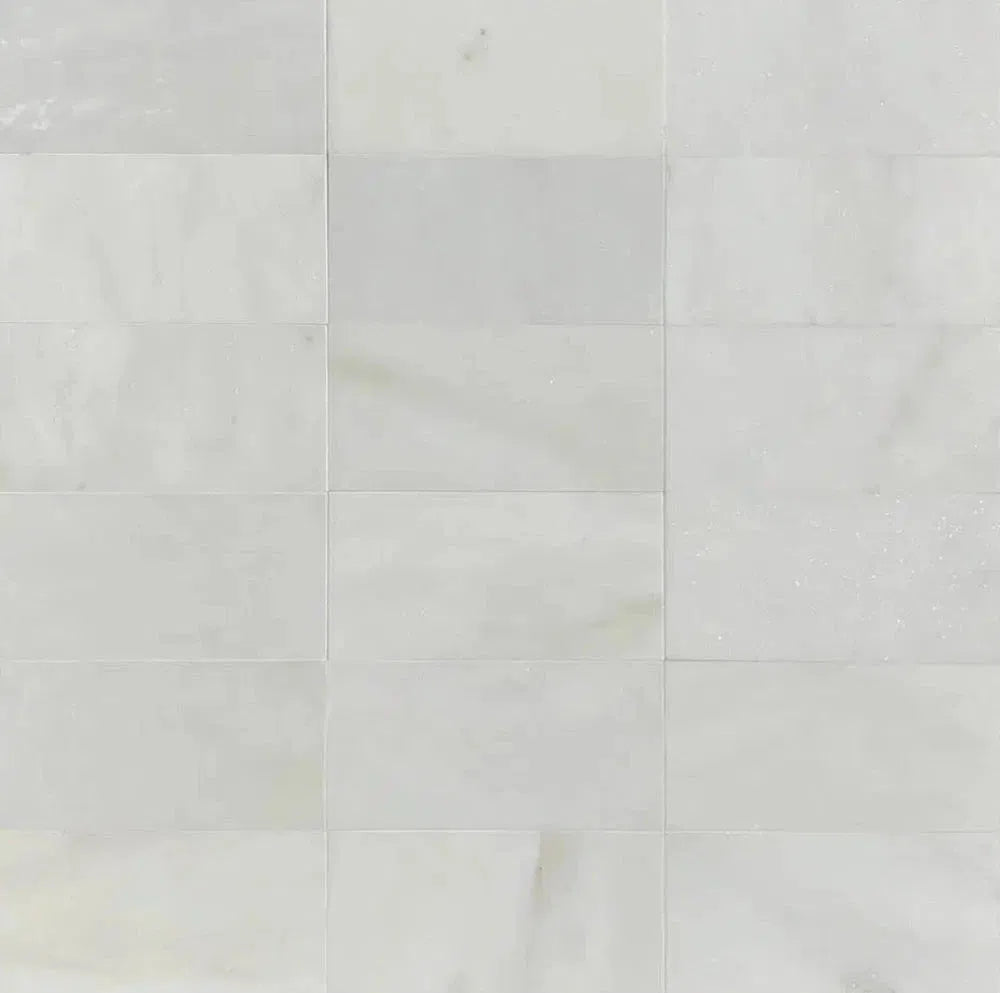 Oriental White Marble (Asian Statuary Marble)
Oriental White Marble (Asian Statuary Marble)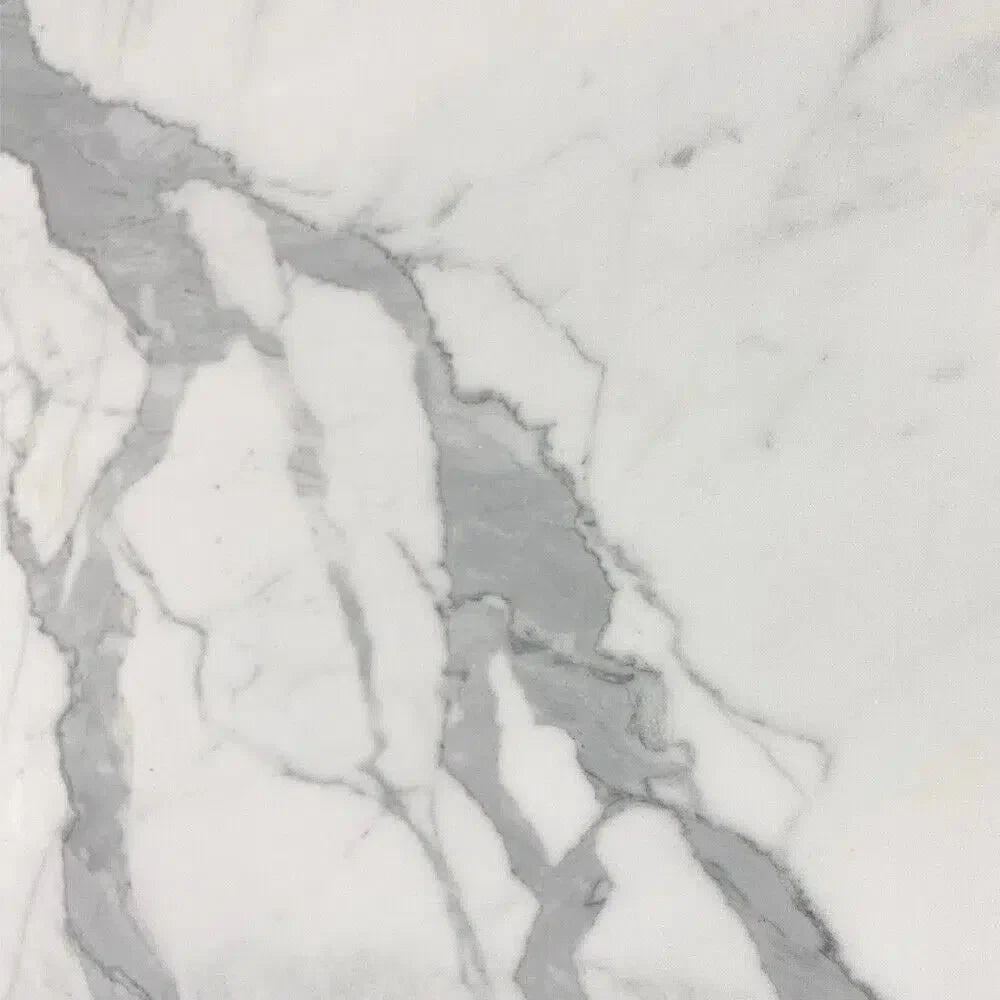 Statuary - Statuario White (Italian) Marble
Statuary - Statuario White (Italian) Marble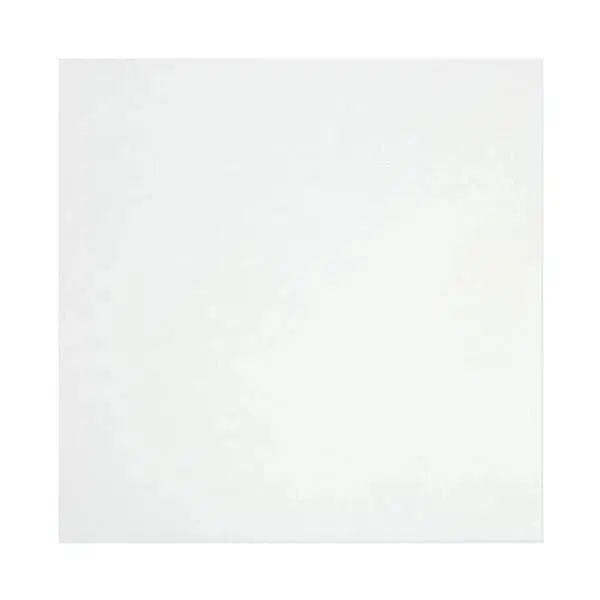 Thassos White
Thassos White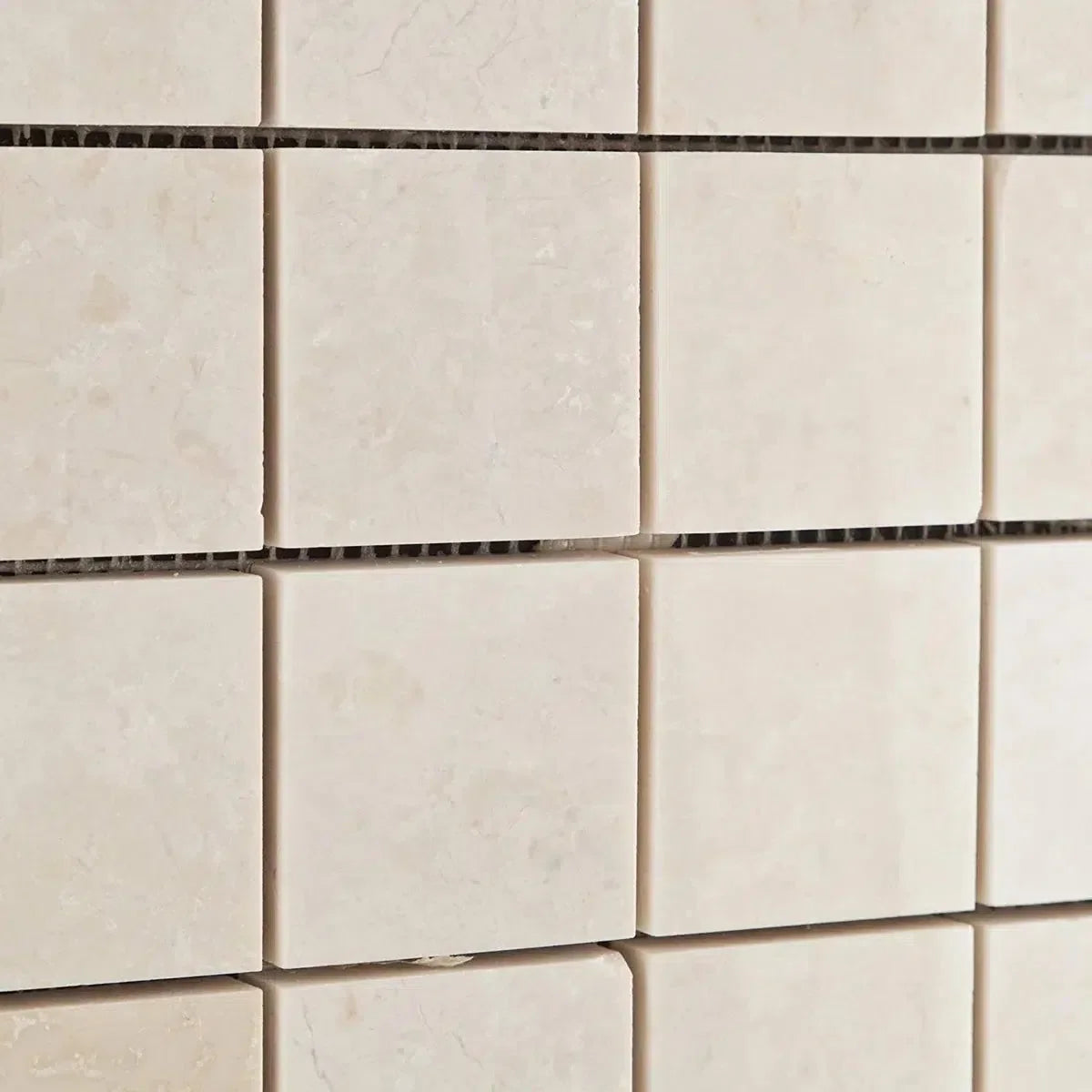 White Pearl/Botticino Beige Marble
White Pearl/Botticino Beige Marble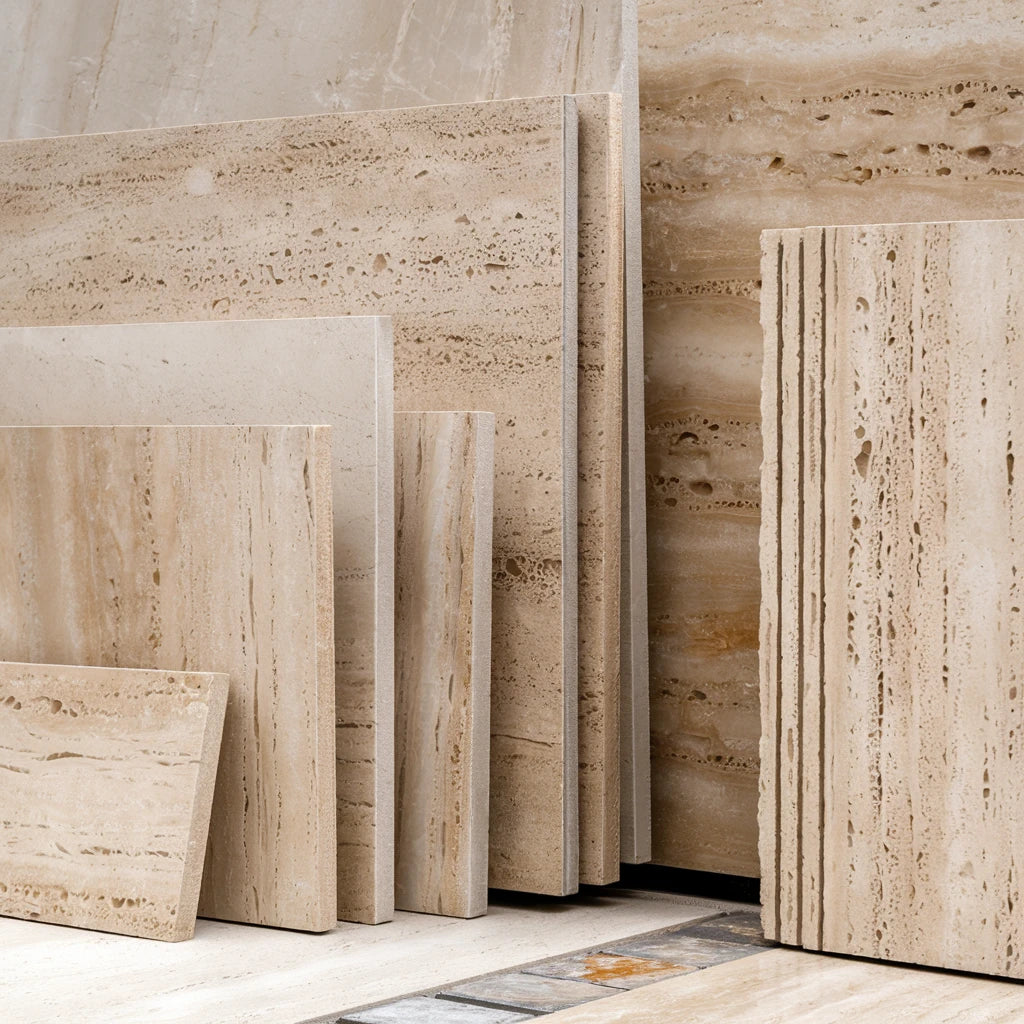 Best Selling Travertine Collections
Best Selling Travertine Collections
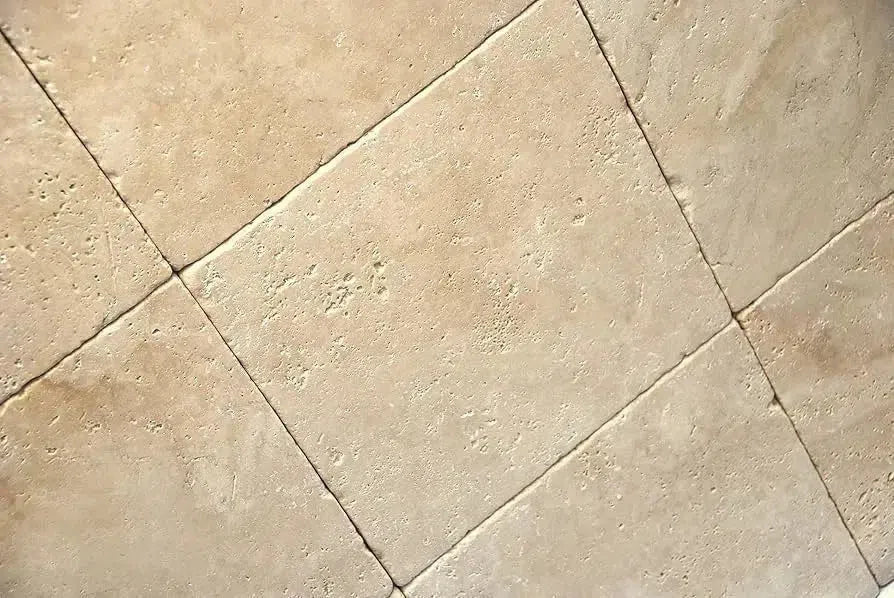 Ivory Travertine
Ivory Travertine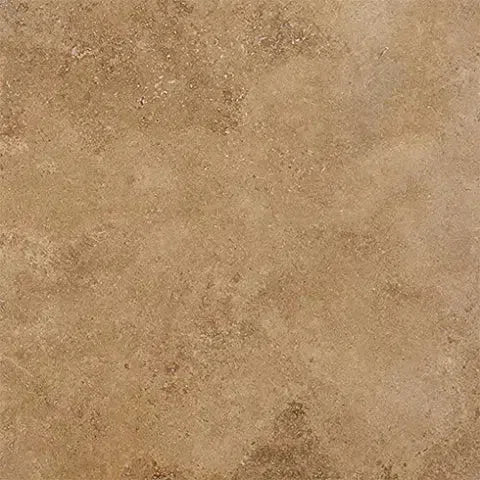 Noce Travertine
Noce Travertine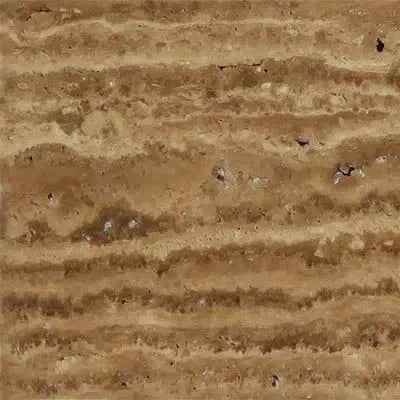 Exotic Noce Travertine
Exotic Noce Travertine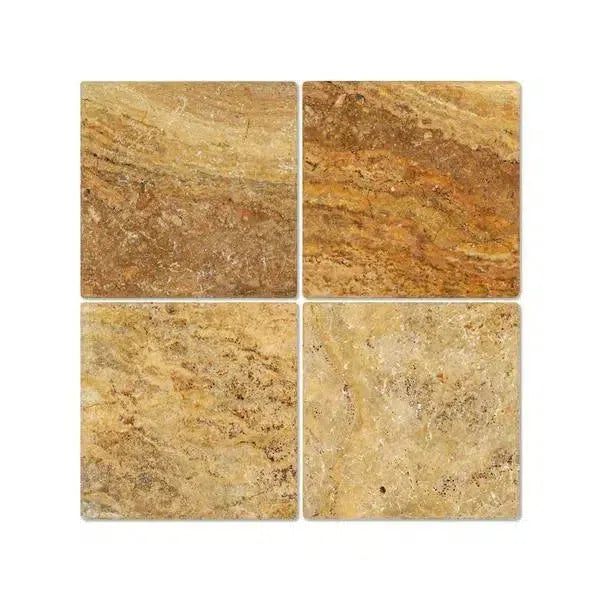 Scabos | Autumn Leaves Travertine
Scabos | Autumn Leaves Travertine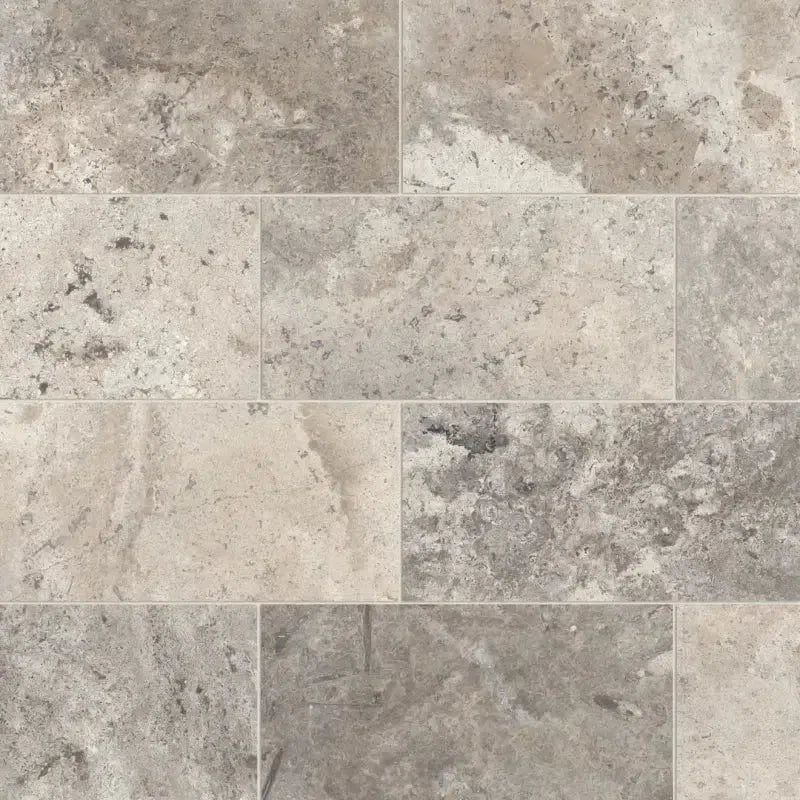 Silver Travertine
Silver Travertine Exotic Travertine
Exotic Travertine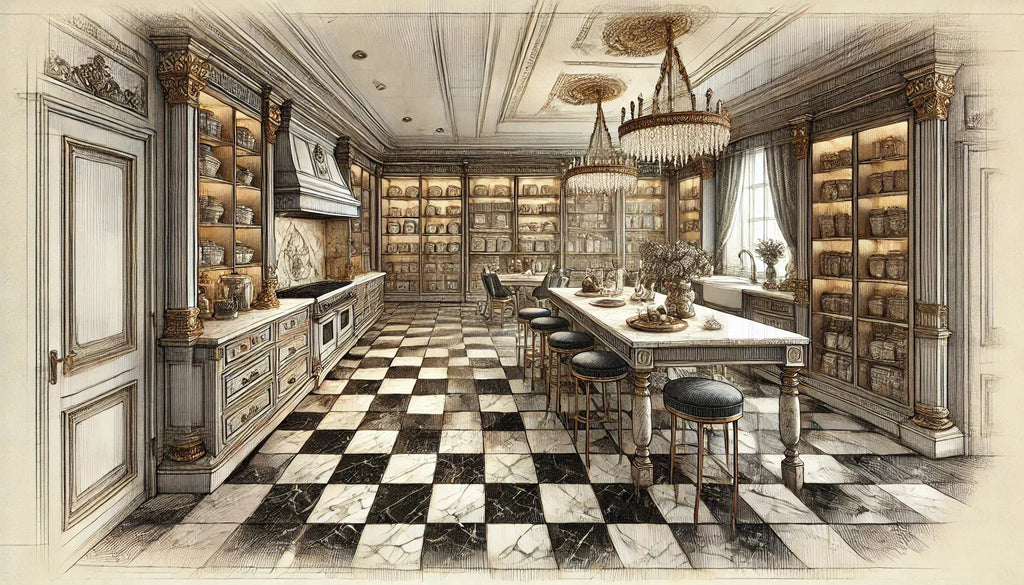 Checkerboard
Checkerboard
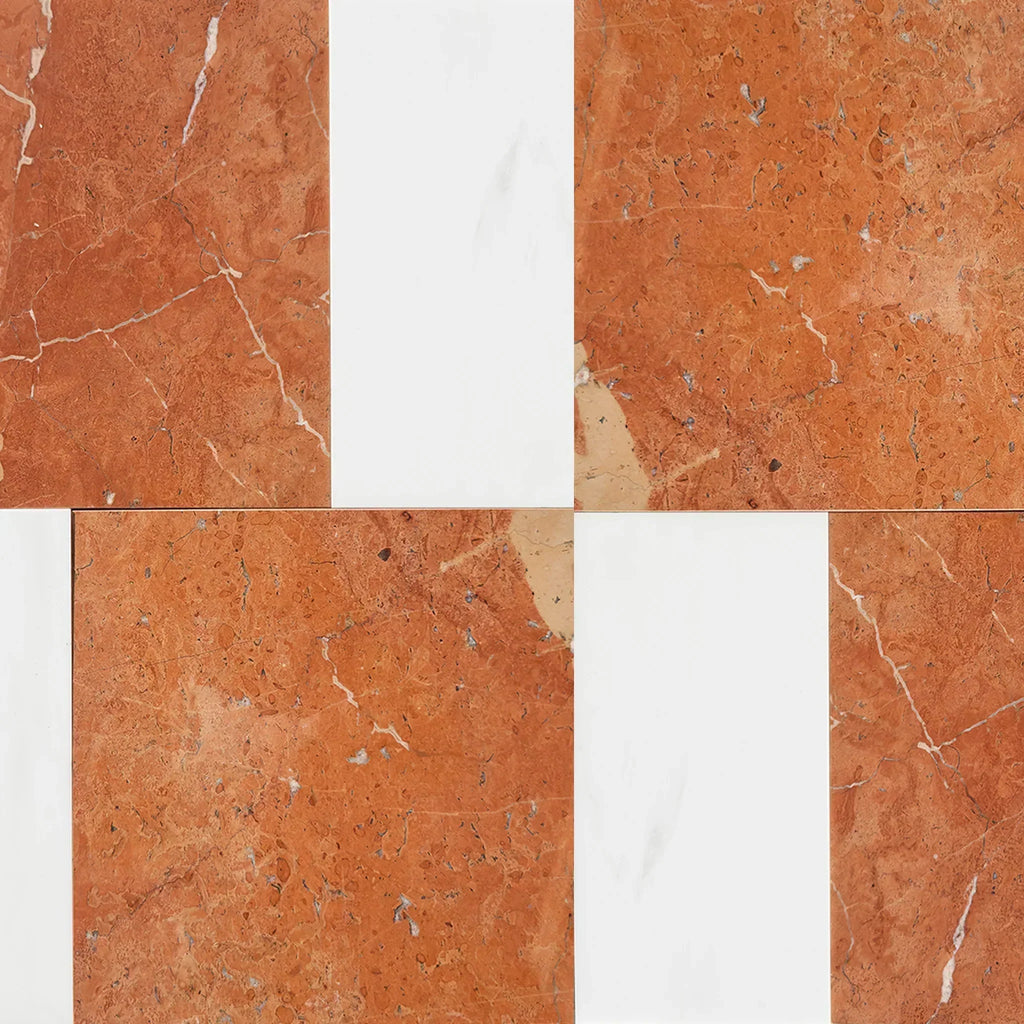 Patterned Tile
Patterned Tile
 Shop By Material
Shop By Material
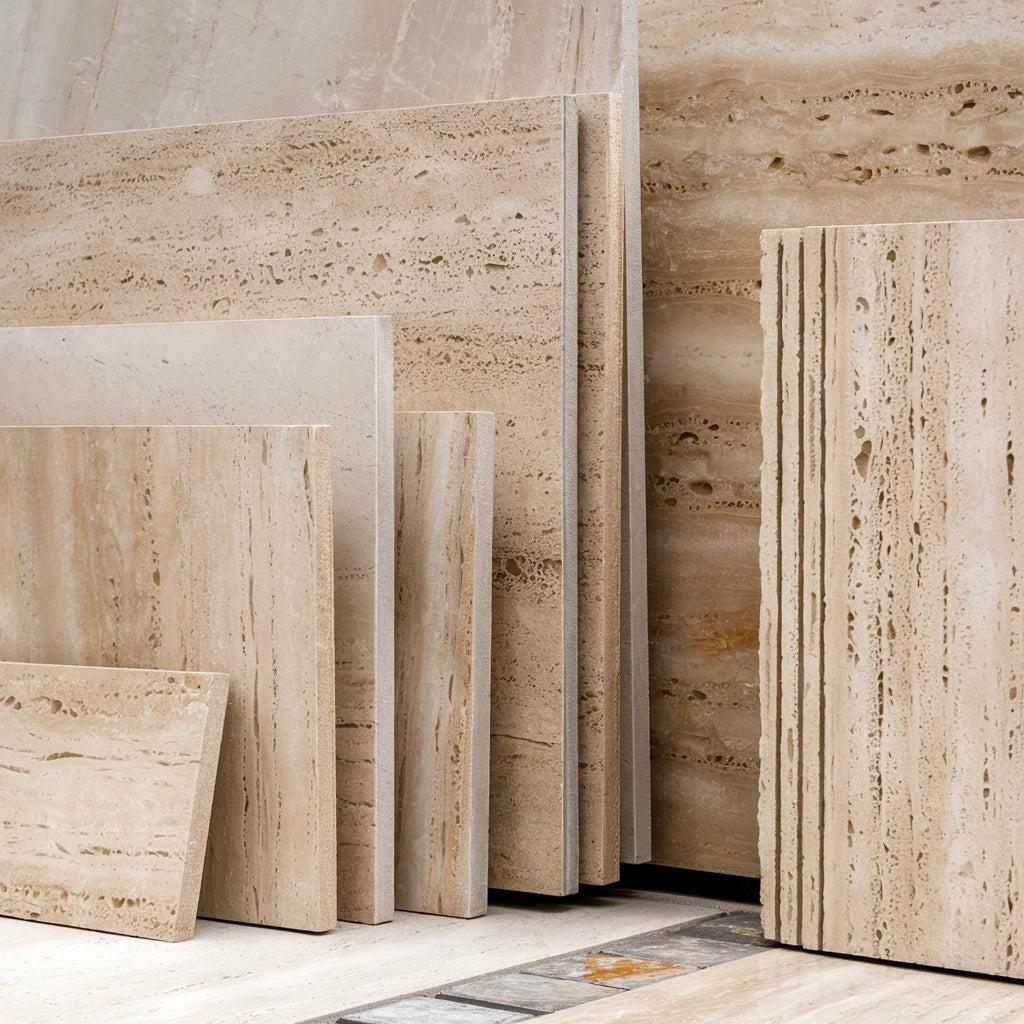 Travertine
Travertine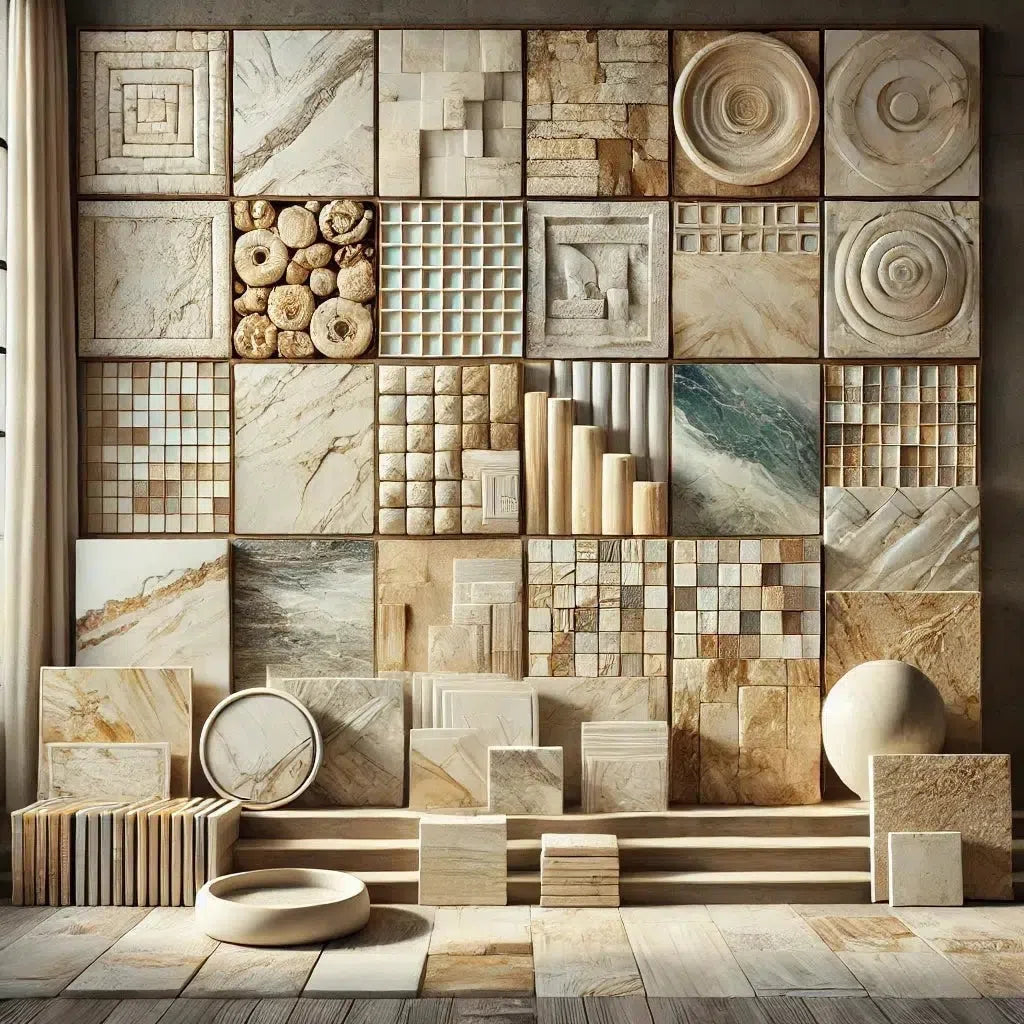 Marble
Marble Limestone
Limestone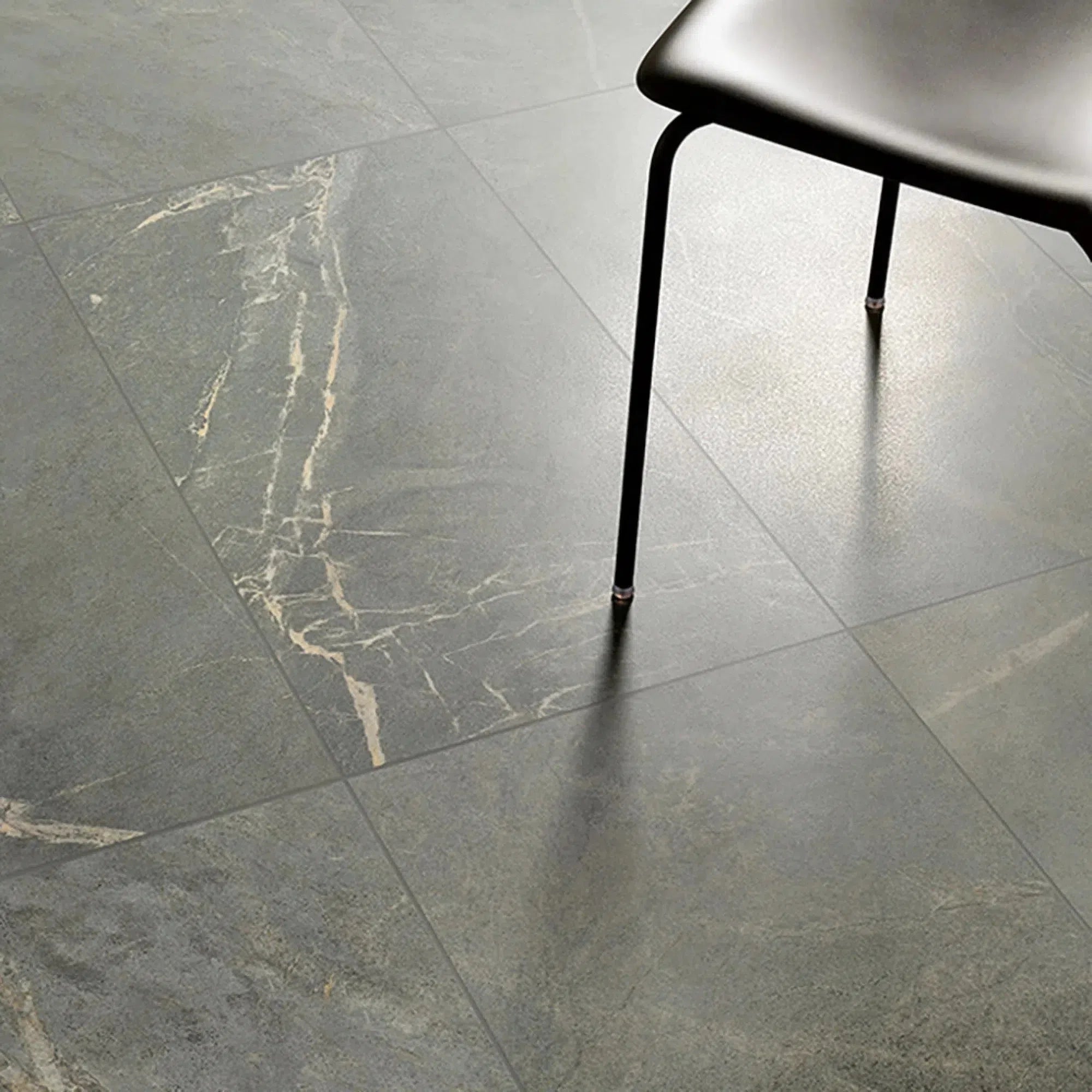 Soap Stone
Soap Stone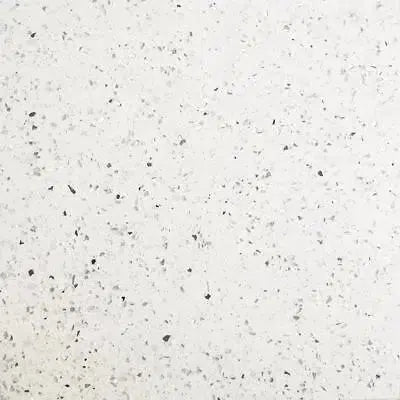 Quartz
Quartz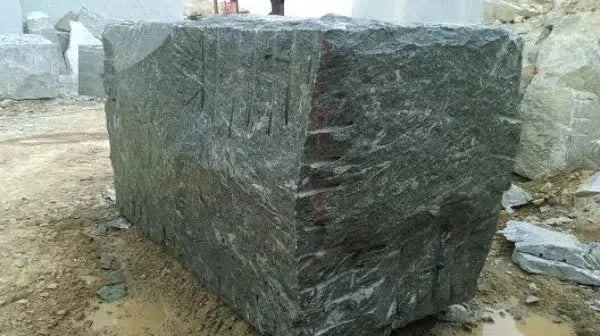 Granite
Granite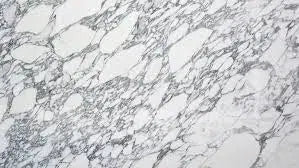 Shop By Name
Shop By Name
 Absolute Black Granite
Absolute Black Granite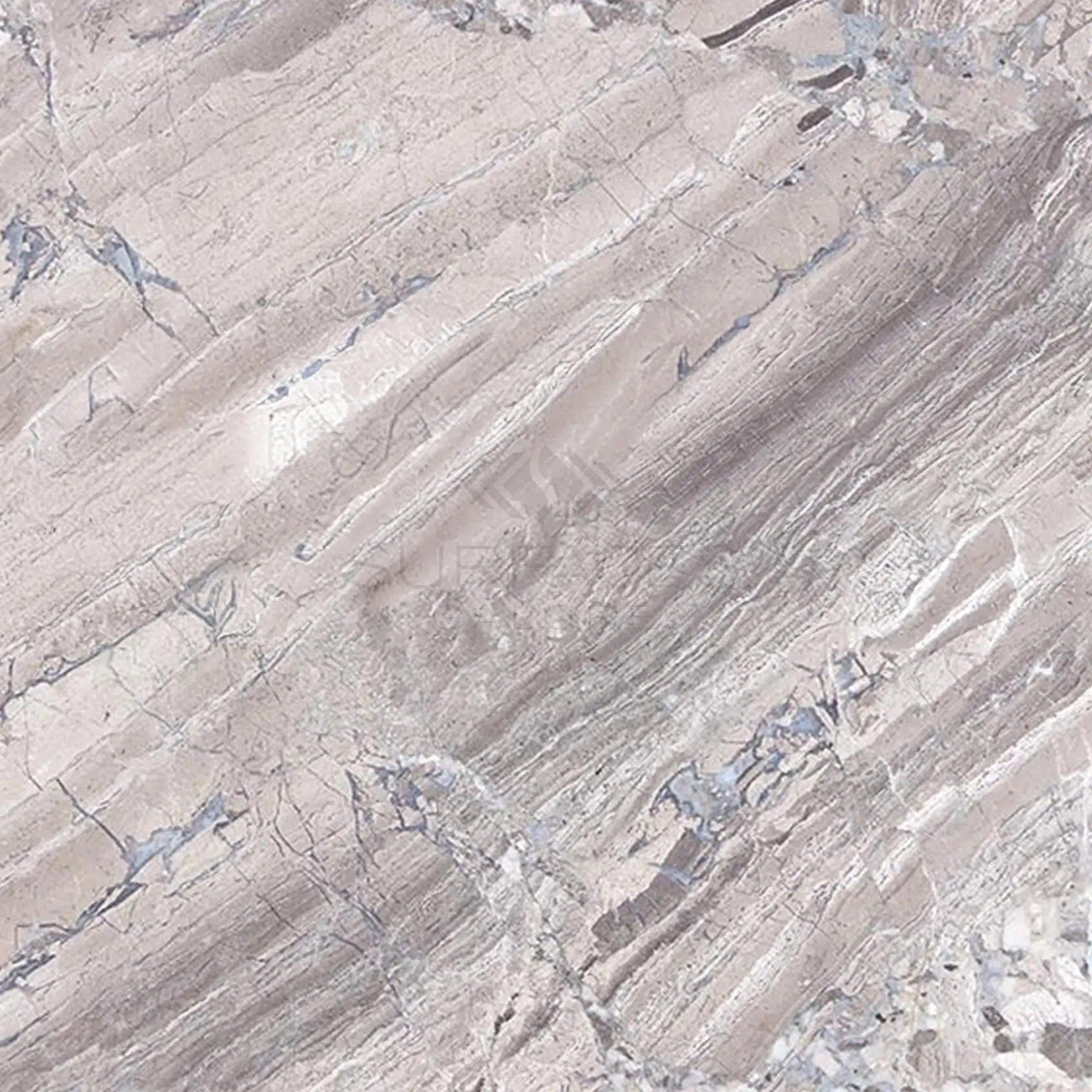 Atlantic Gray Marble
Atlantic Gray Marble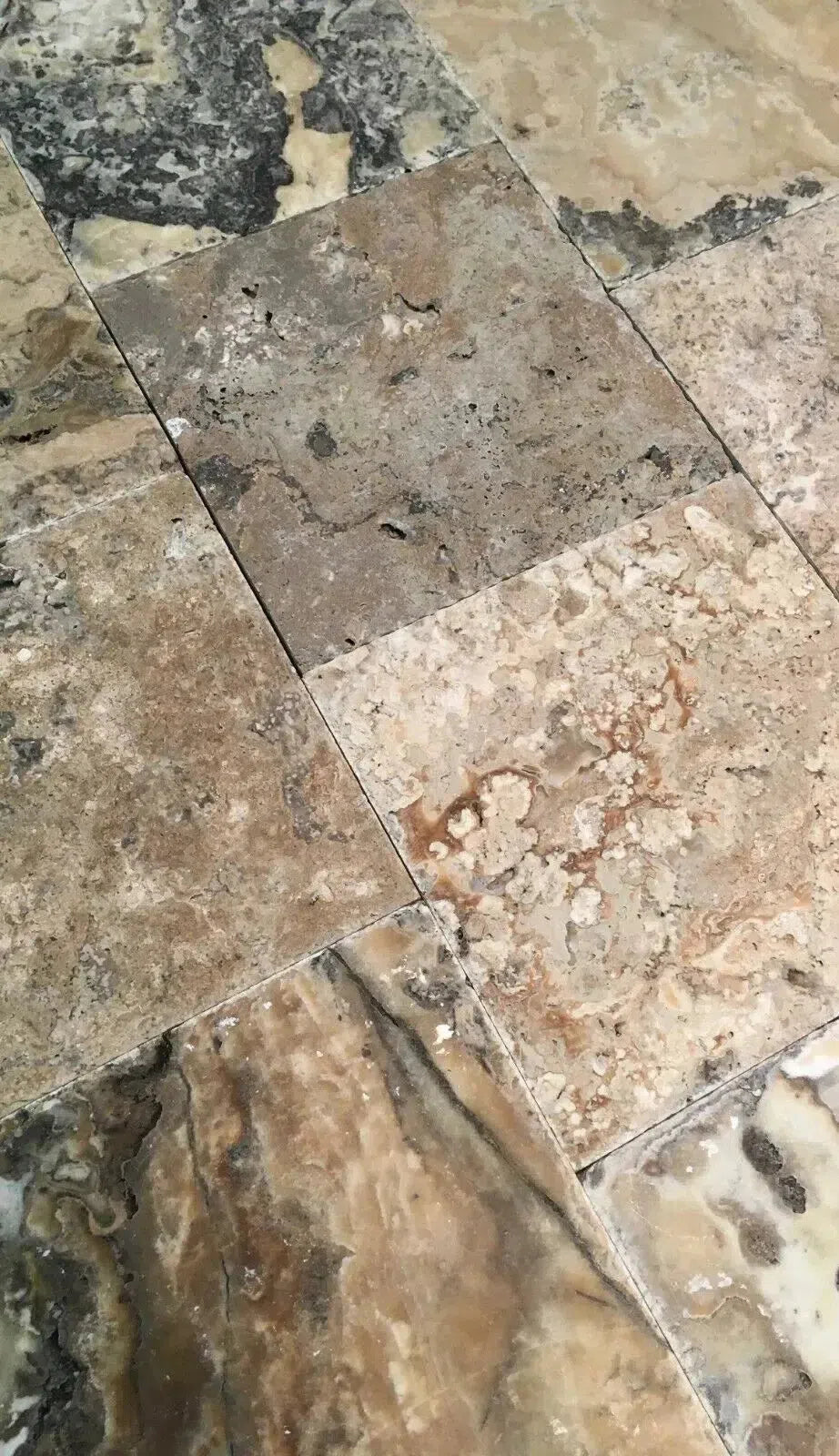 Antico Onyx Travertine
Antico Onyx Travertine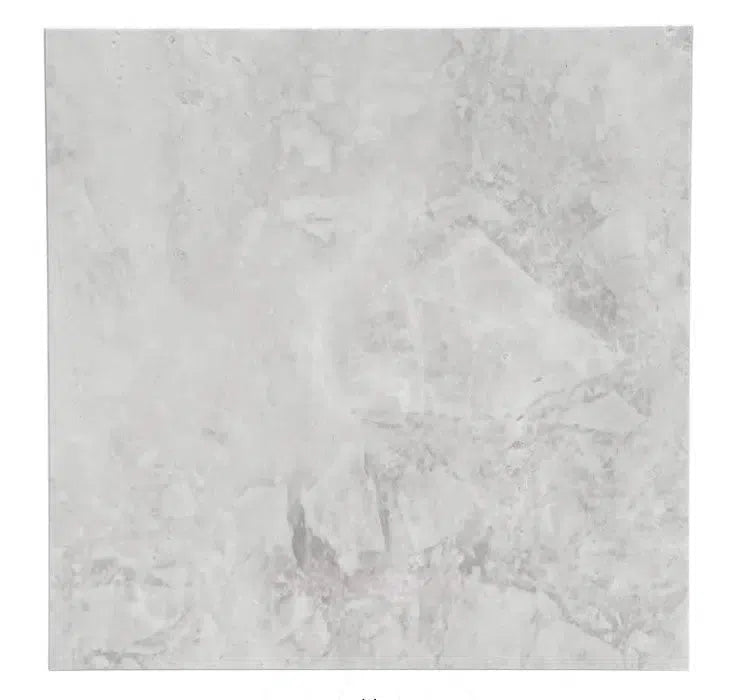 Bianco Congelato Dolomite
Bianco Congelato Dolomite Bianco Venatino (Bianco Mare) Marble
Bianco Venatino (Bianco Mare) Marble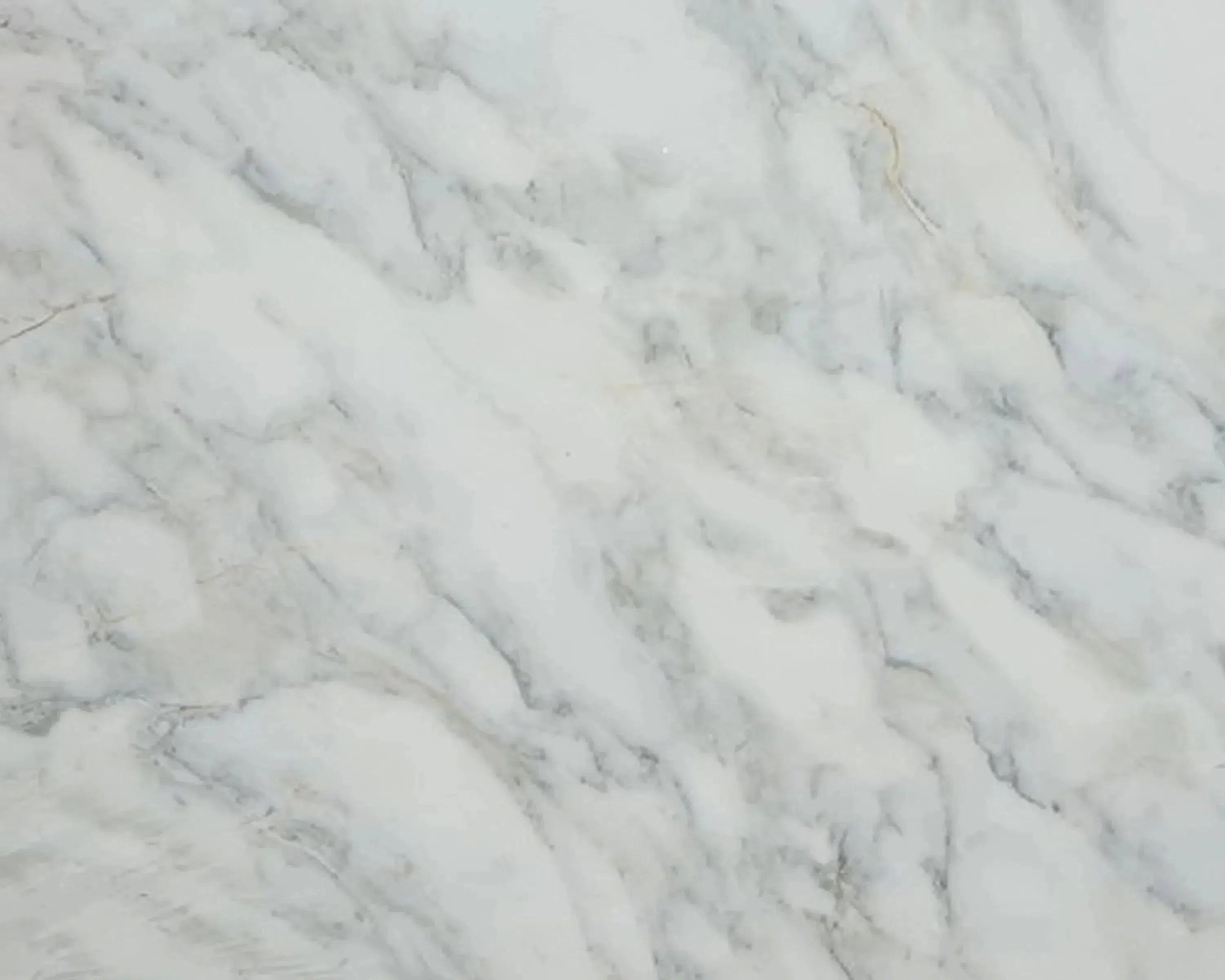 Calacatta Oliva Marble
Calacatta Oliva Marble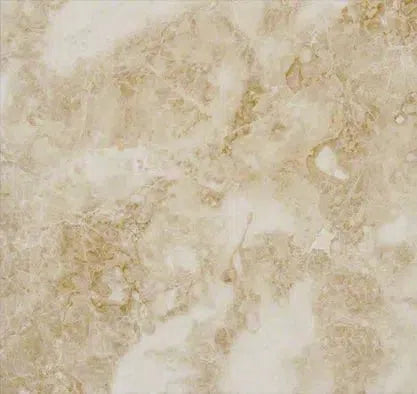 Cappuccino Marble
Cappuccino Marble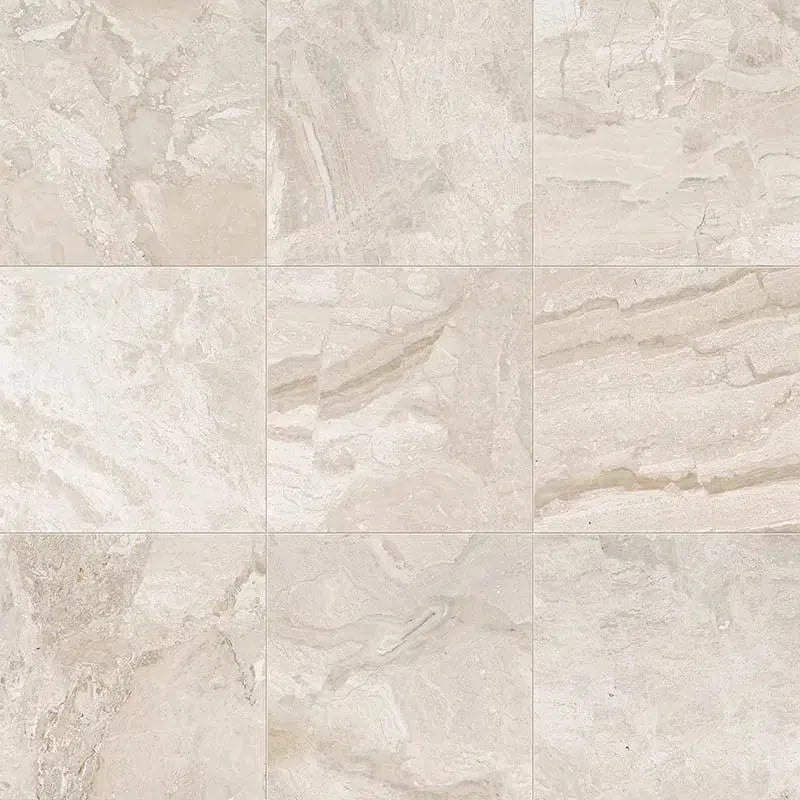 Diano Royal (Queen Beige) Marble
Diano Royal (Queen Beige) Marble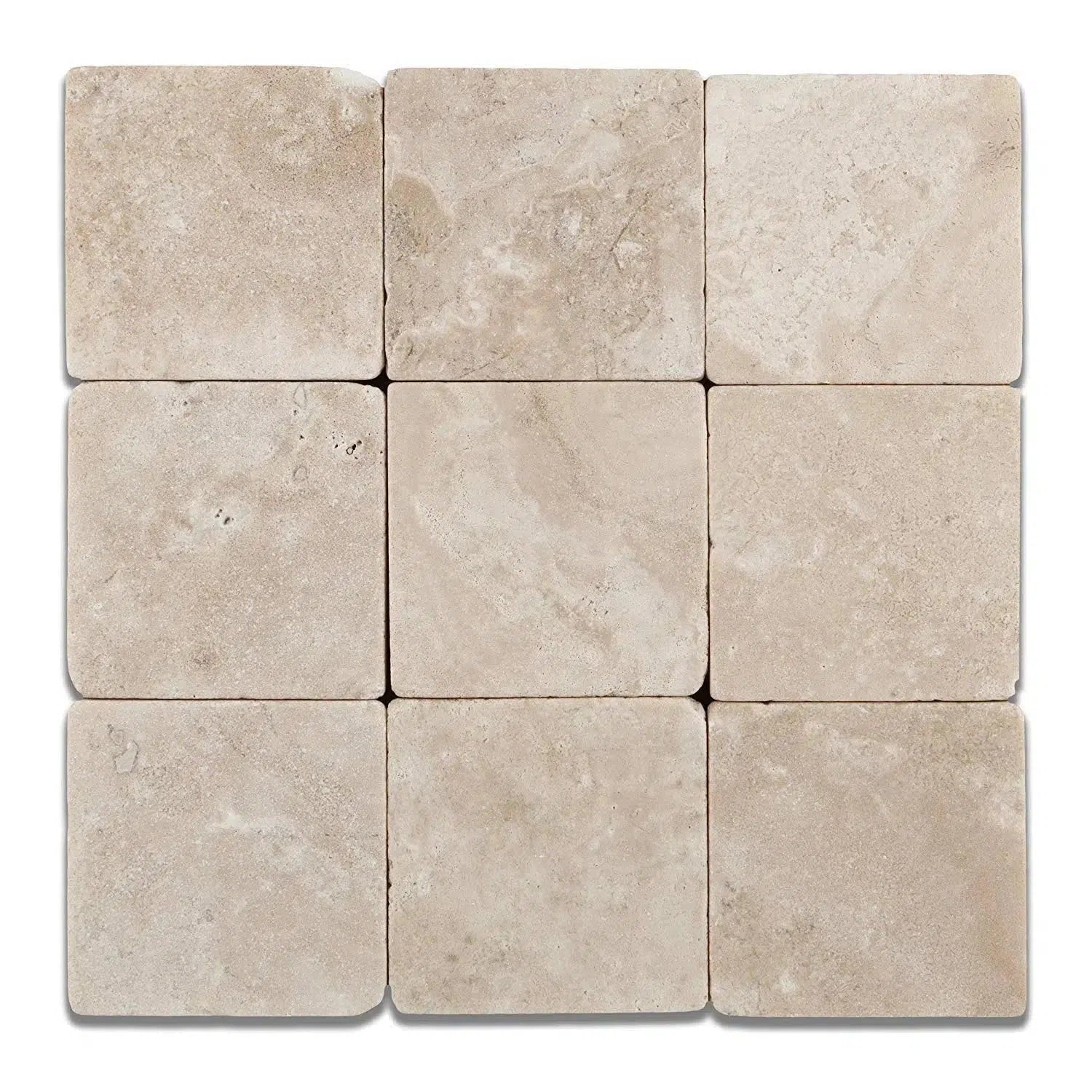 Durango Cream Traverine
Durango Cream Traverine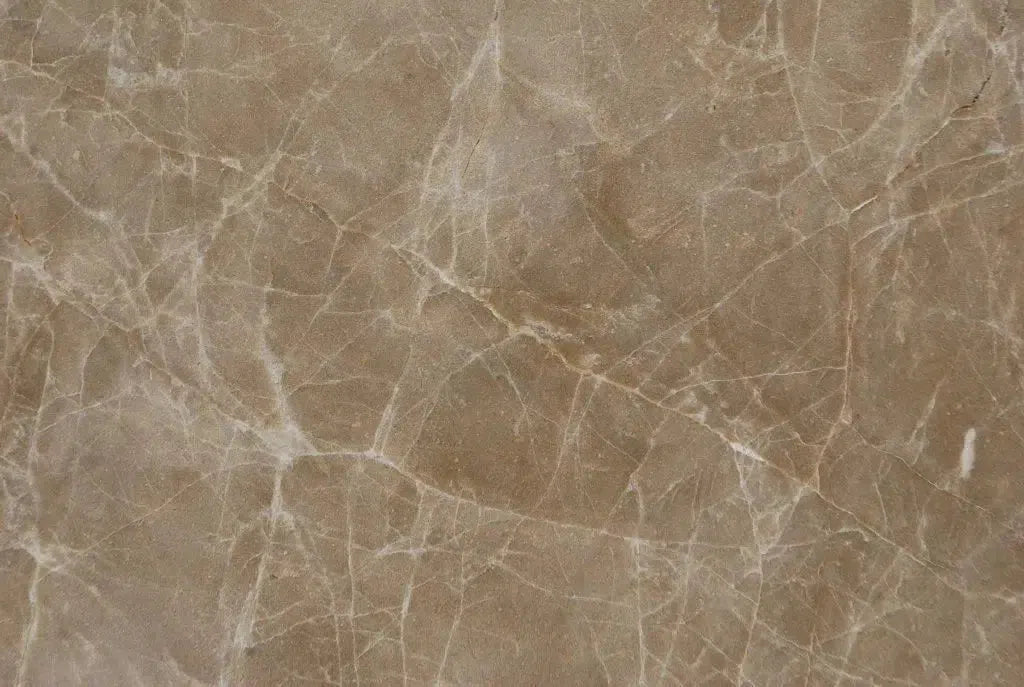 Emperador Light Marble
Emperador Light Marble Empress Green Marble
Empress Green Marble Gold/Yellow Travertine
Gold/Yellow Travertine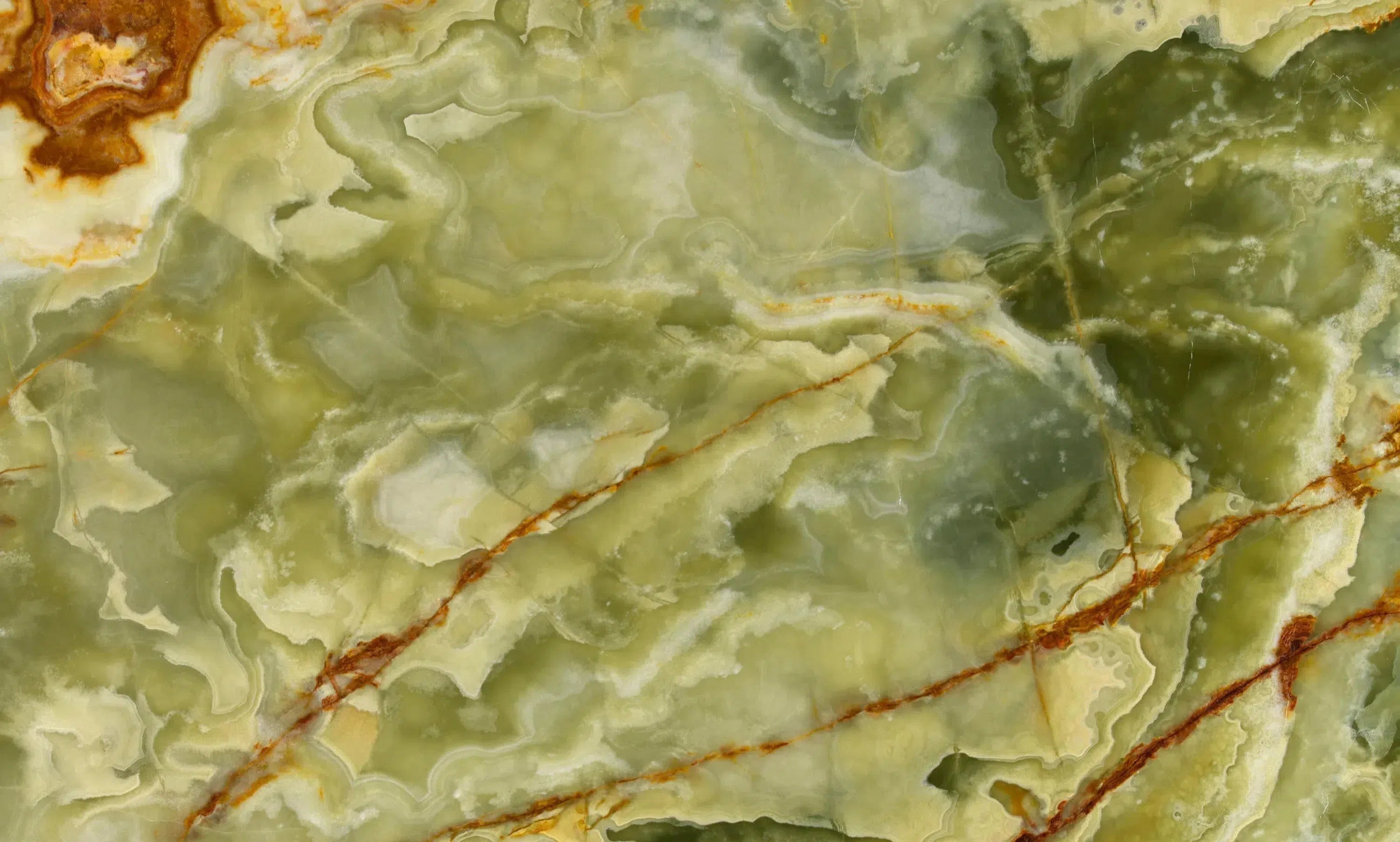 Green Onyx Marble
Green Onyx Marble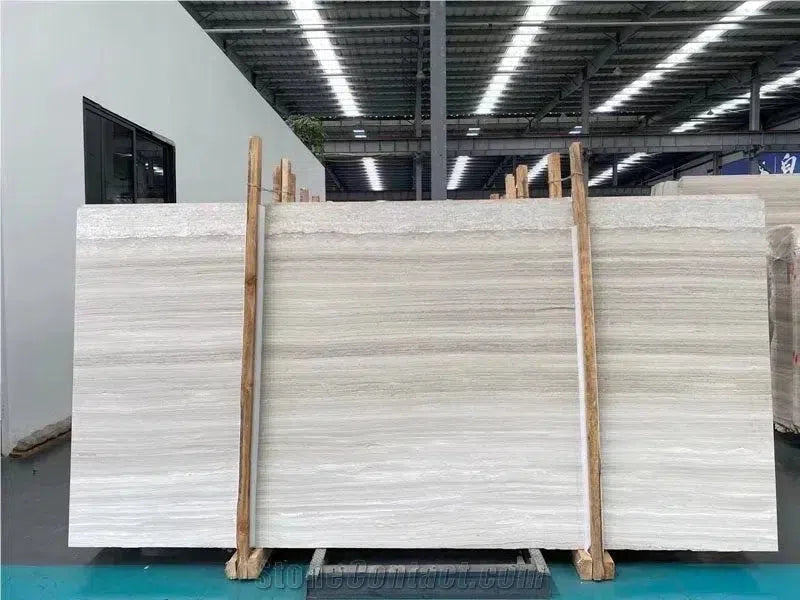 Haisa Light (White Wood) Limestone
Haisa Light (White Wood) Limestone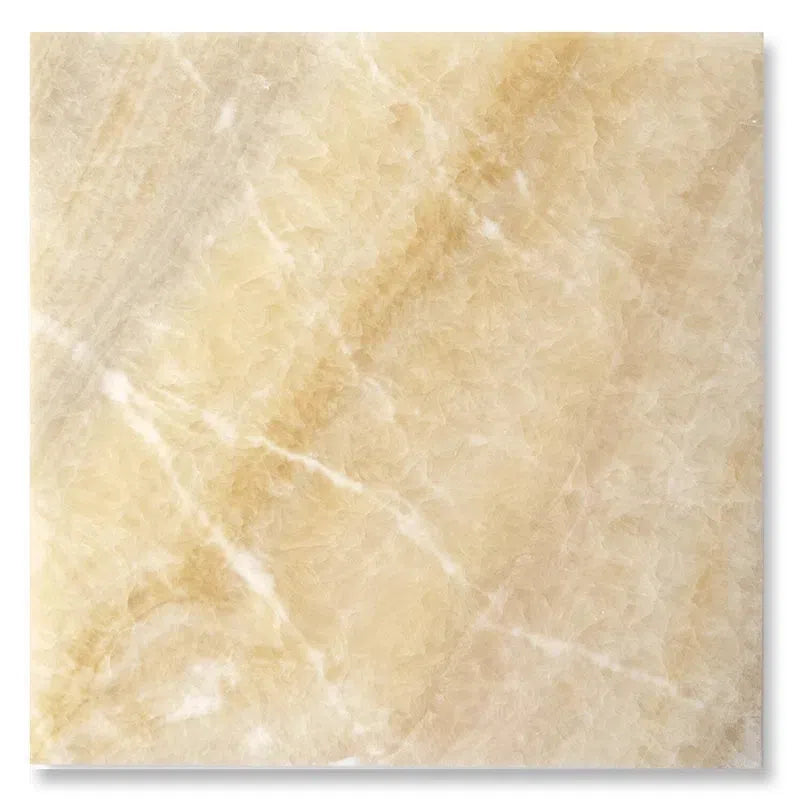 Honey Onyx Marble
Honey Onyx Marble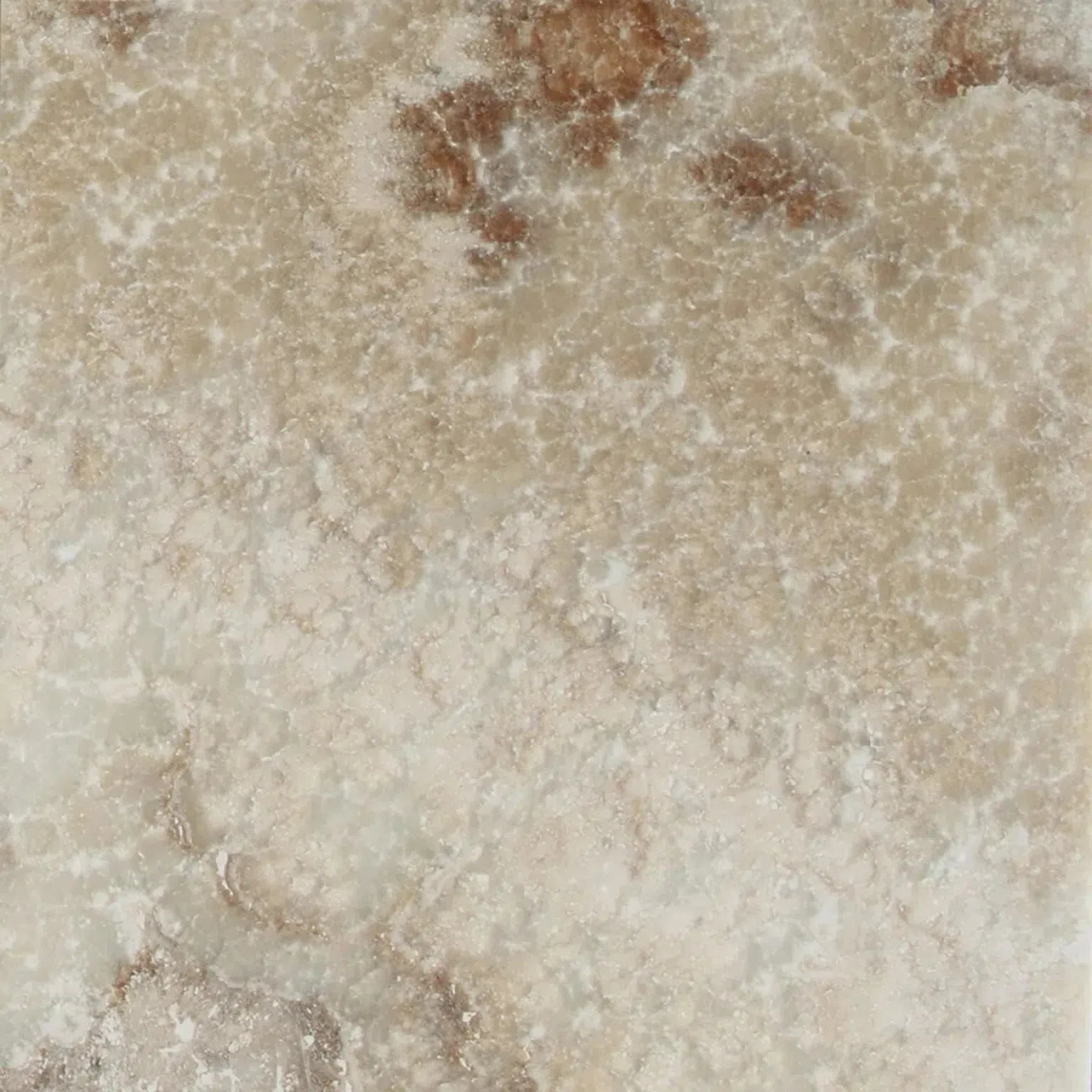 La Travonya Travertine
La Travonya Travertine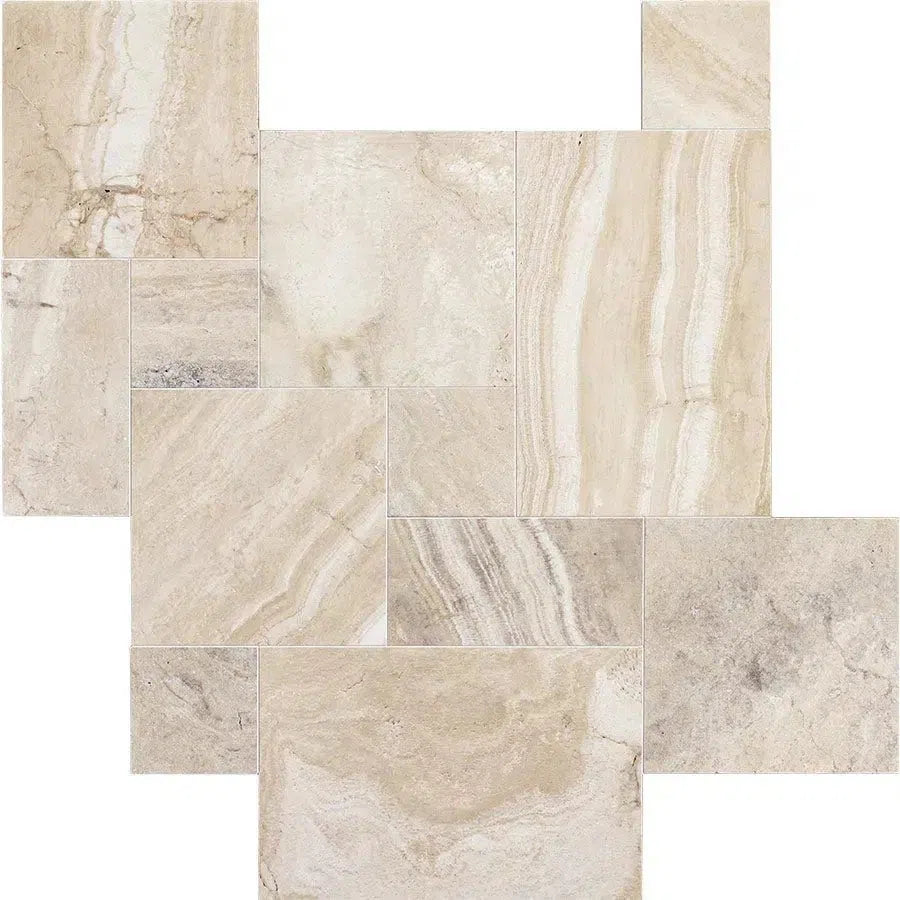 Malibu Travertine
Malibu Travertine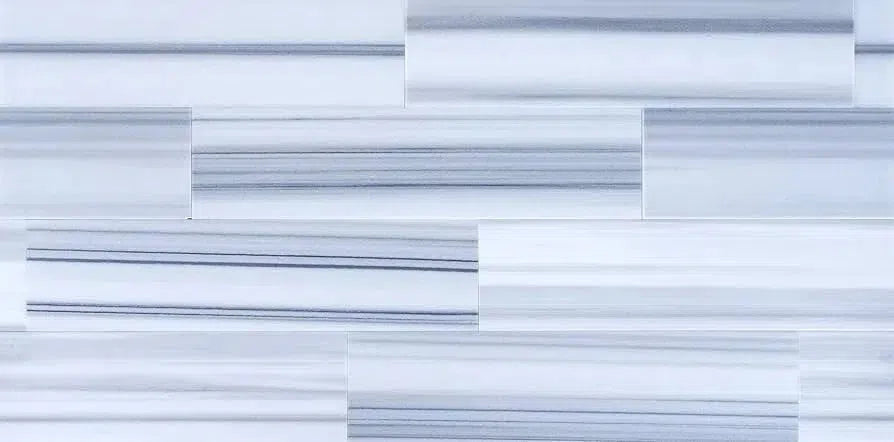 Mink (Equator) Marble
Mink (Equator) Marble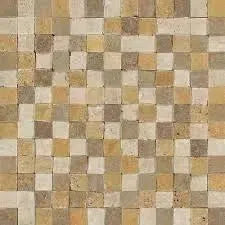 Mixed (Ivory-Noce-Gold) Travertine
Mixed (Ivory-Noce-Gold) Travertine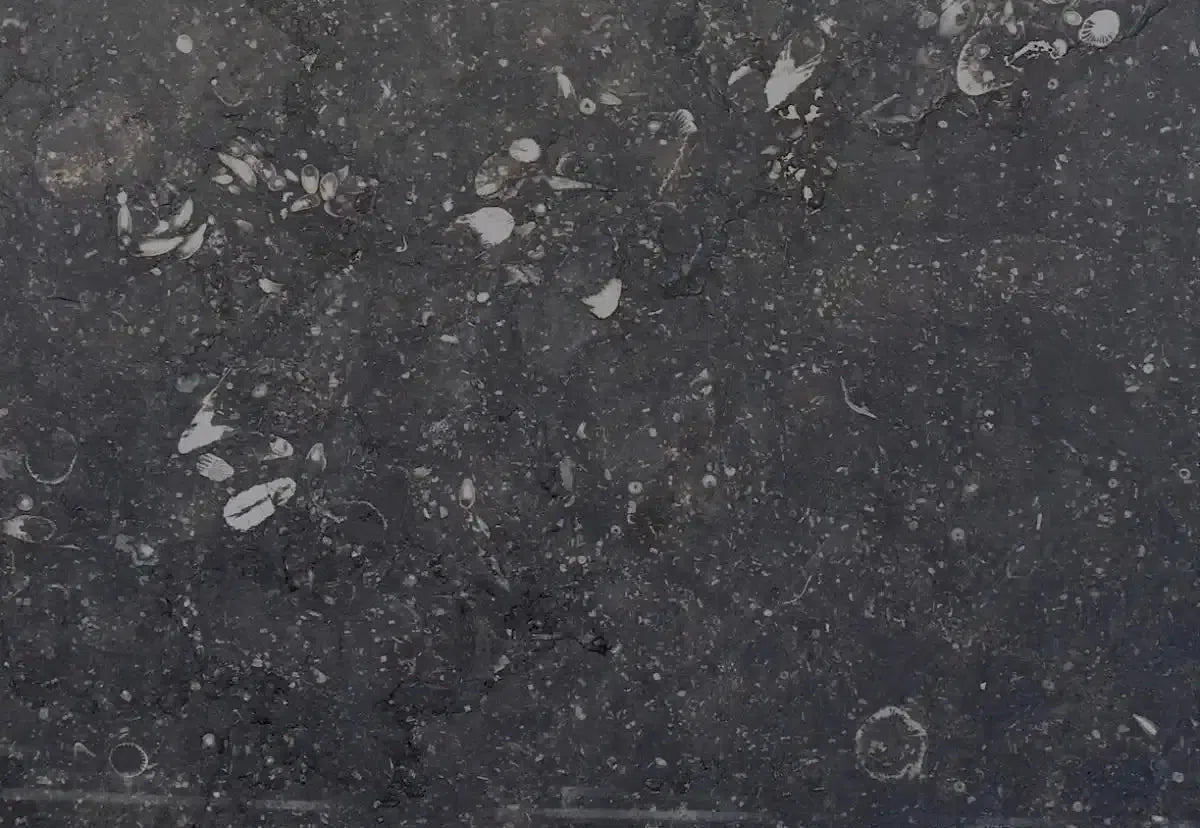 Pierre Bleue (Pierre Blue) Marble
Pierre Bleue (Pierre Blue) Marble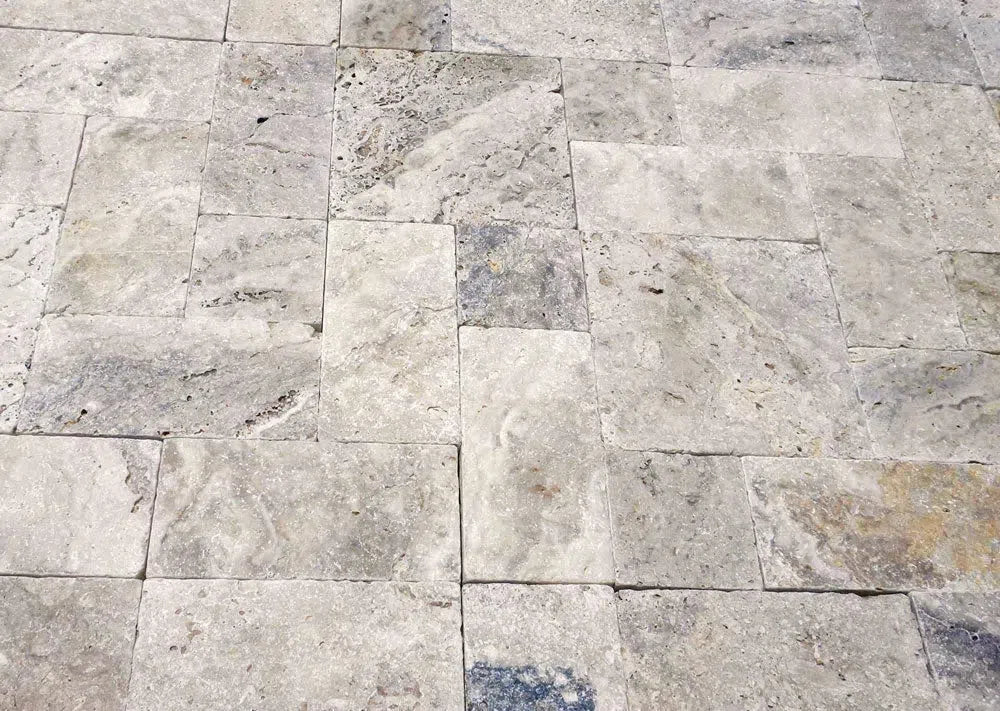 Philadelphia Travertine
Philadelphia Travertine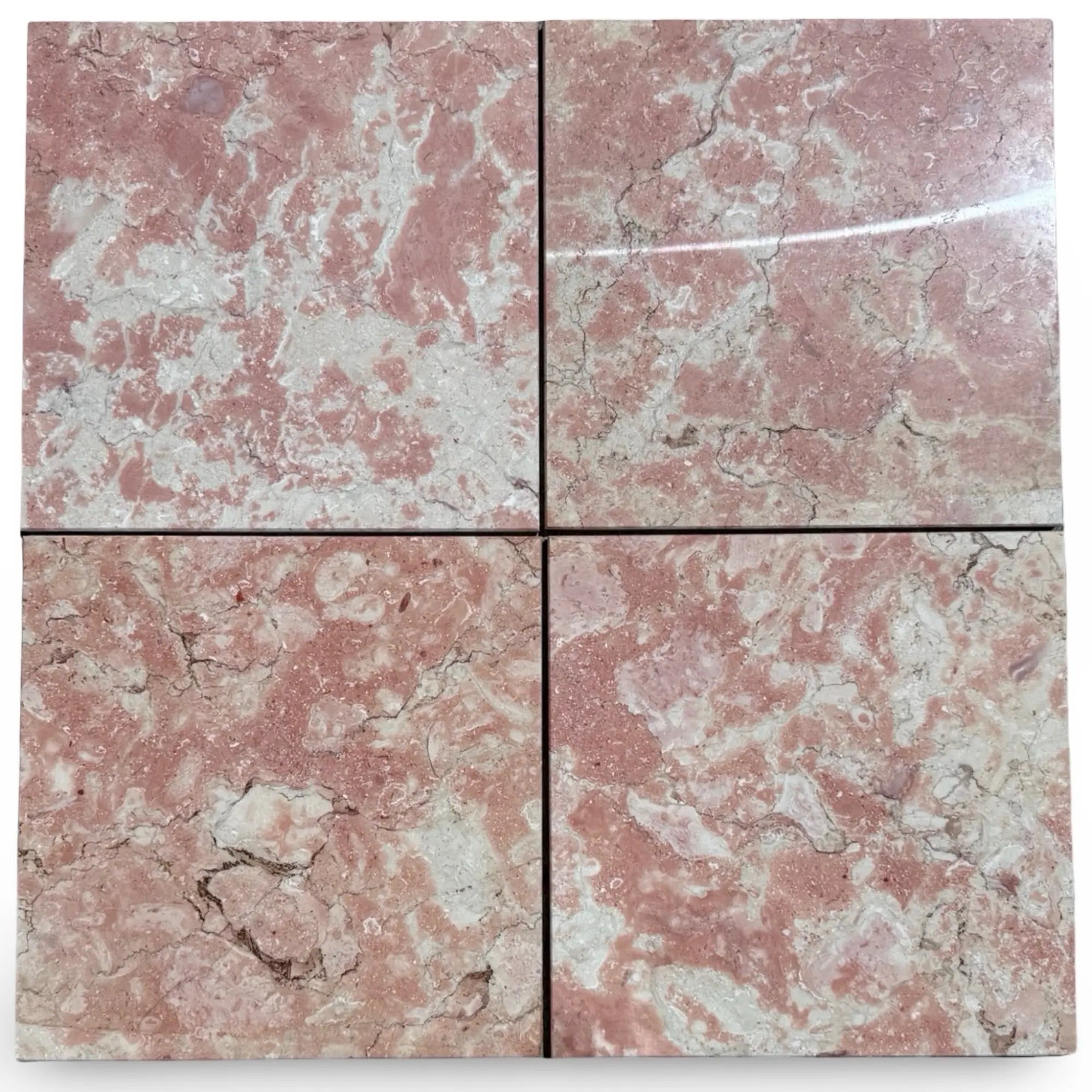 Rosé Aurora Marble
Rosé Aurora Marble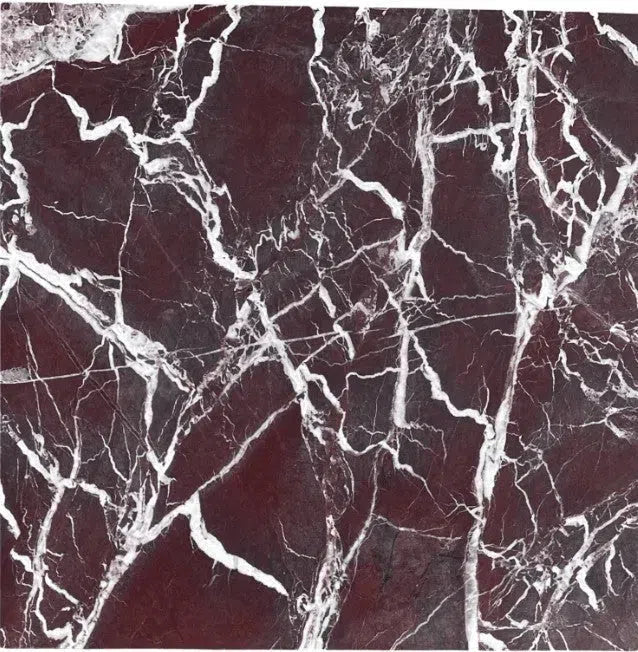 Rosso Levanto Marble
Rosso Levanto Marble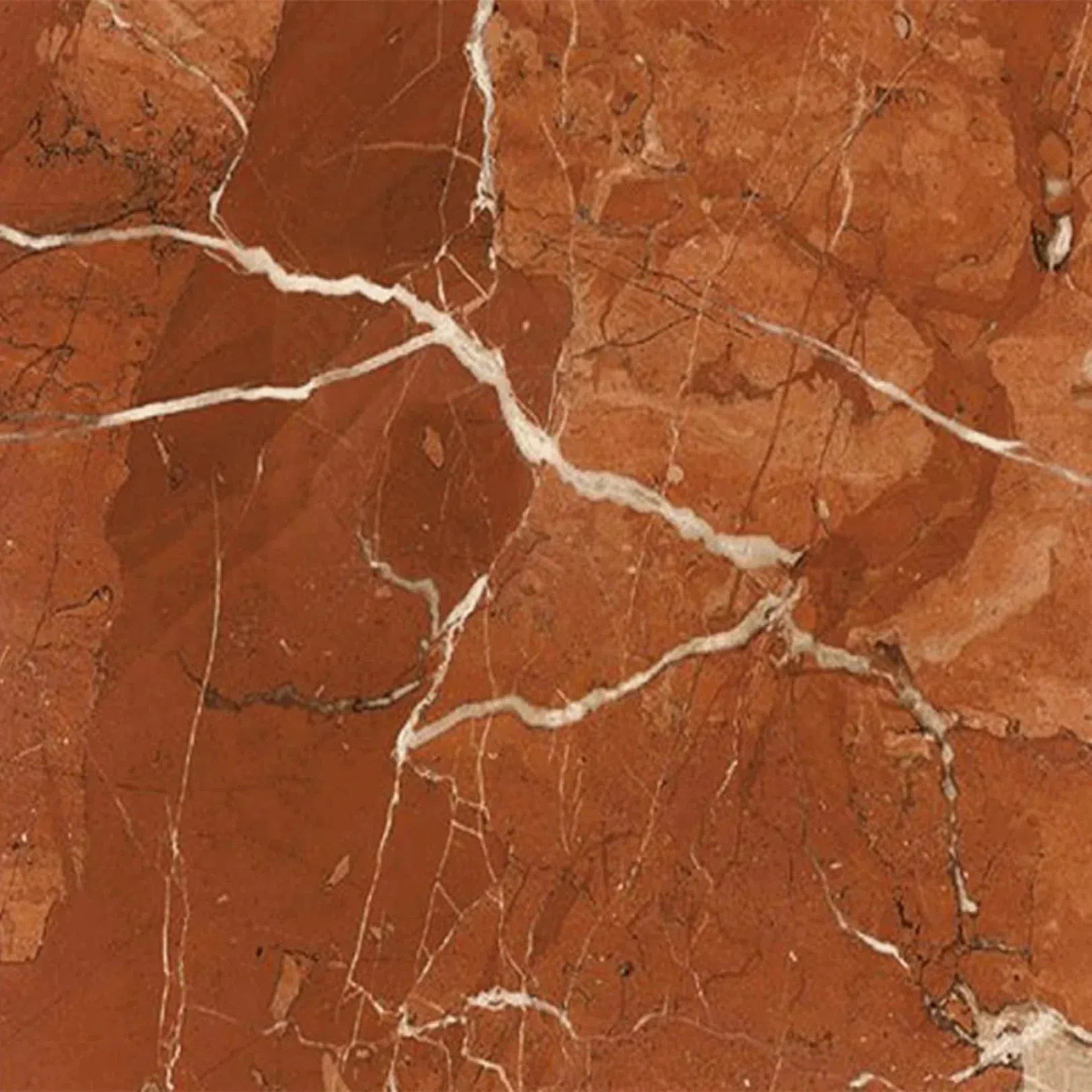 Rojo Alicante Marble
Rojo Alicante Marble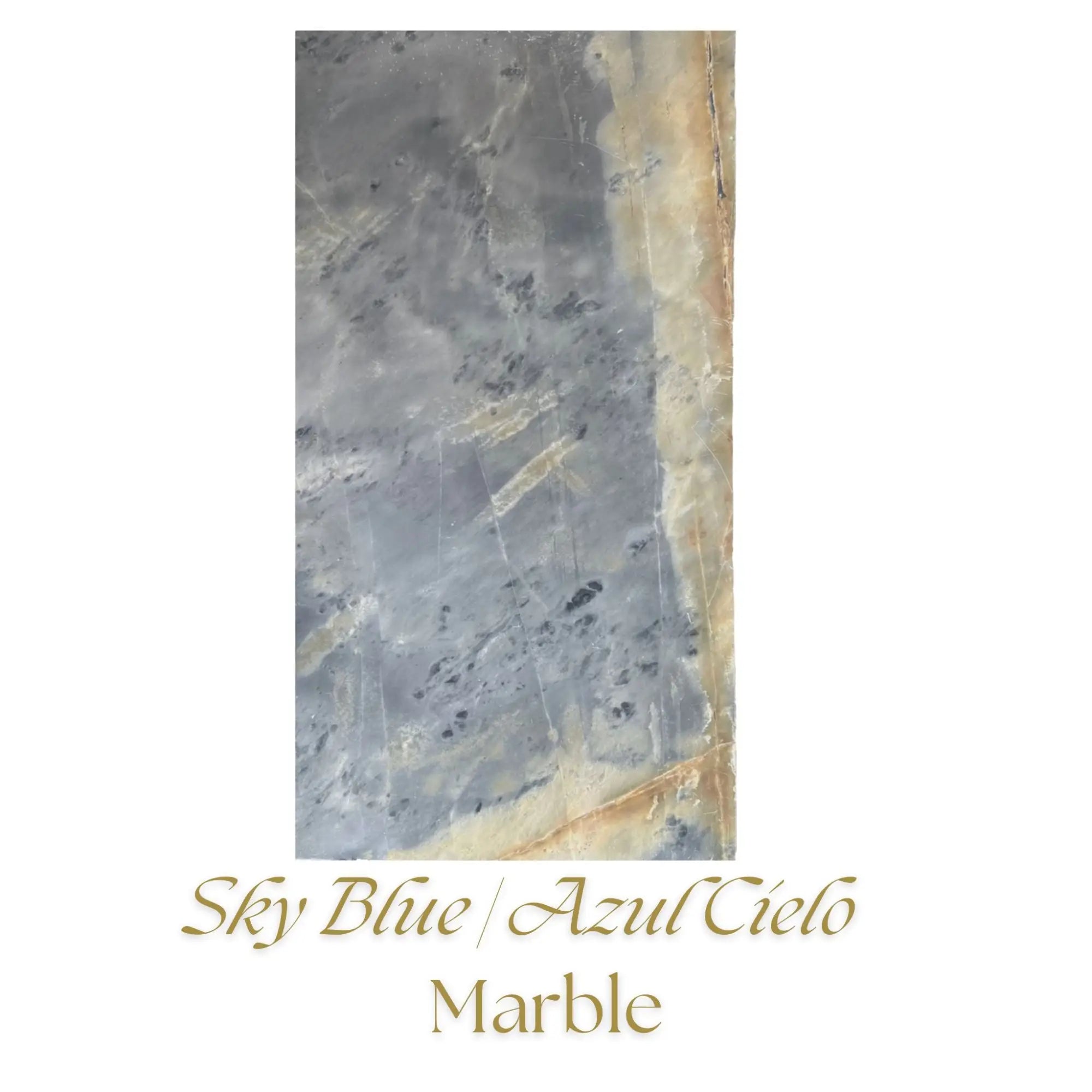 Sky Blue | Azul Cielo Marble
Sky Blue | Azul Cielo Marble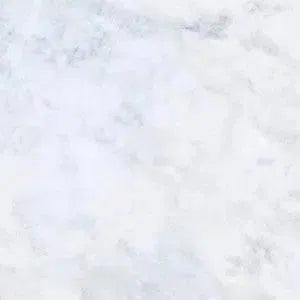 Snow White (Afyon White) Marble
Snow White (Afyon White) Marble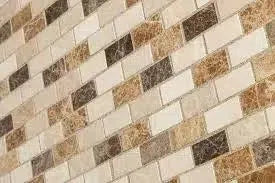 Spanish Mix Marble
Spanish Mix Marble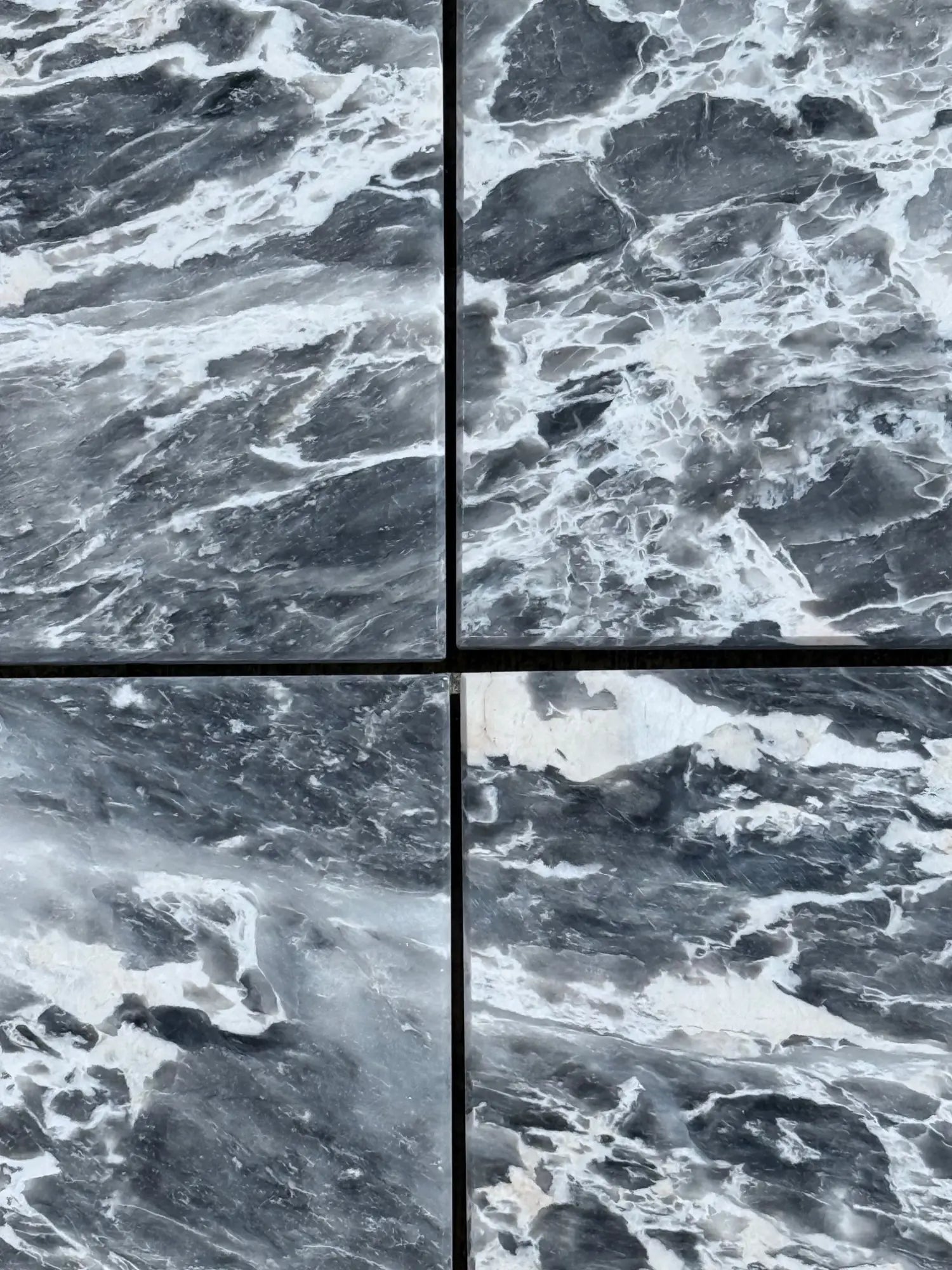 Storm Gray Marble
Storm Gray Marble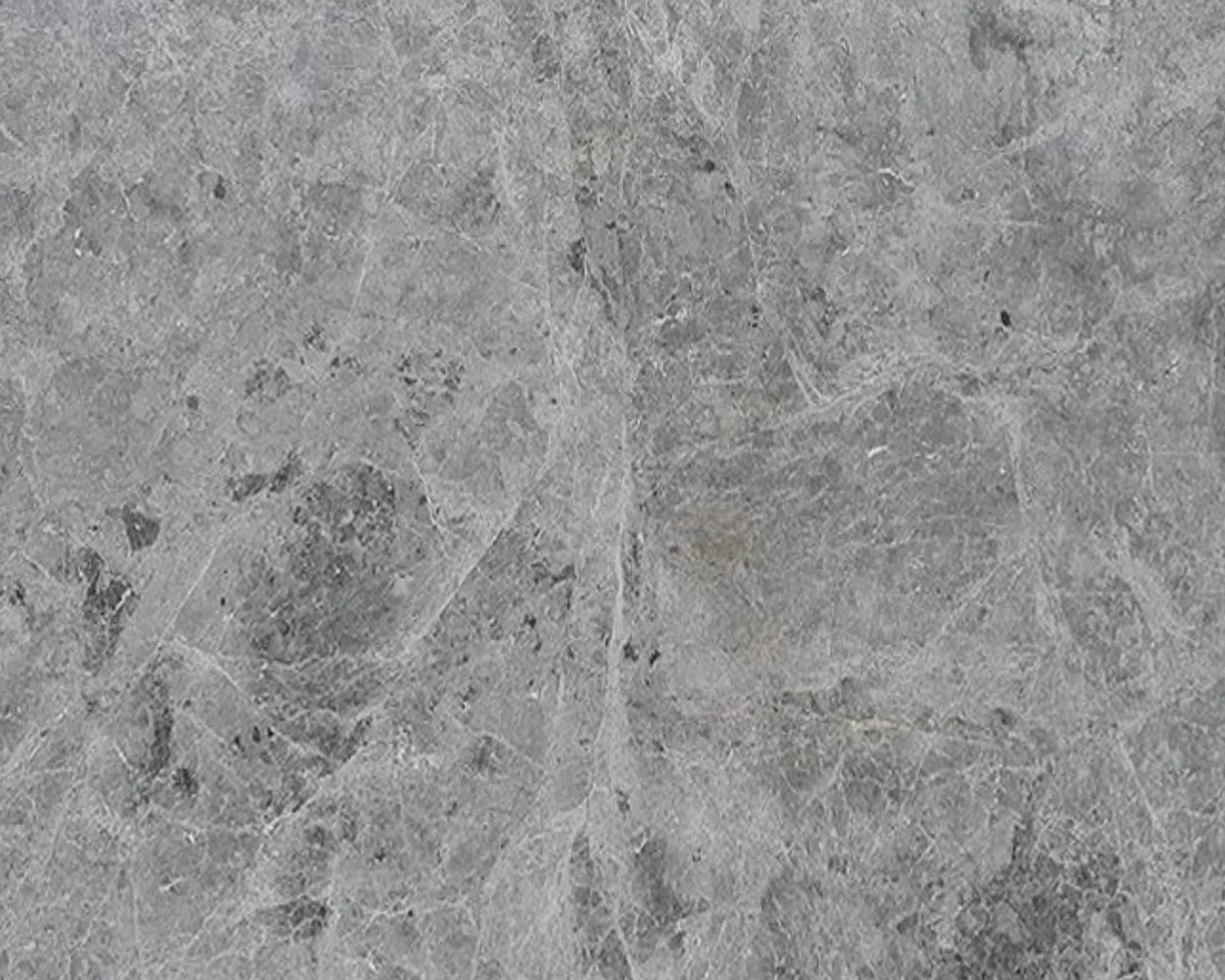 Tundra Gray (Atlantic Gray) Marble
Tundra Gray (Atlantic Gray) Marble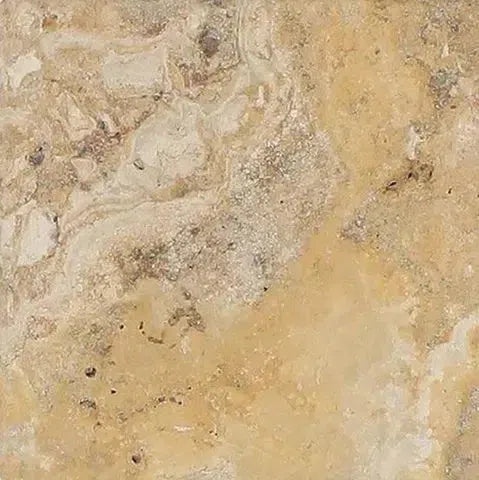 Valencia Travertine
Valencia Travertine Valerenga Travertine
Valerenga Travertine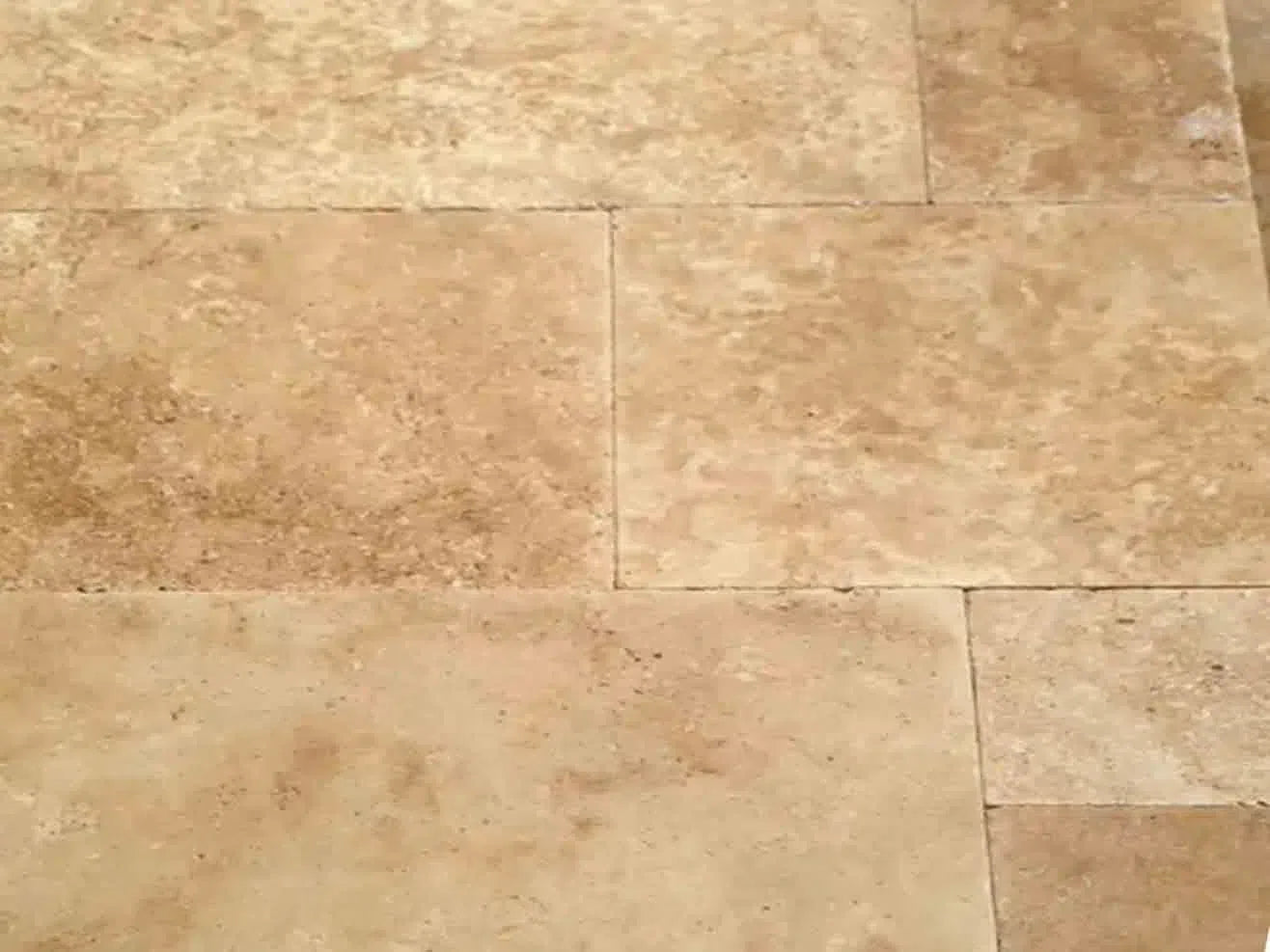 Walnut Travertine
Walnut Travertine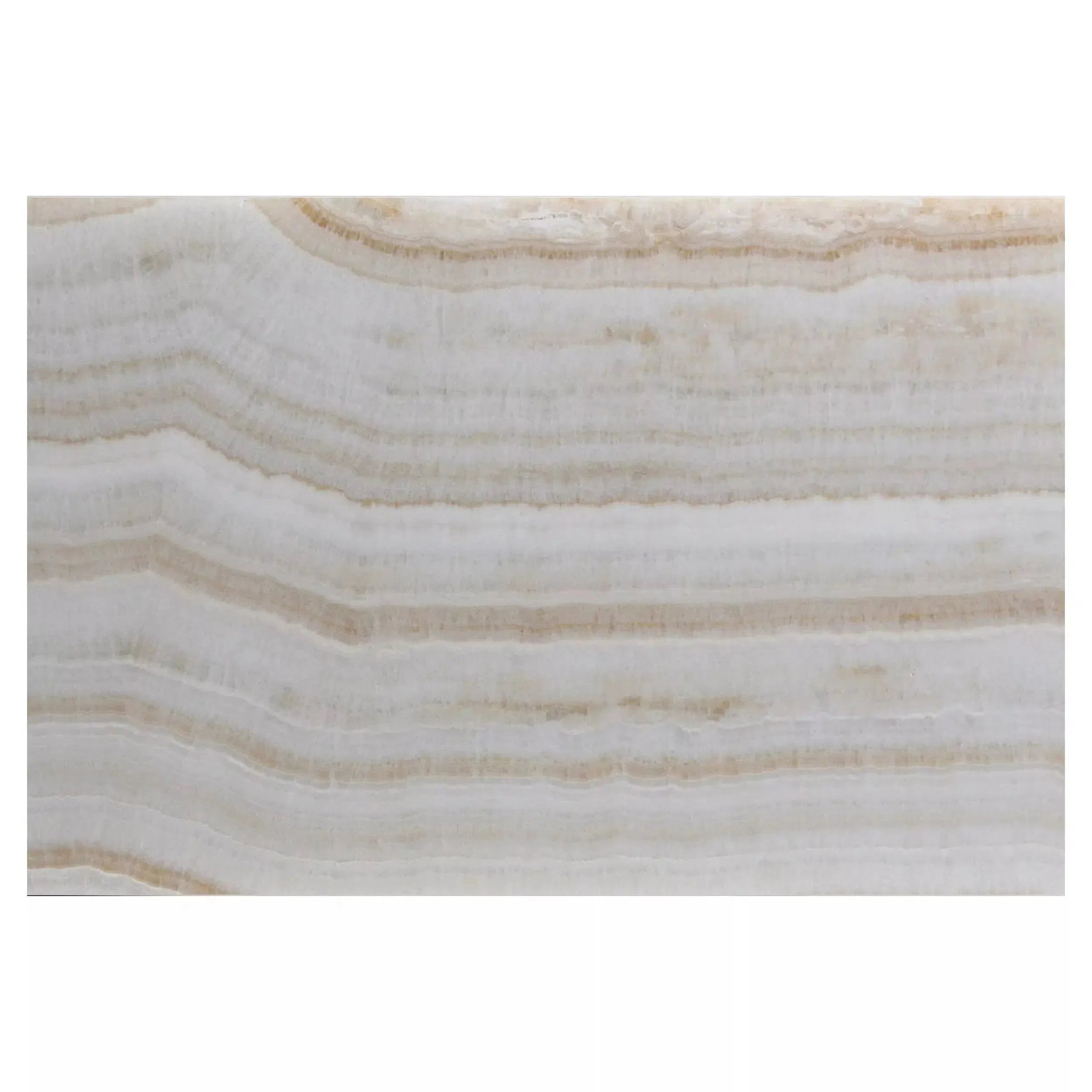 White Onyx Marble
White Onyx Marble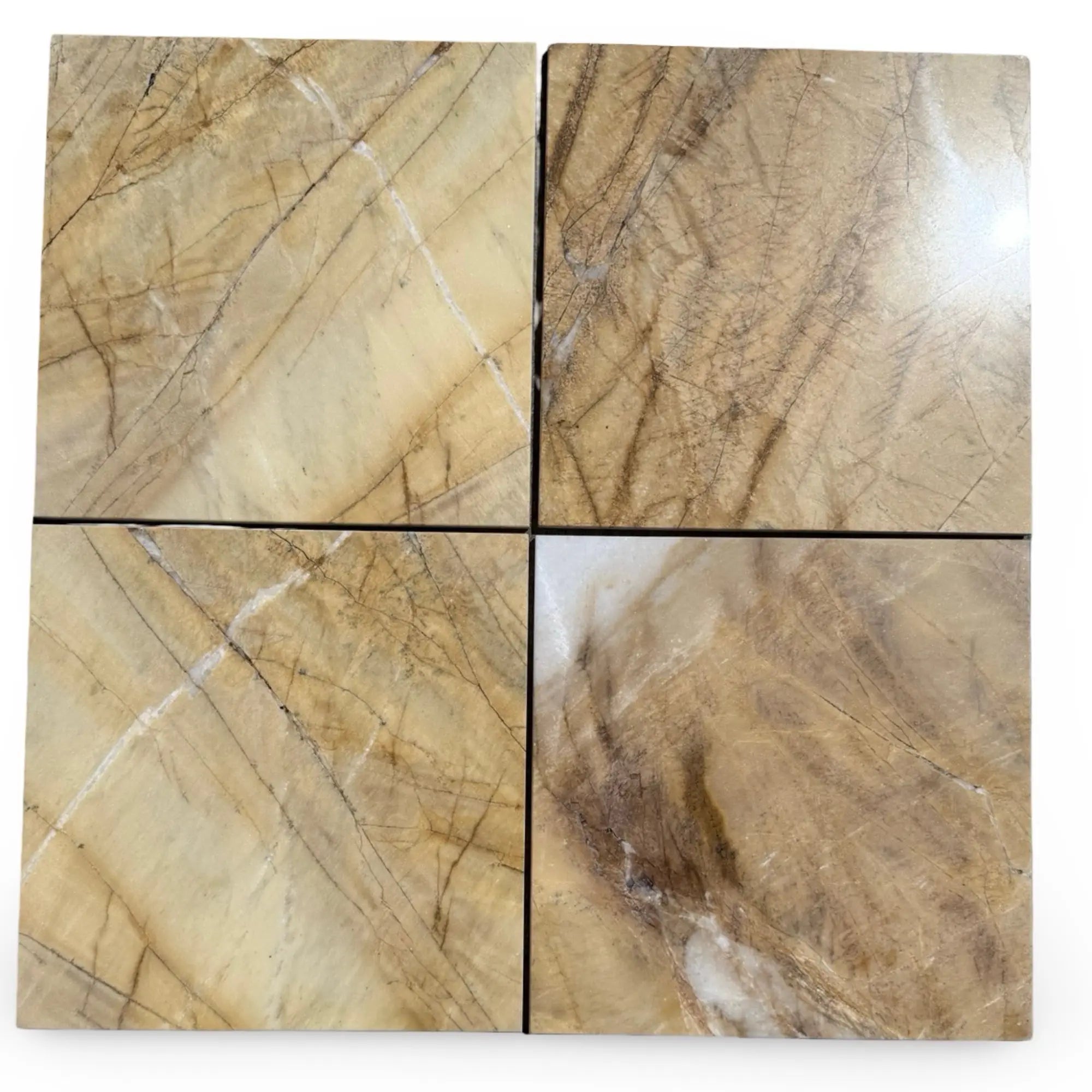 Golden Horizon Marble
Golden Horizon Marble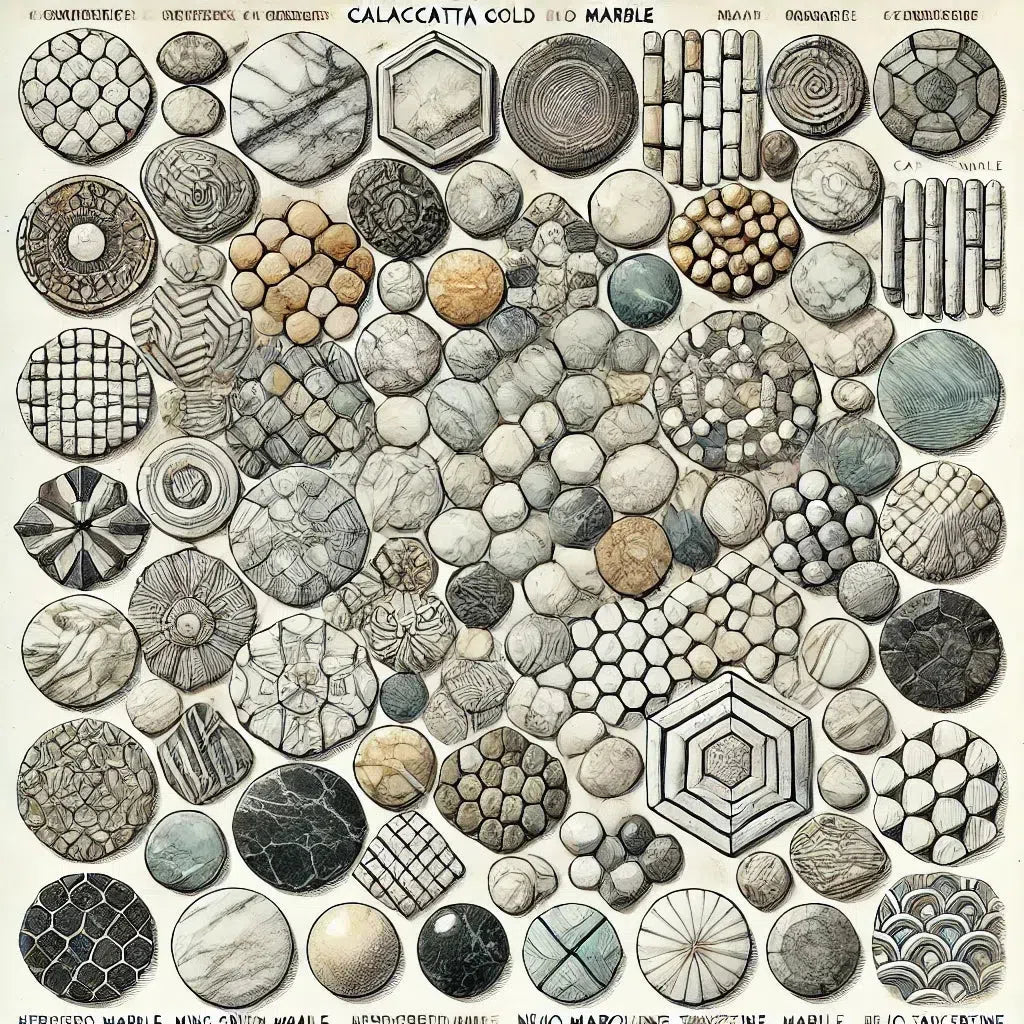 Shop By Type
Shop By Type
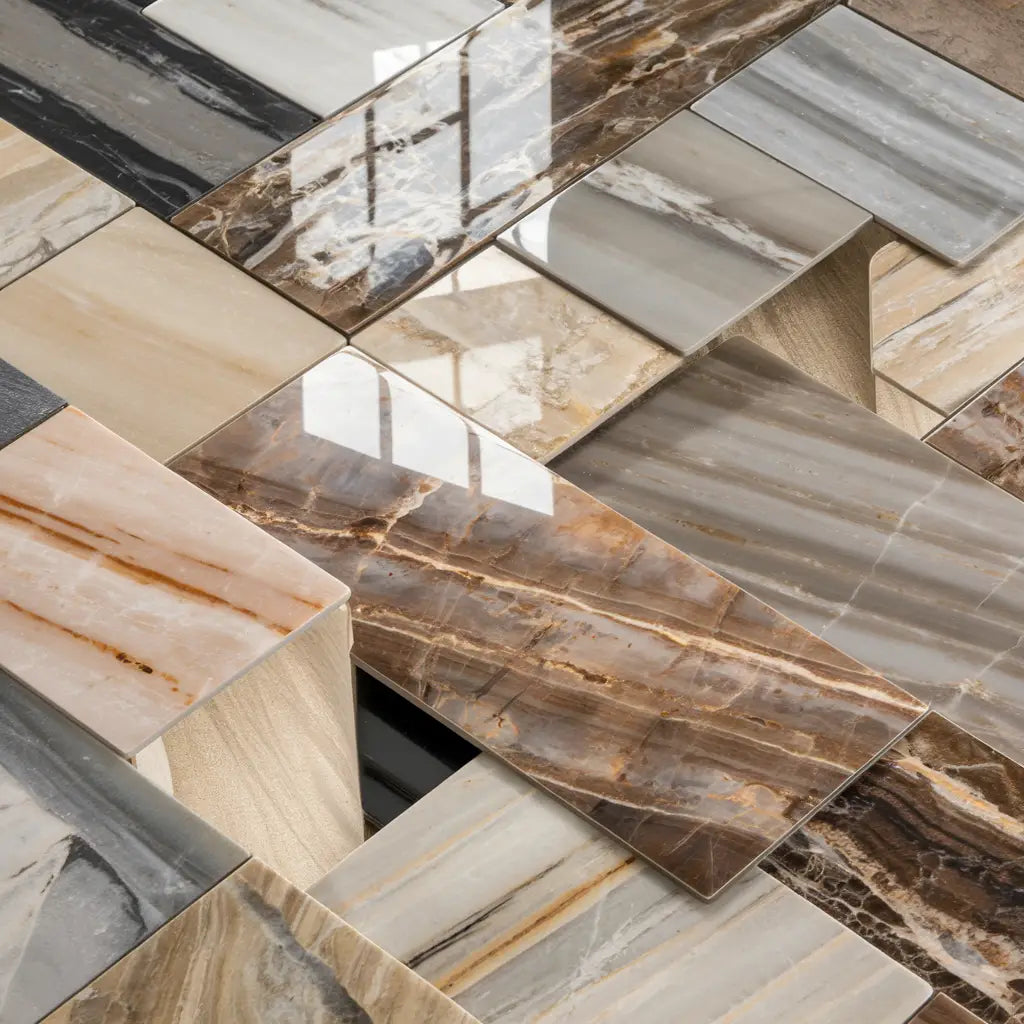 Marble Tiles
Marble Tiles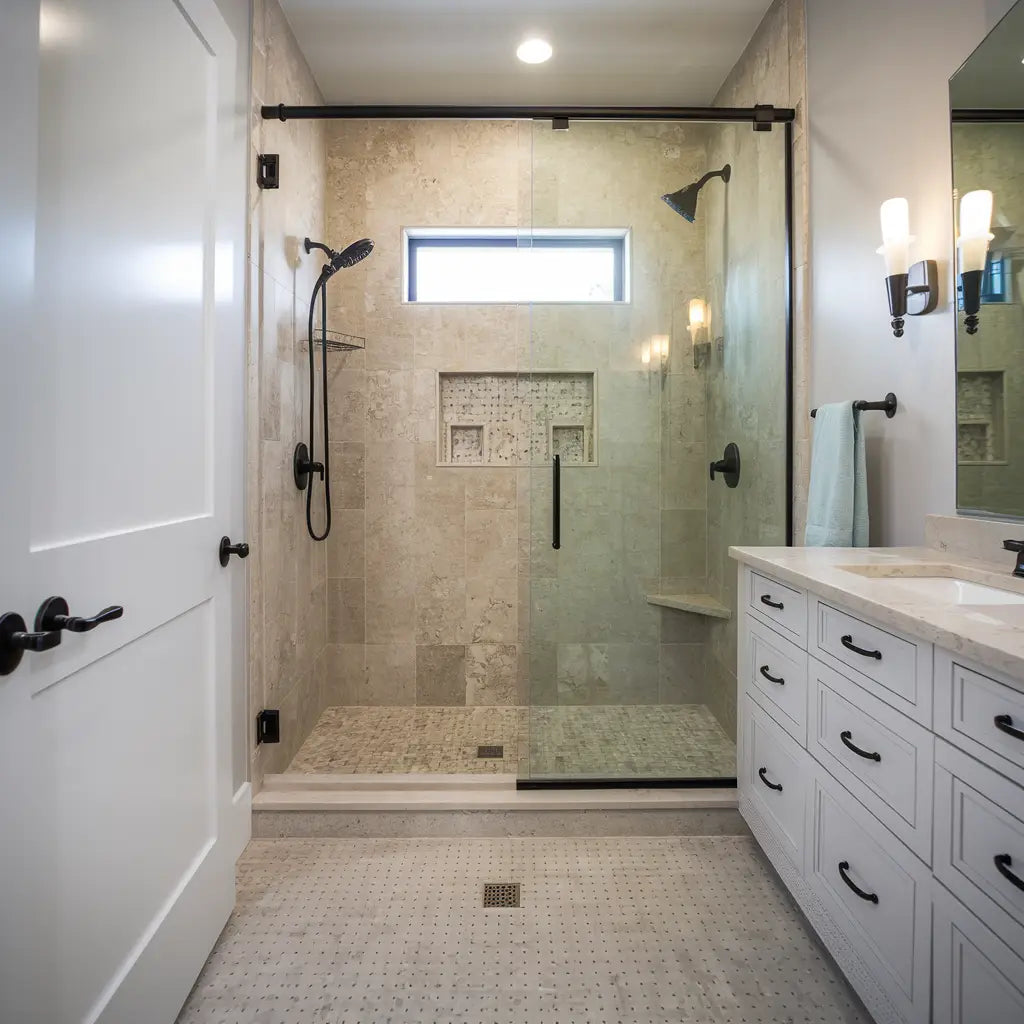 Marble Mosaic
Marble Mosaic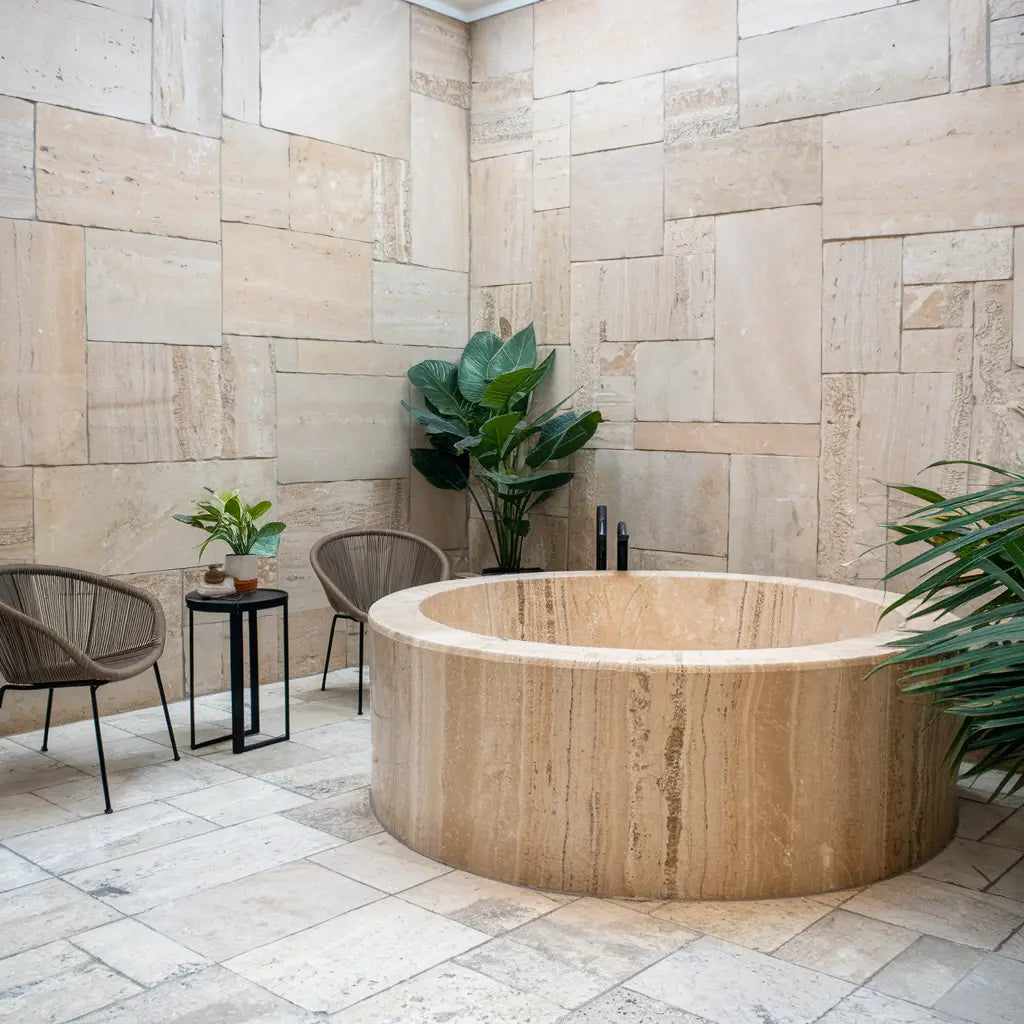 Travertine Tiles
Travertine Tiles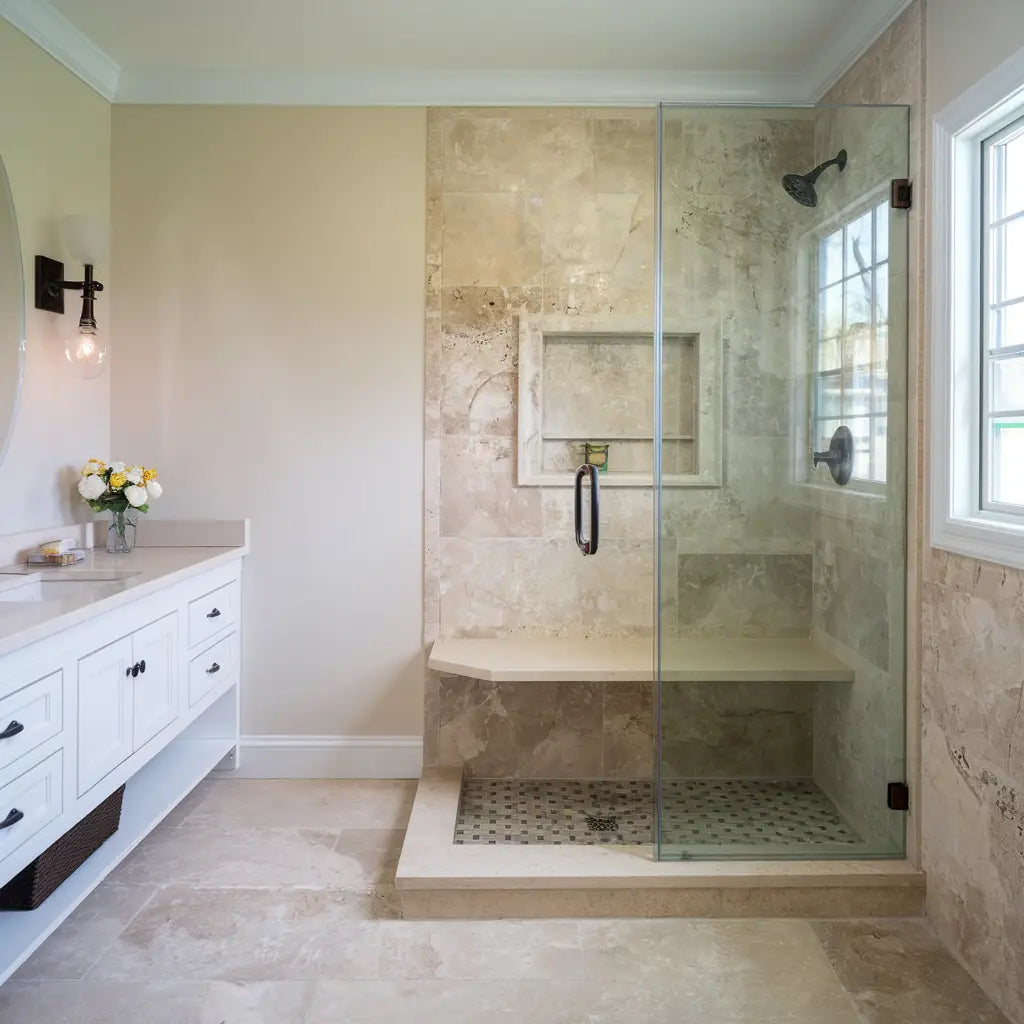 Travertine Mosaic
Travertine Mosaic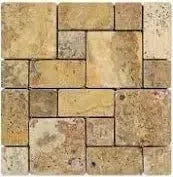 4 pcs Versailles Pattern / French Pattern Set
4 pcs Versailles Pattern / French Pattern Set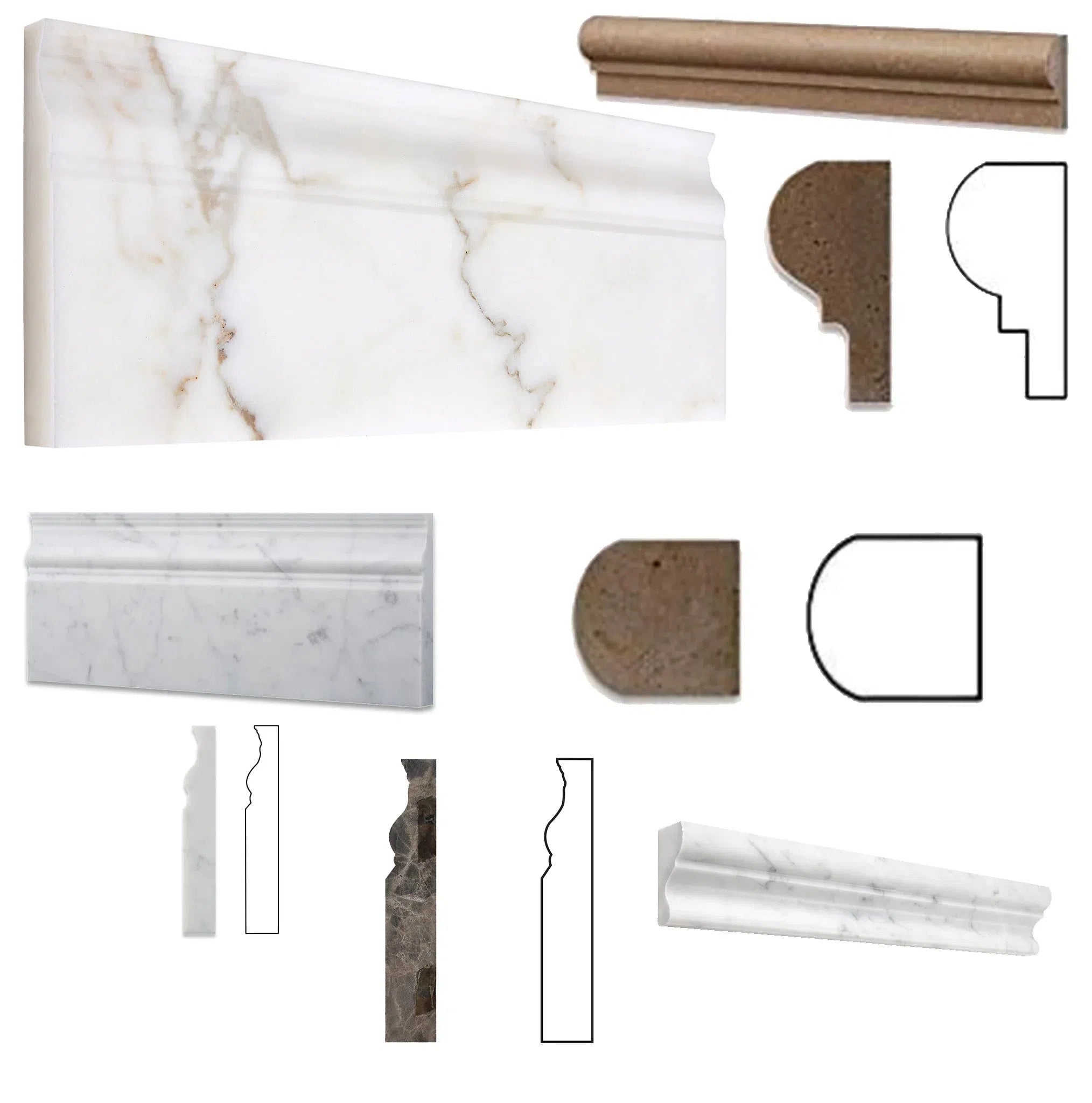 Molding/Trim
Molding/Trim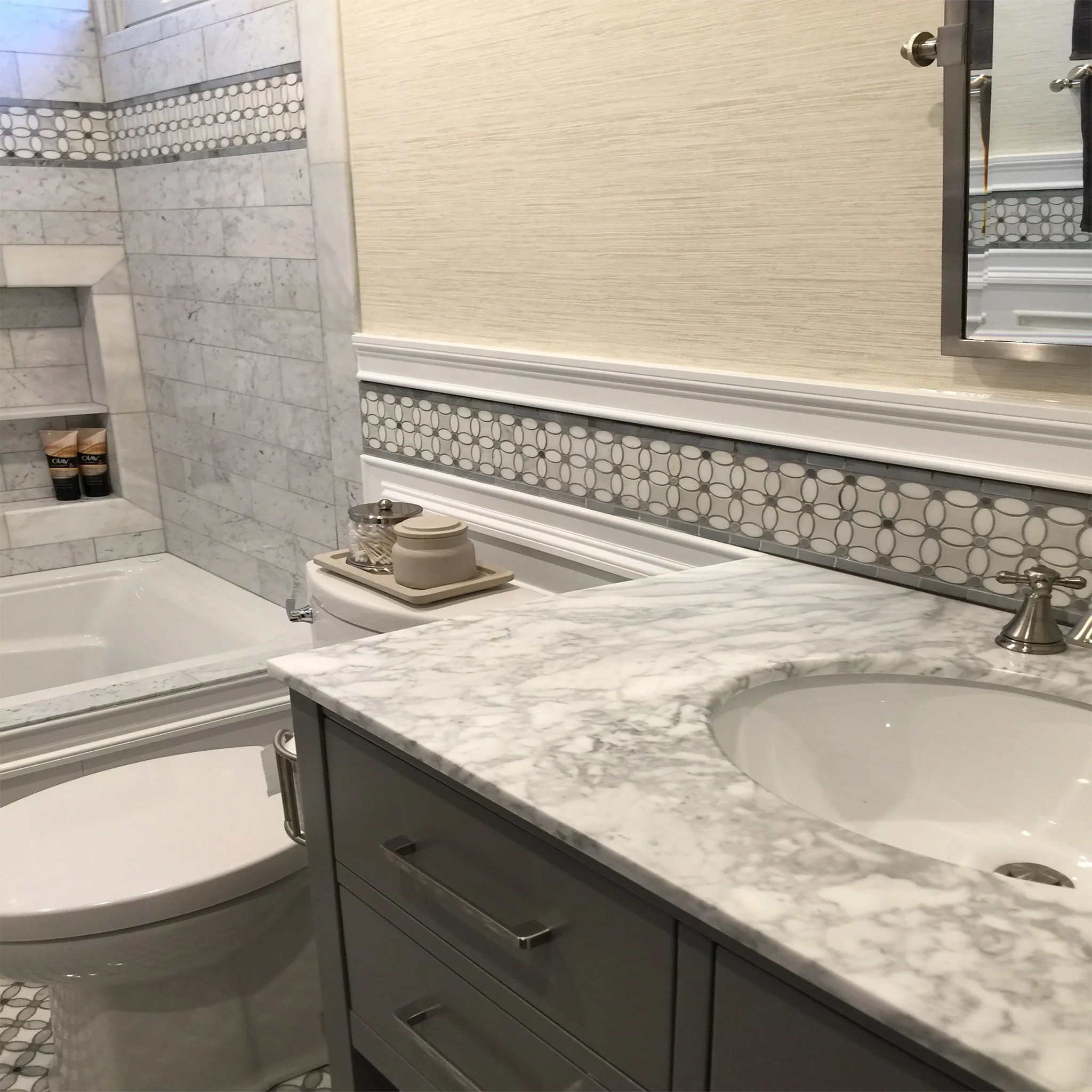 Border/Listello
Border/Listello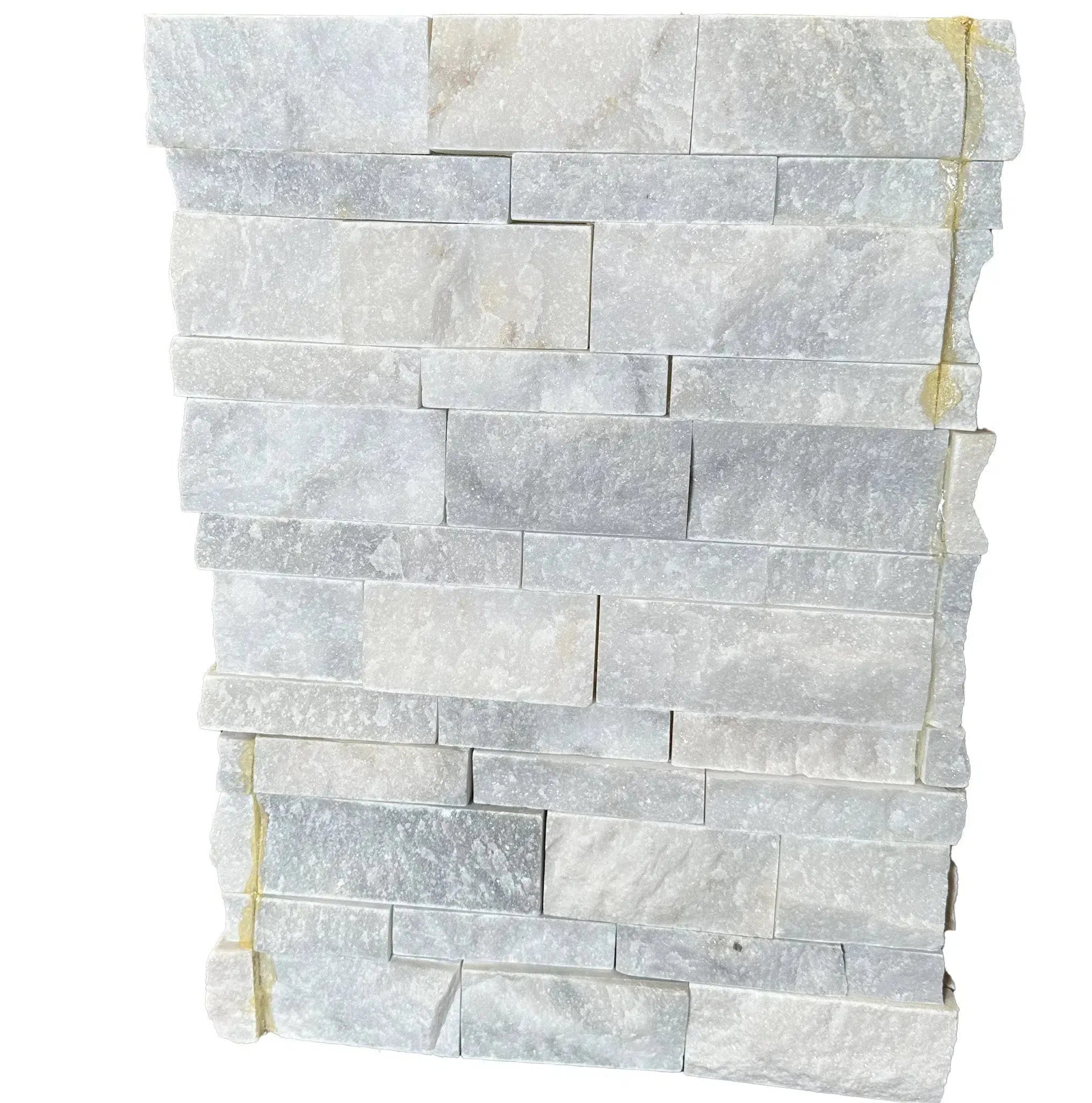 Ledger-Panel
Ledger-Panel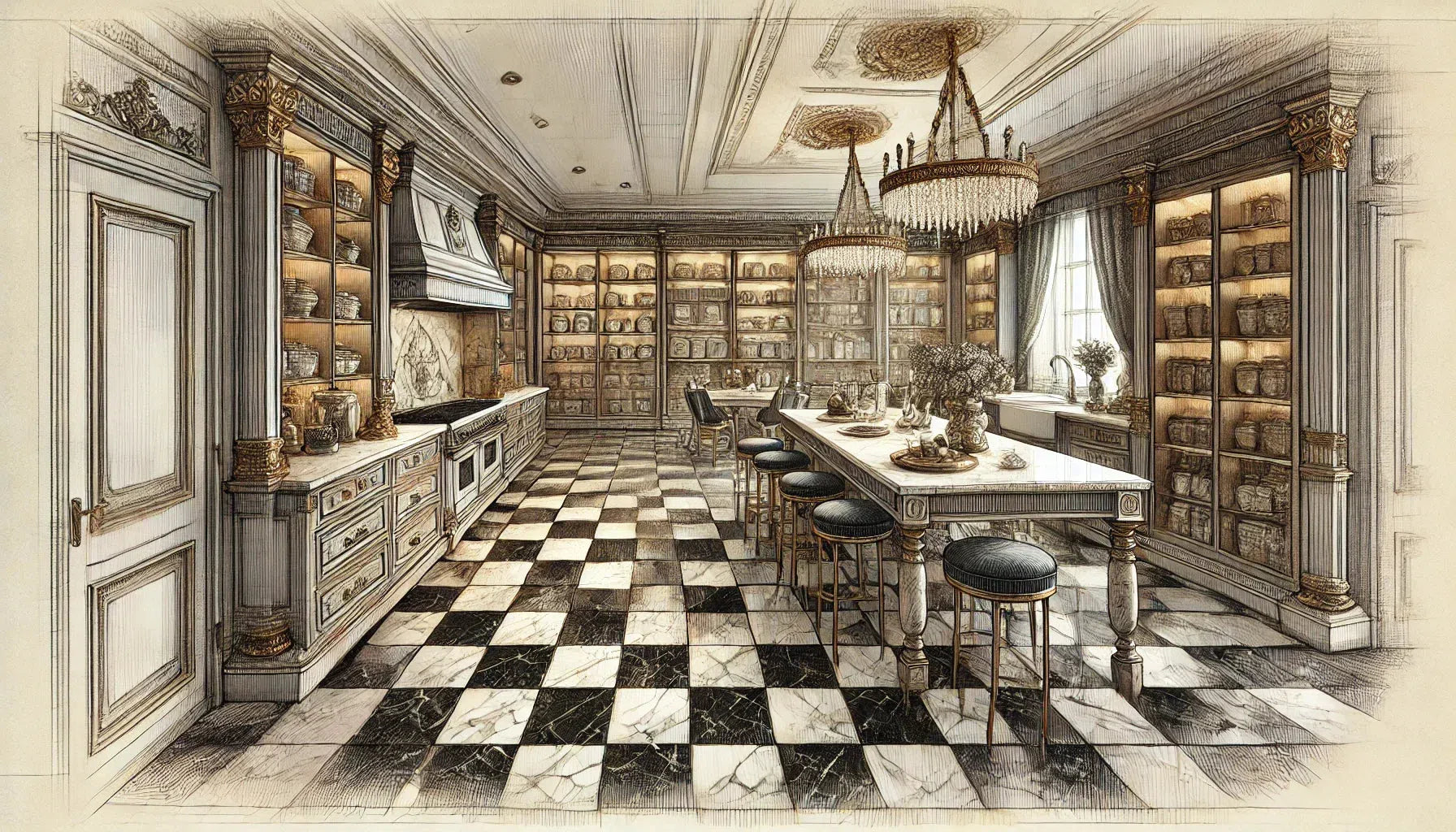 Checkerboard
Checkerboard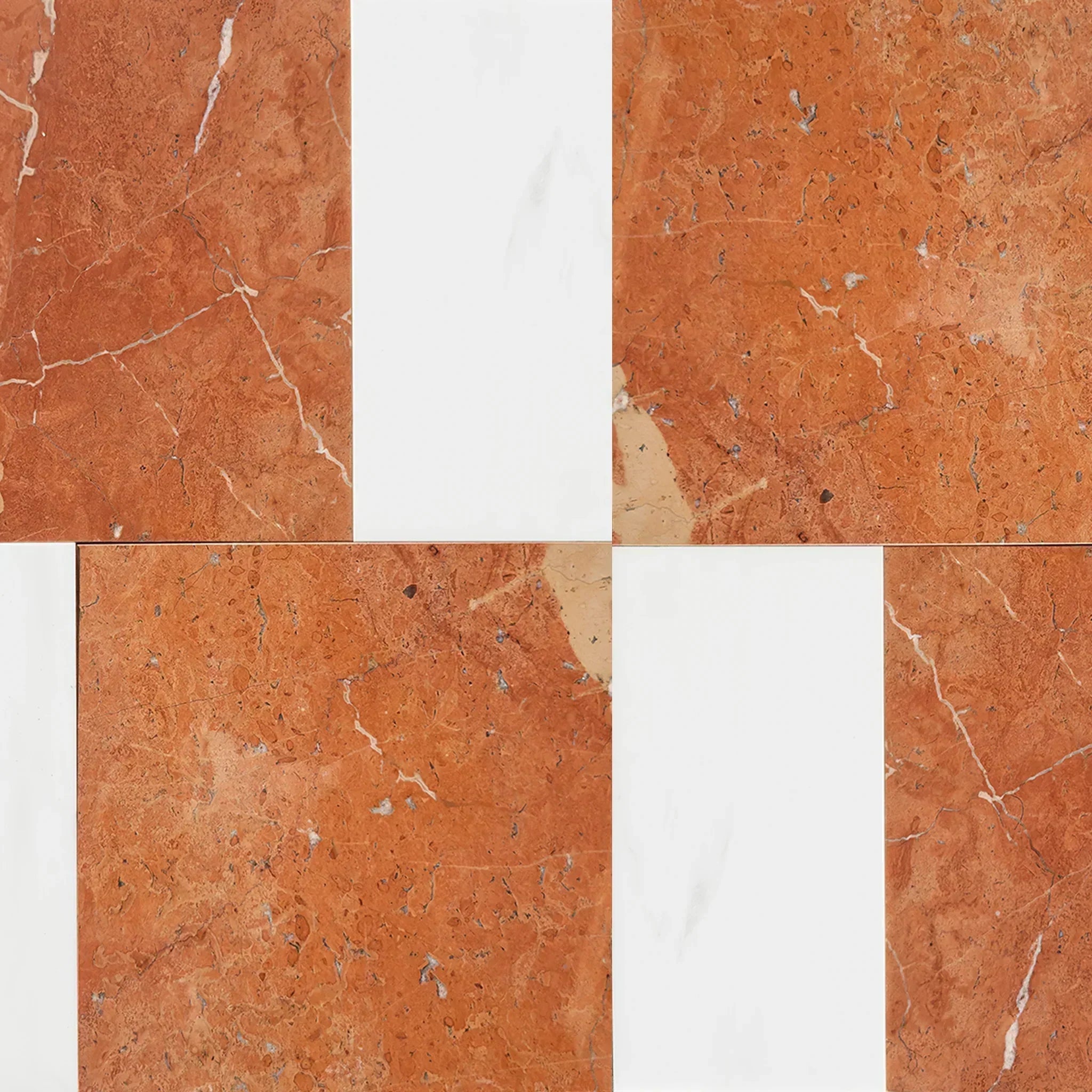 Patterned Tile Collection
Patterned Tile Collection 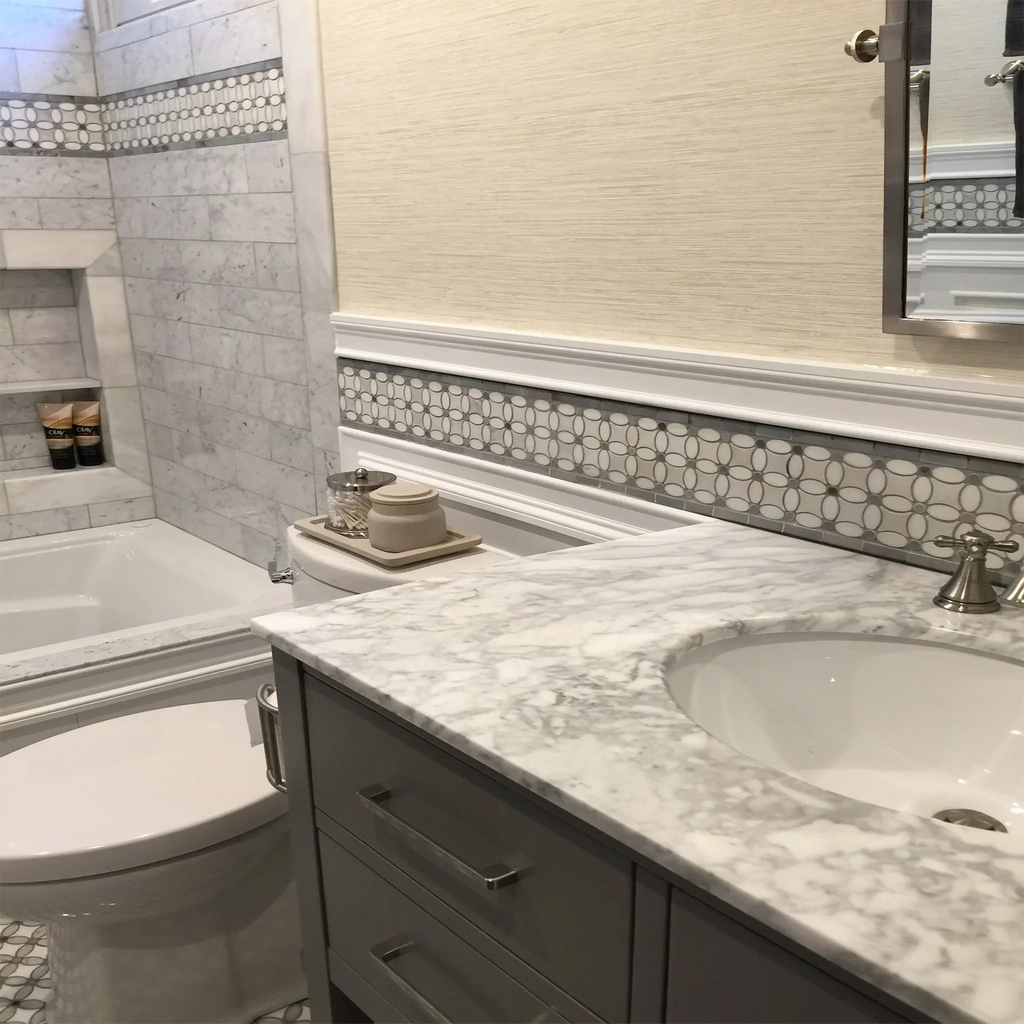 Shop By Finish
Shop By Finish
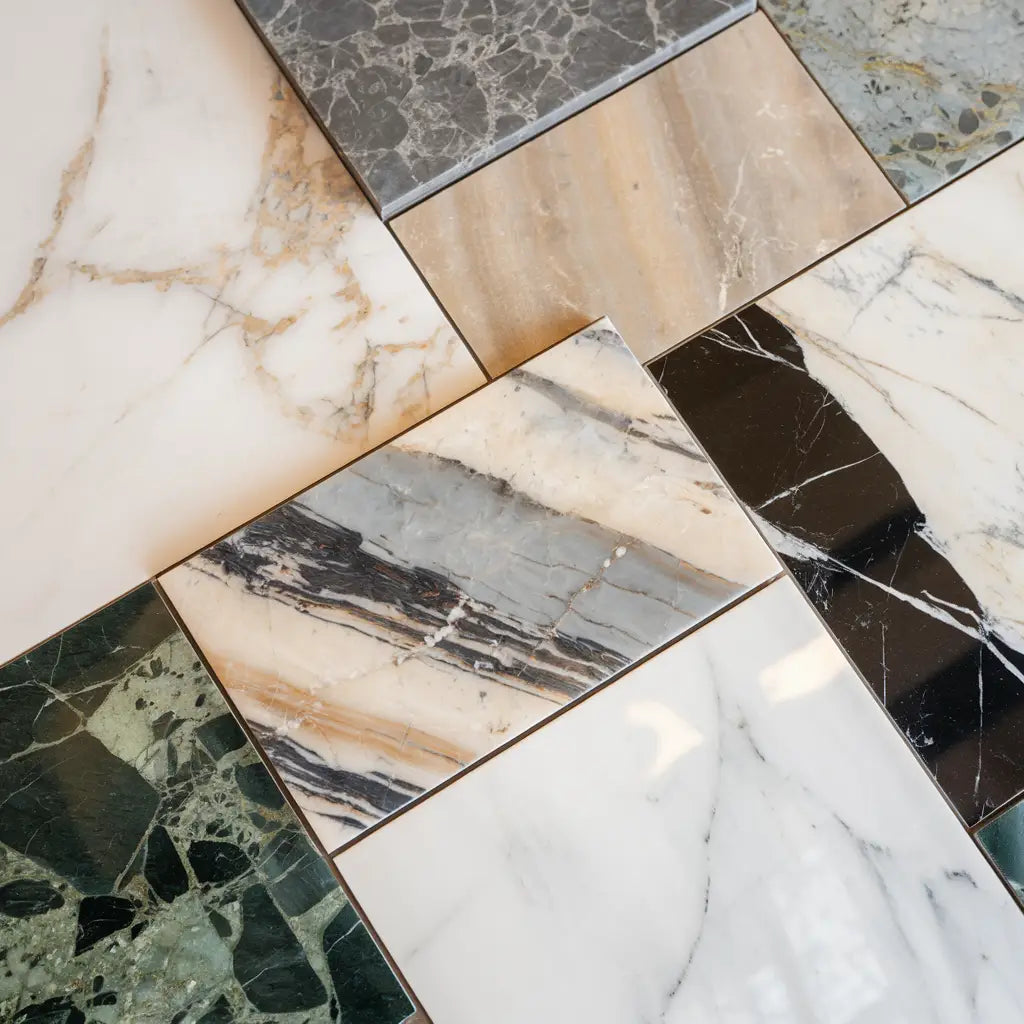 Polished
Polished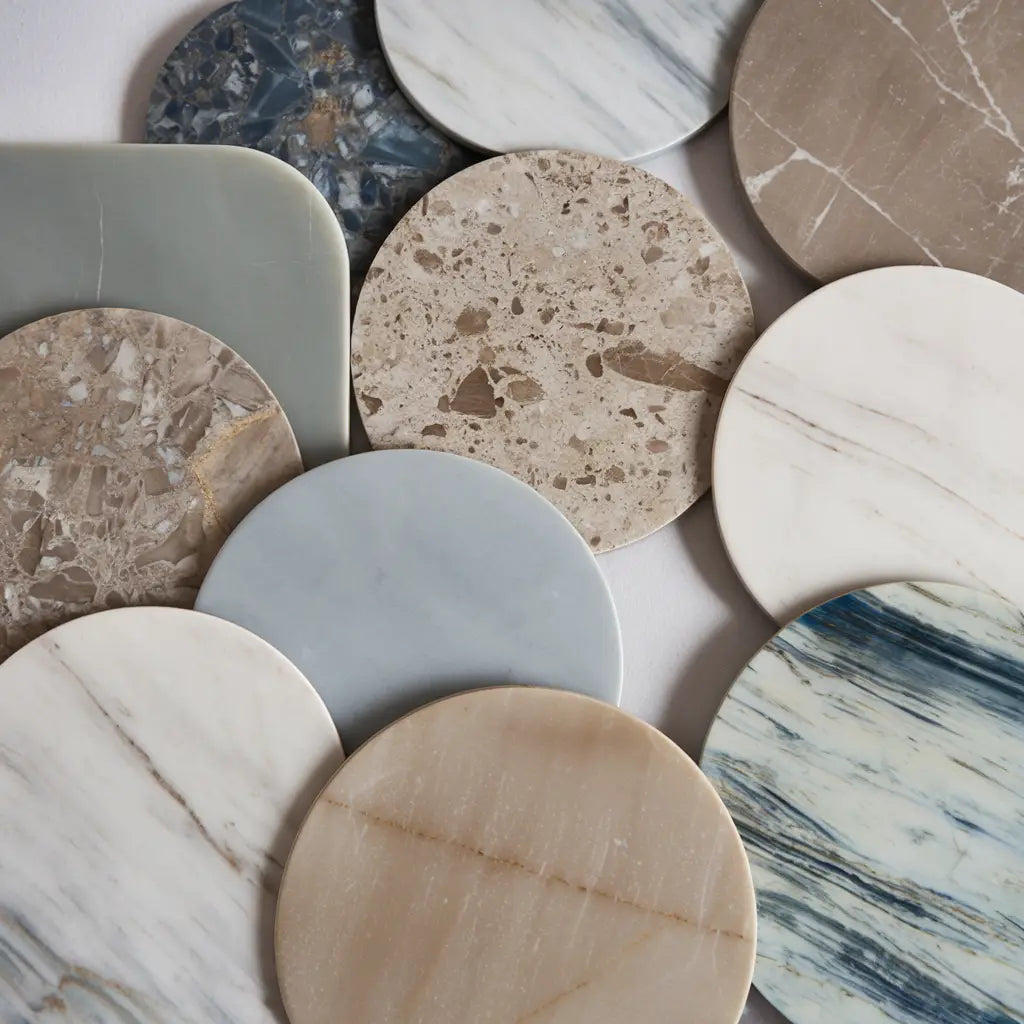 Honed
Honed Brushed
Brushed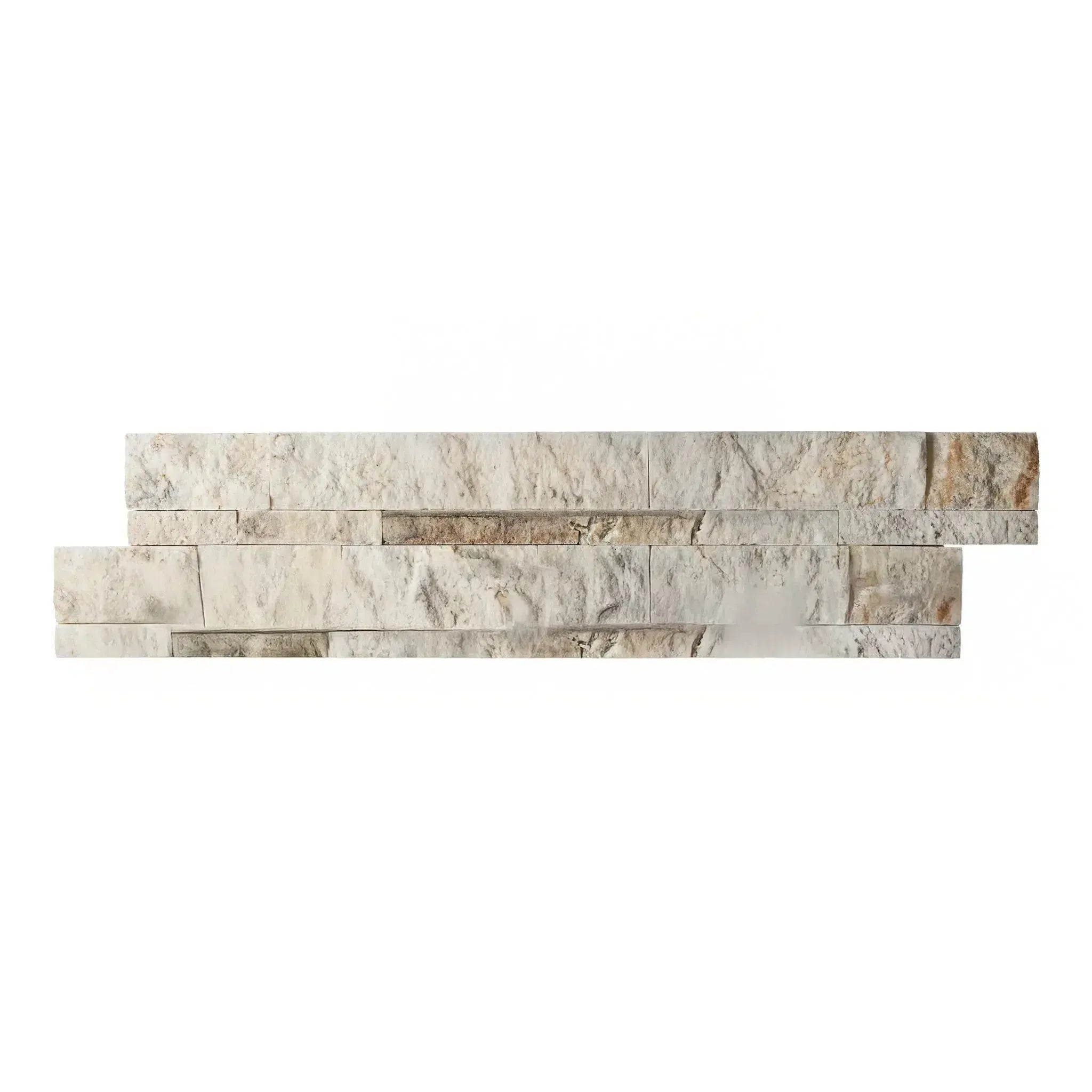 Split Face
Split Face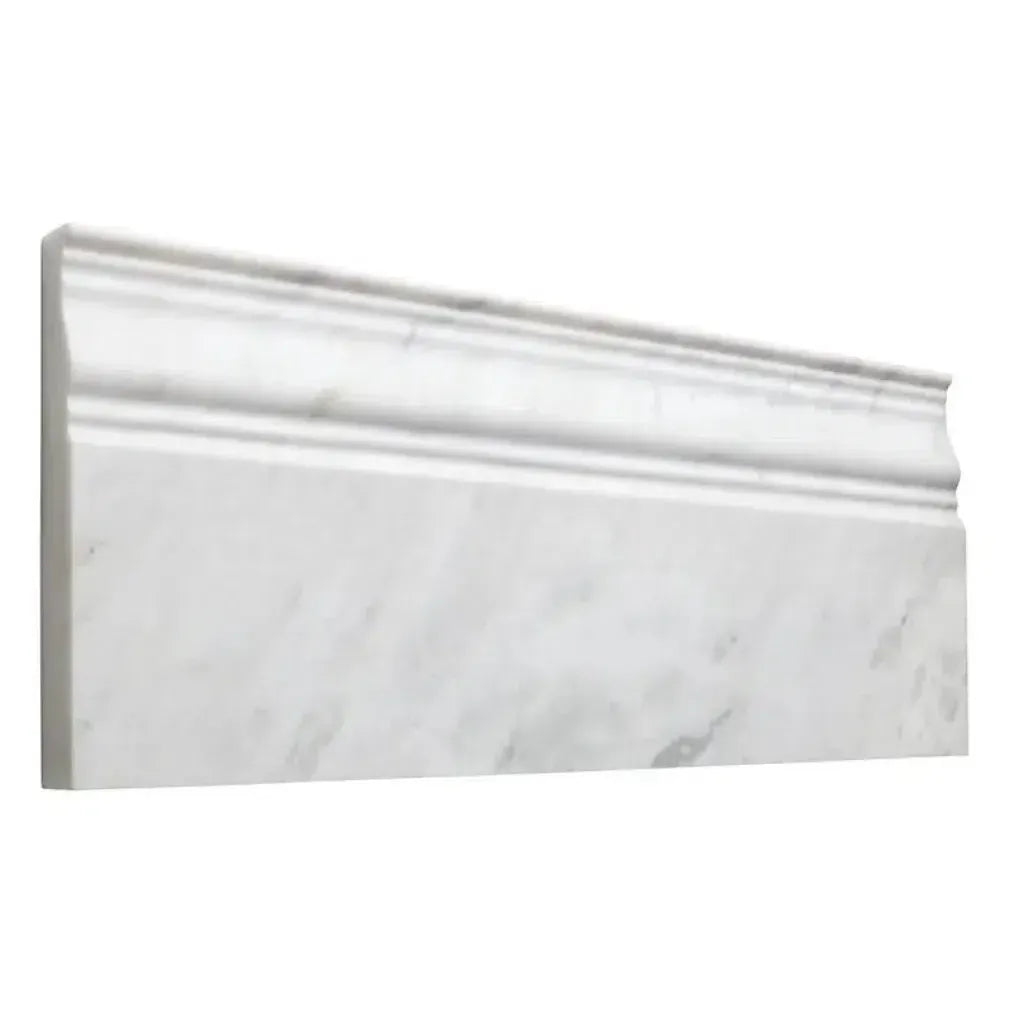 Textured
Textured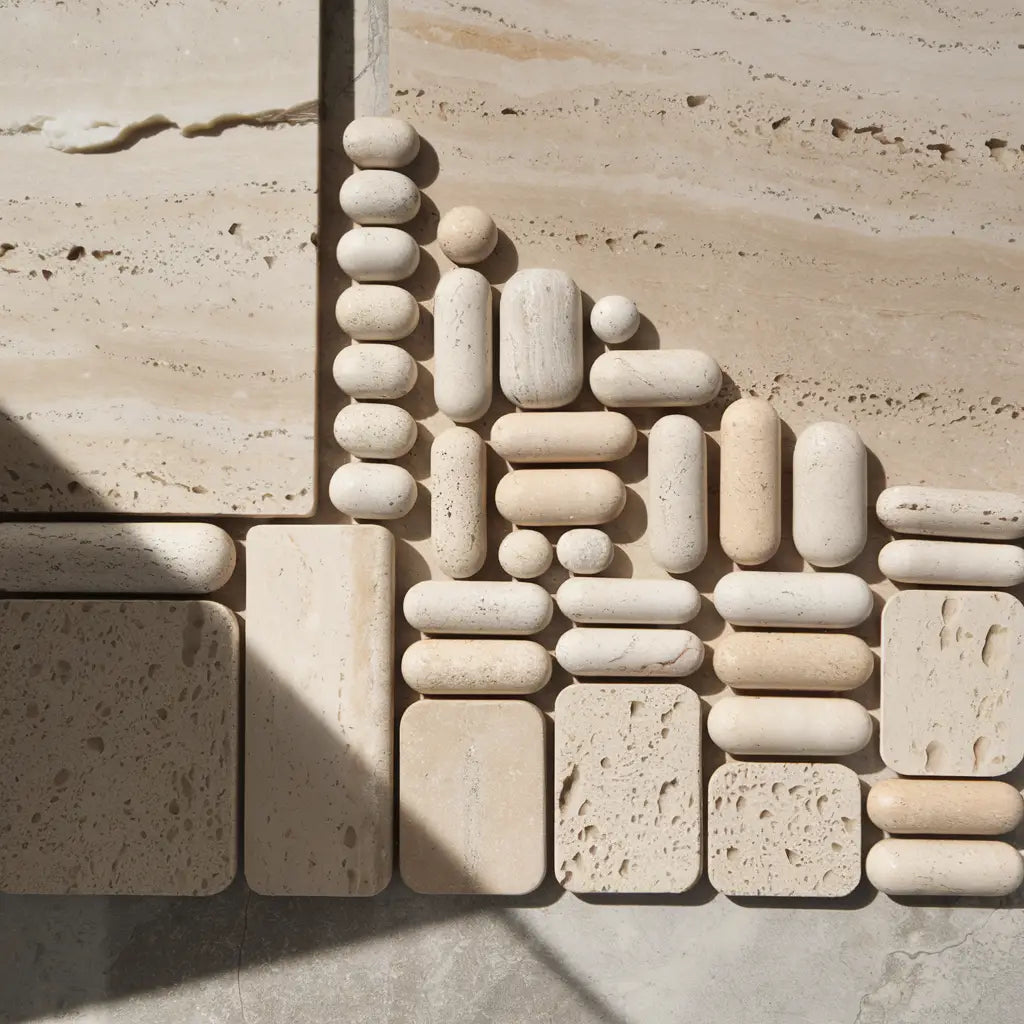 Tumbled
Tumbled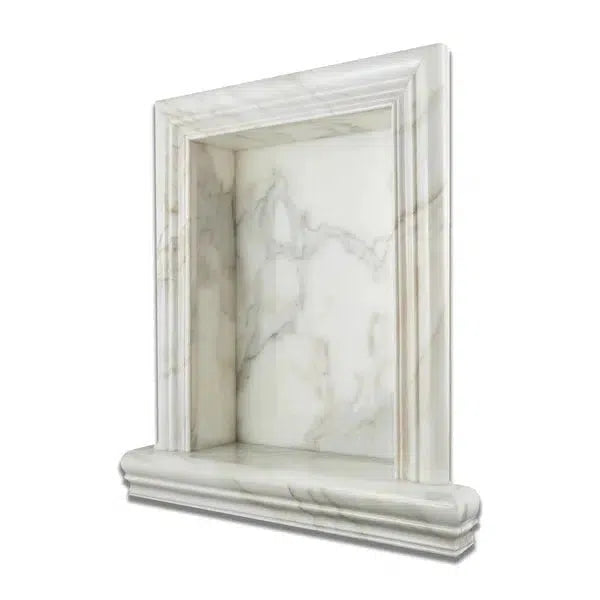 Accessories
Accessories
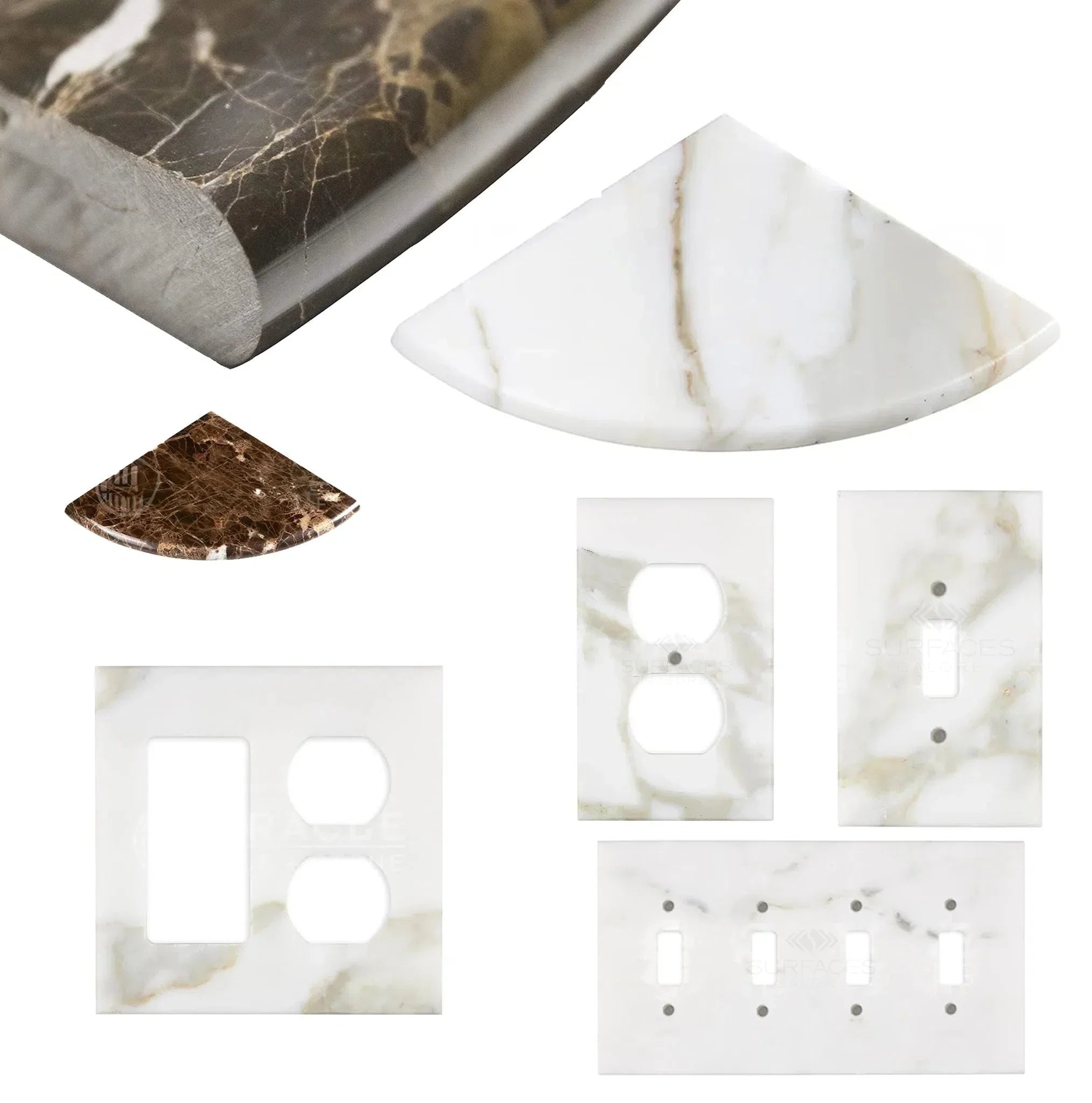 Wall Plate / Switch Plate
Wall Plate / Switch Plate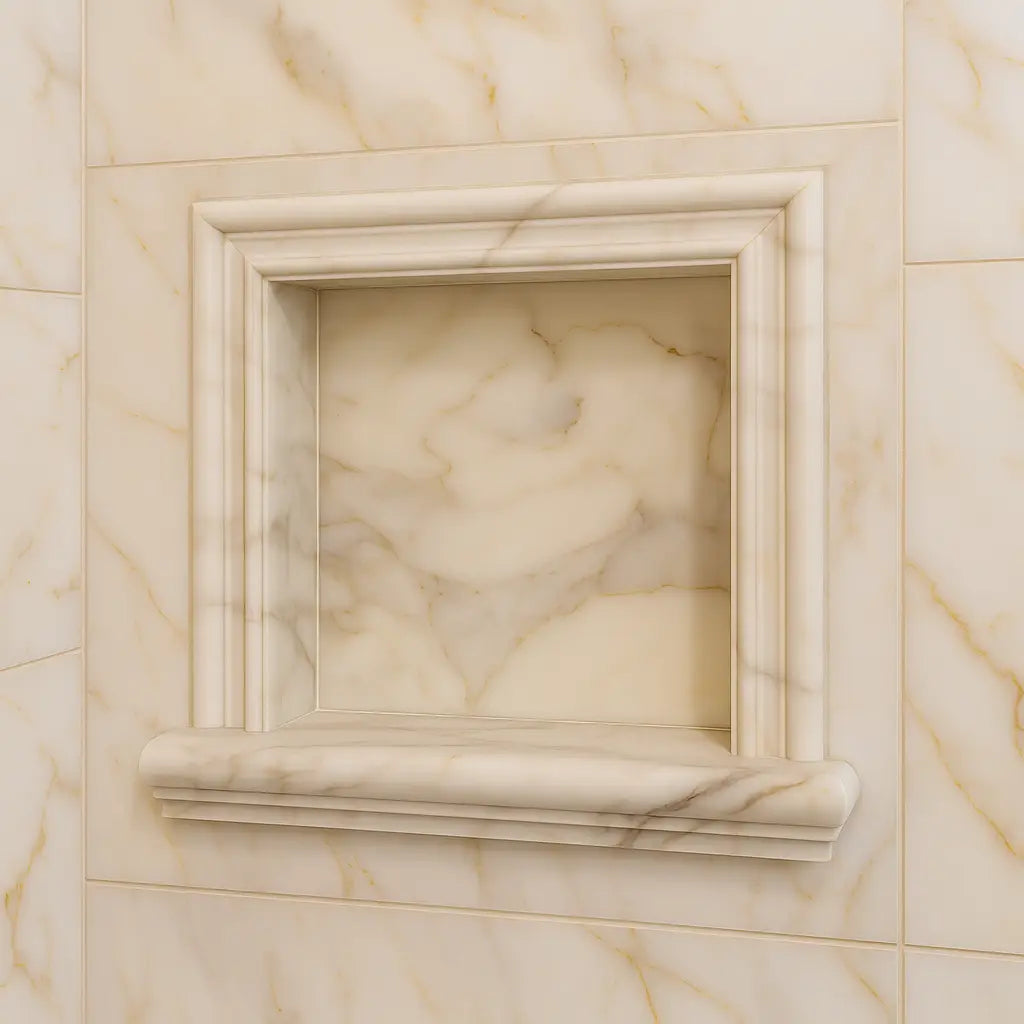 Shampoo Niche
Shampoo Niche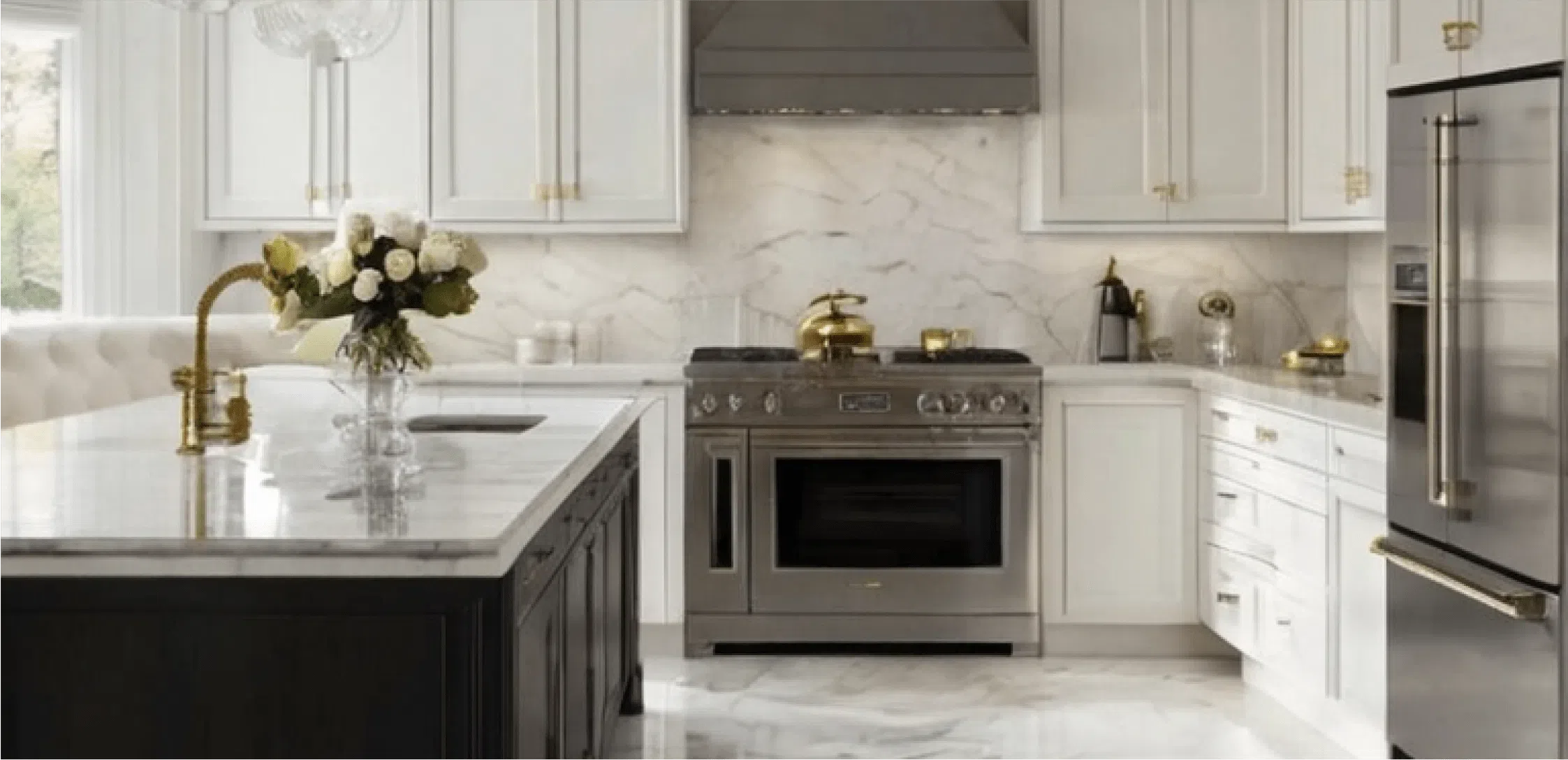 Corner Shelf
Corner Shelf Clearance
Clearance
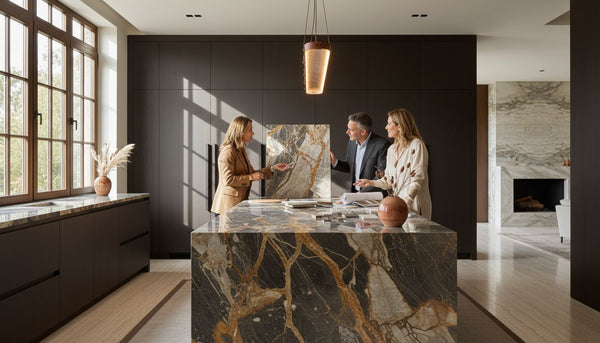

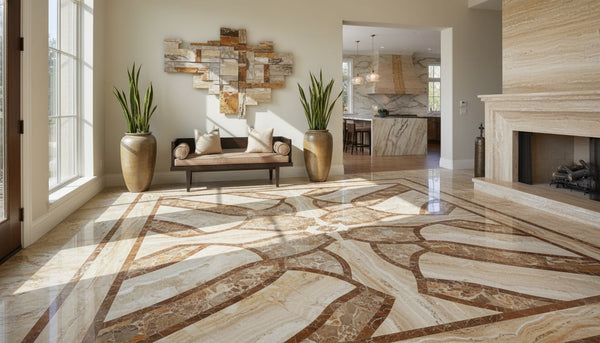

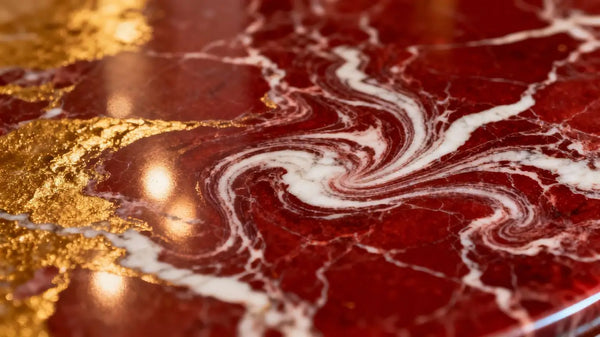
Leave a comment